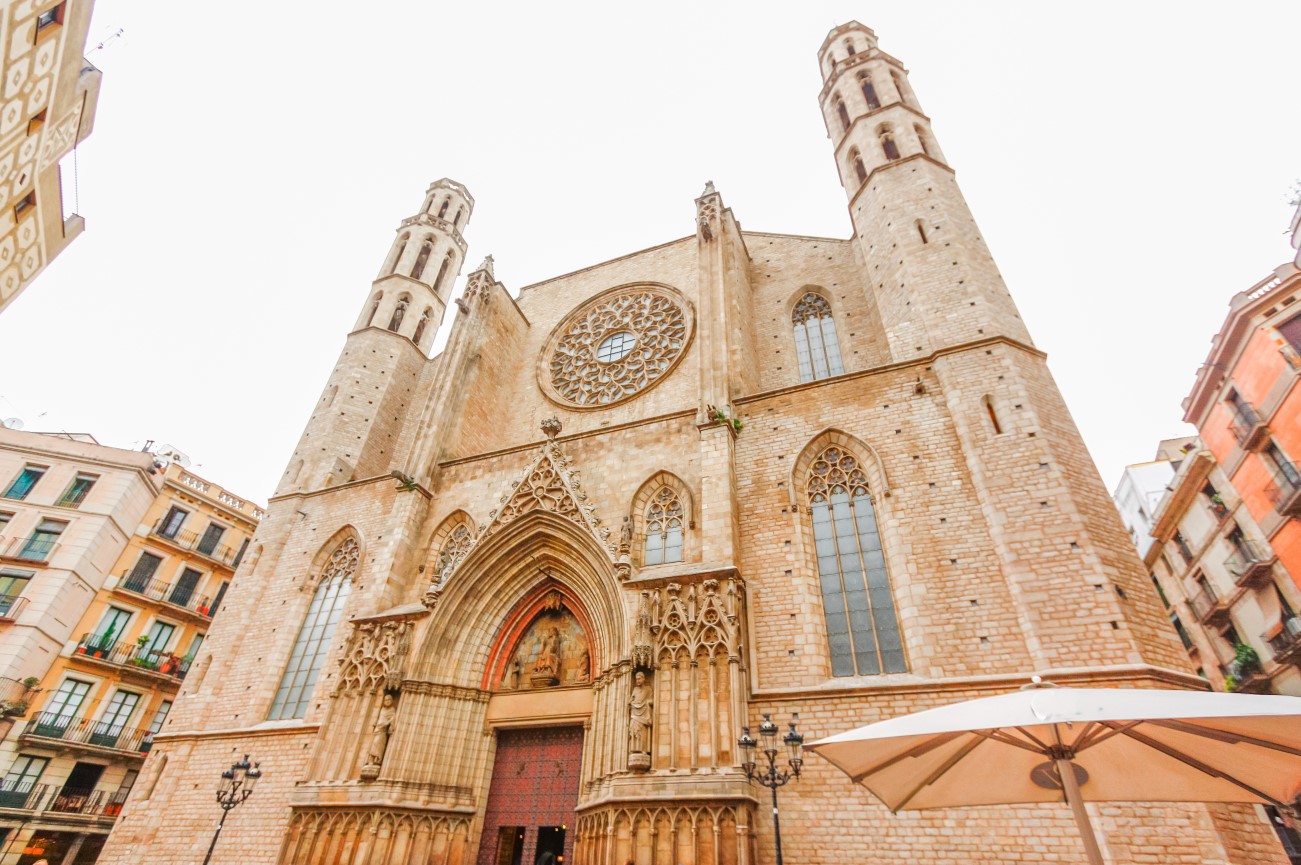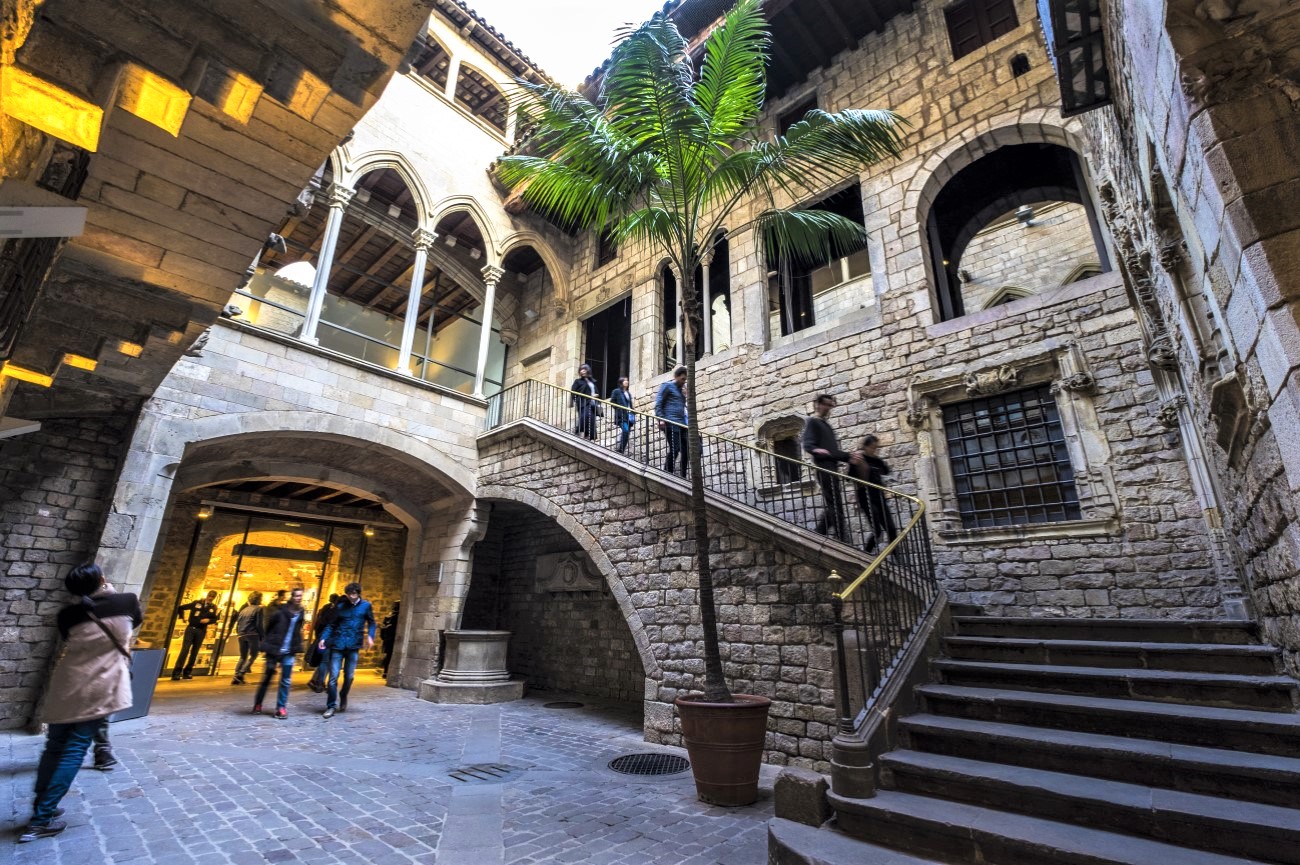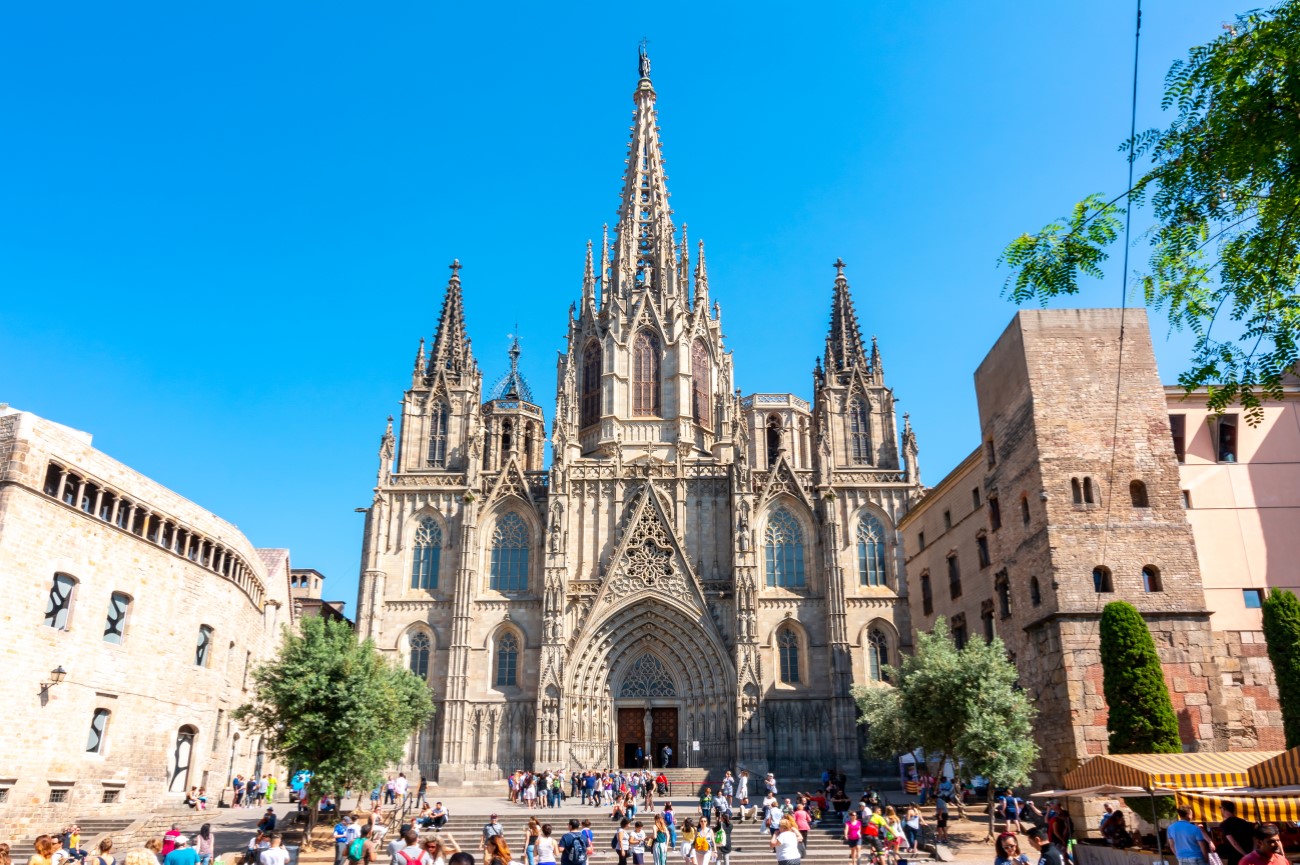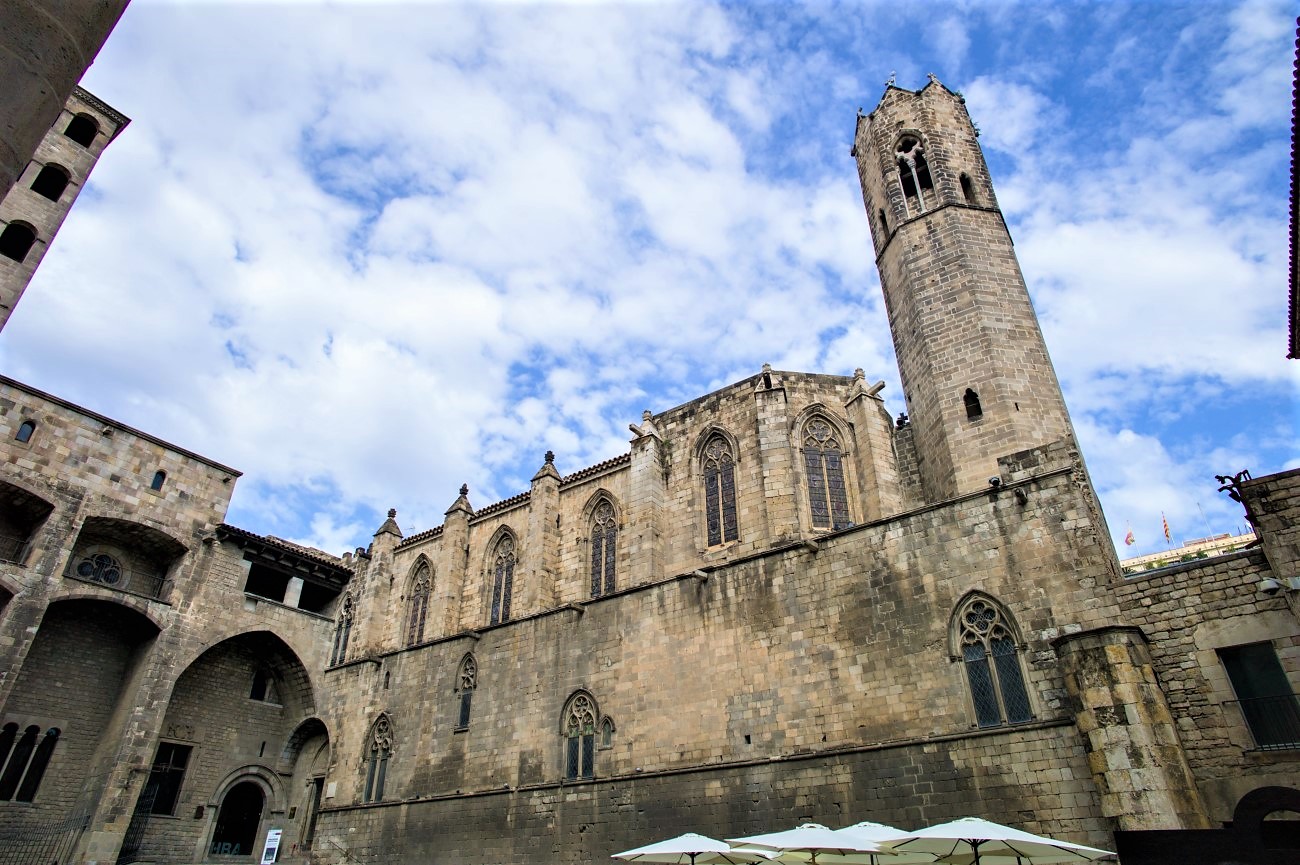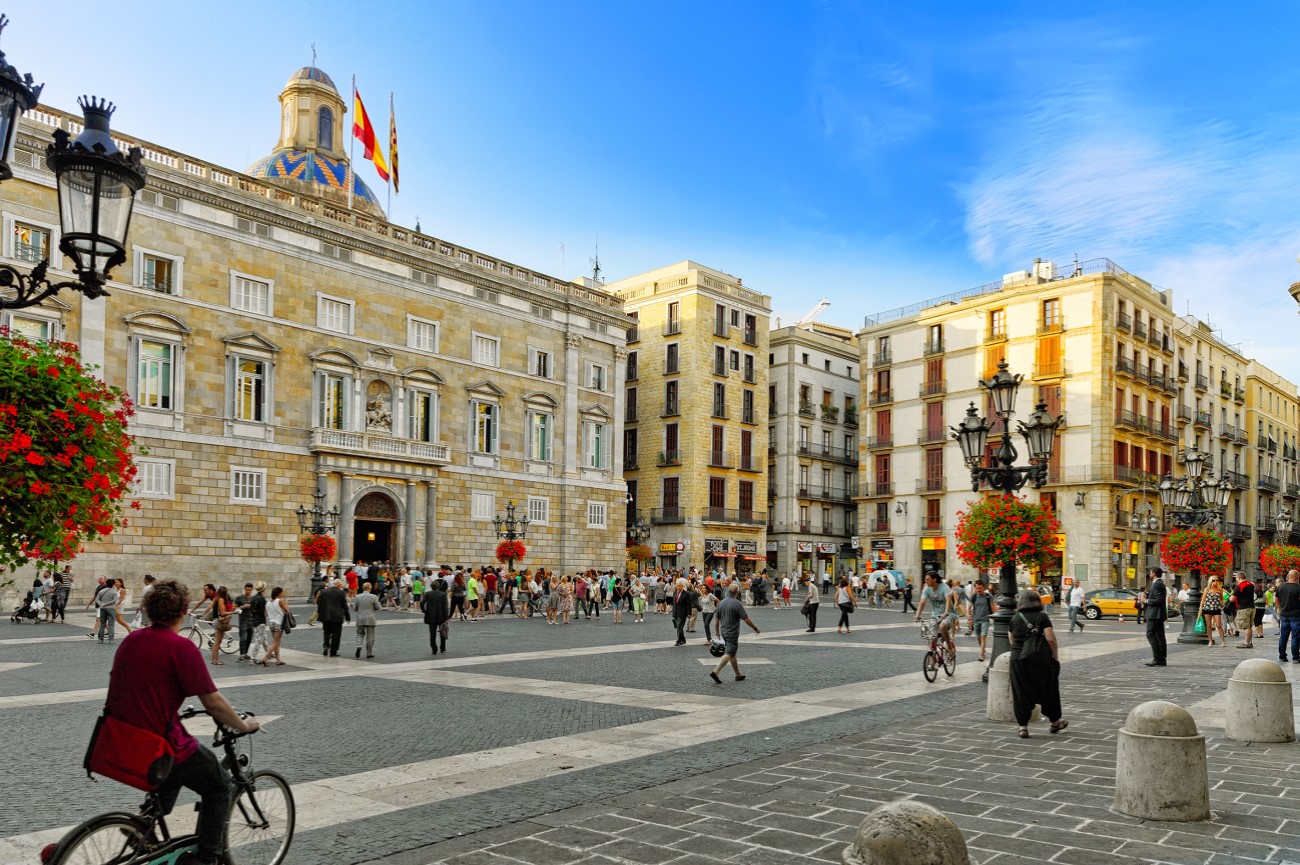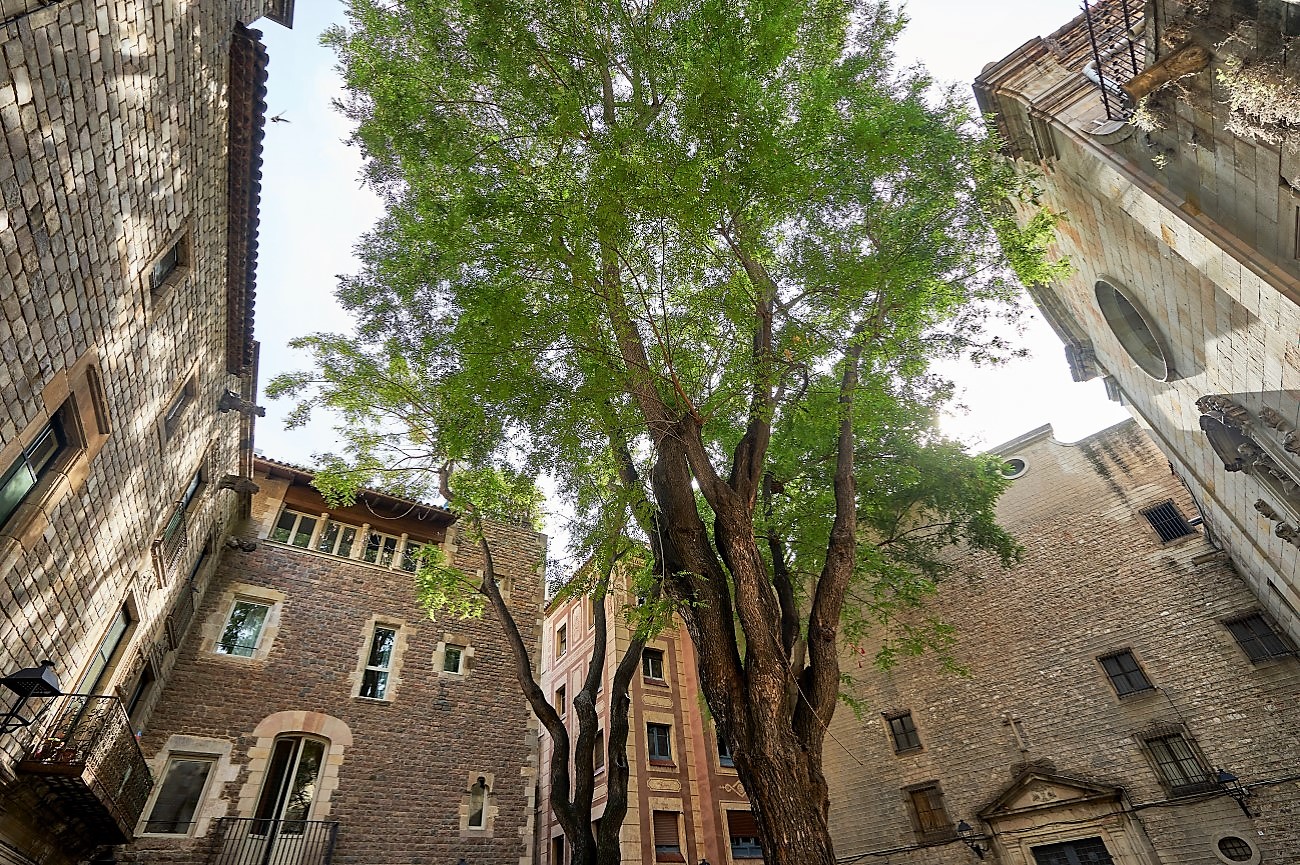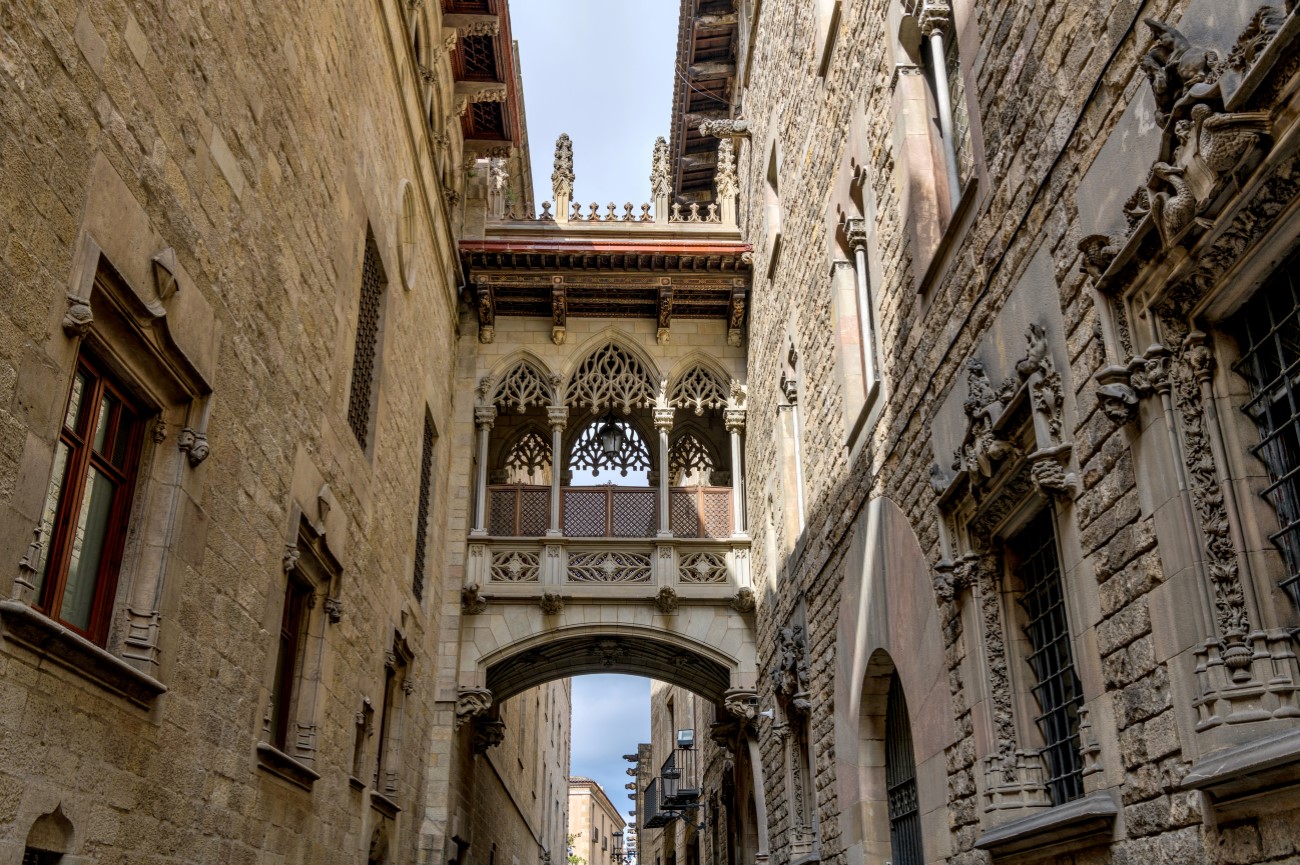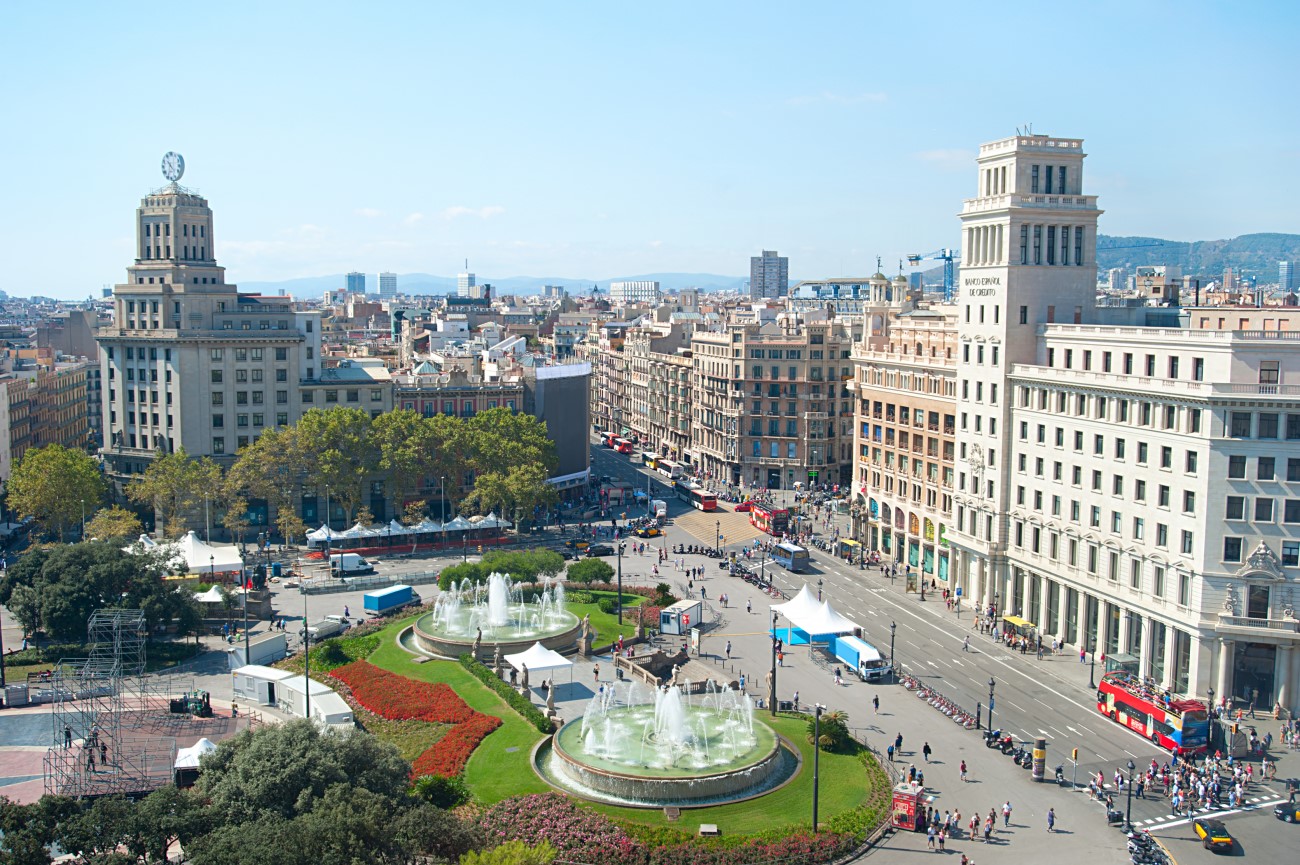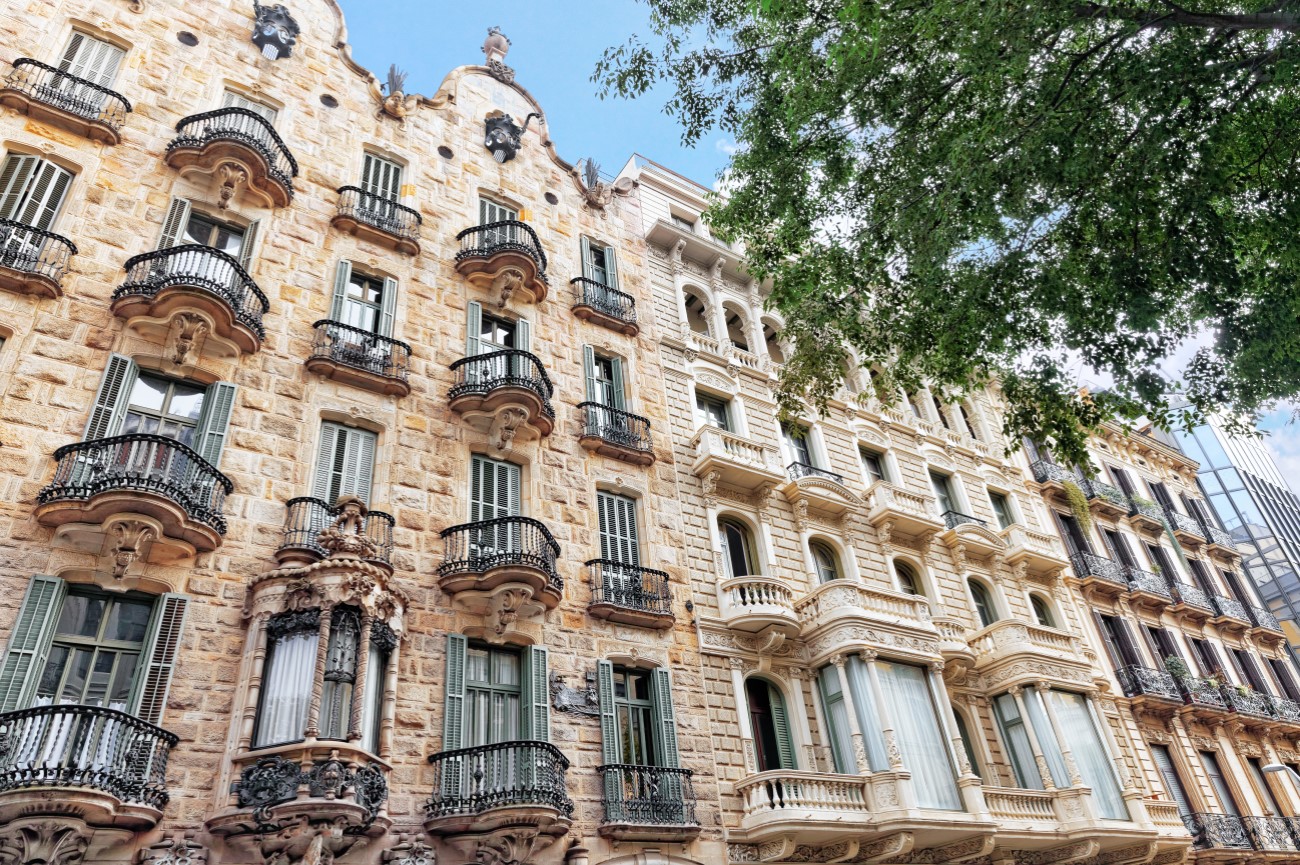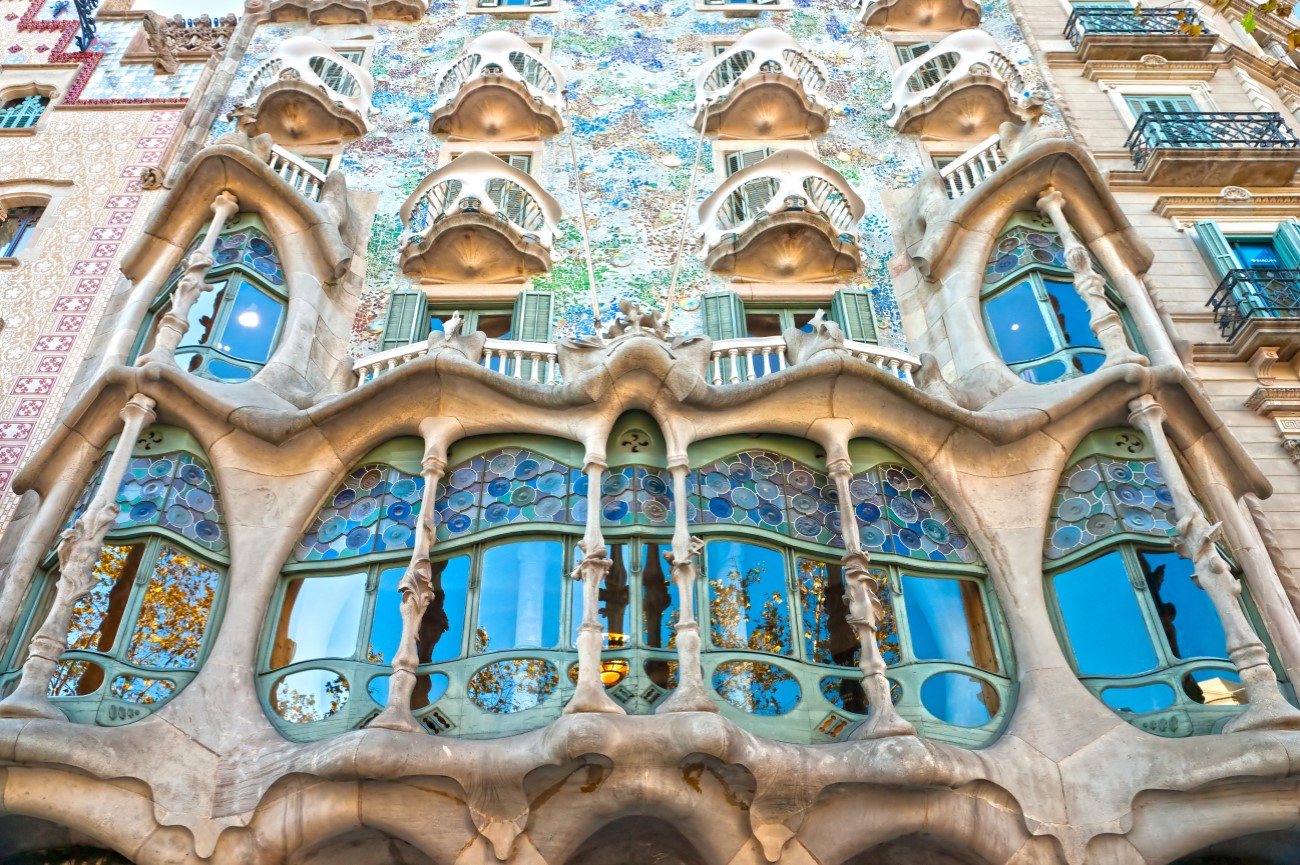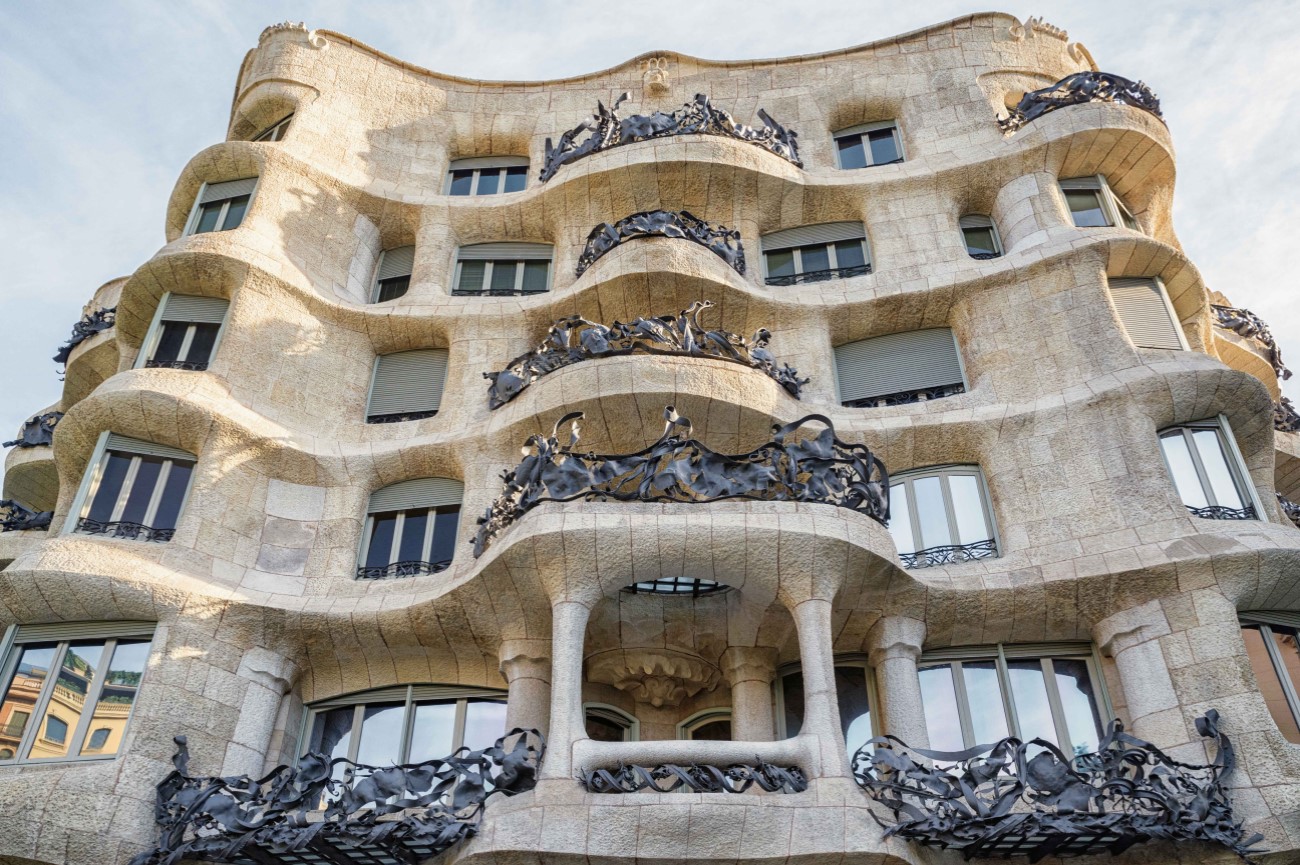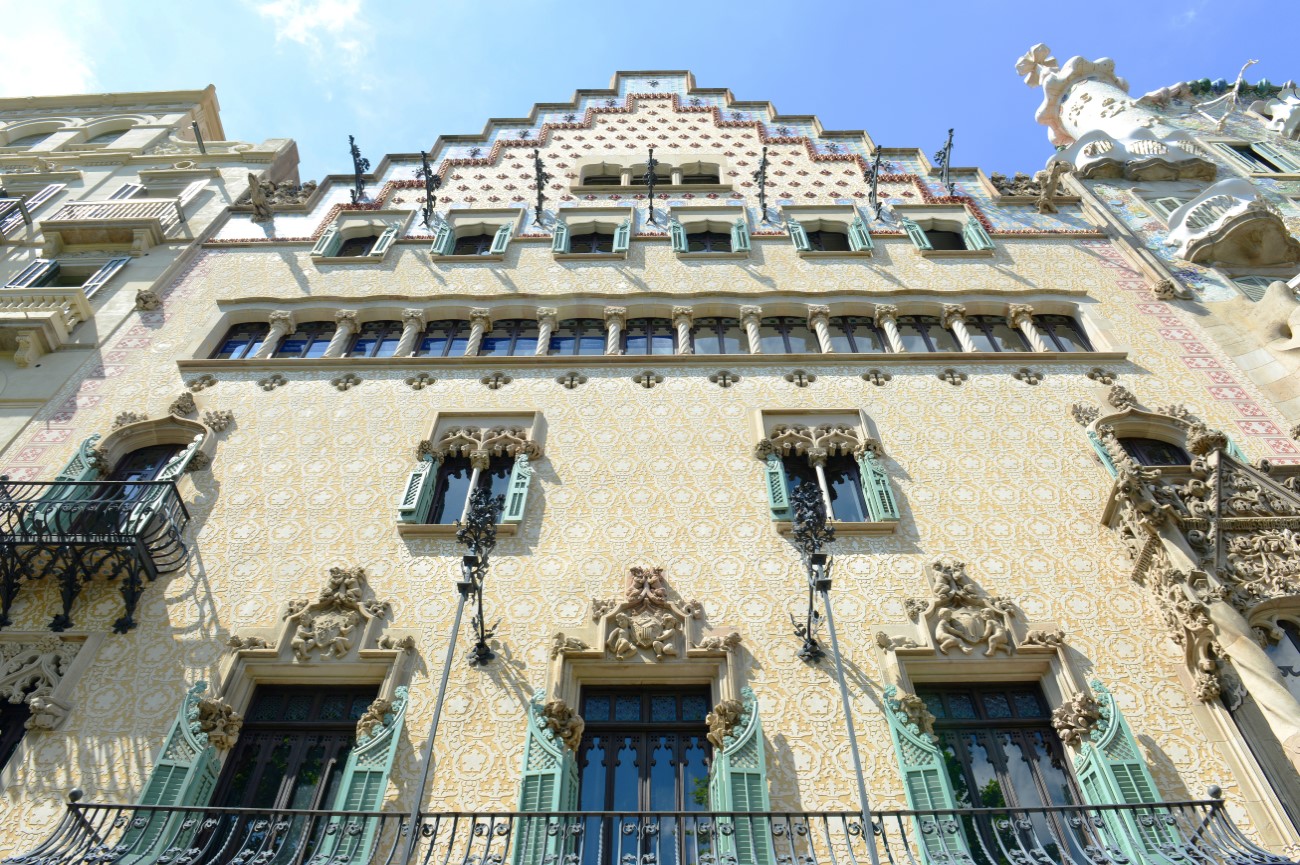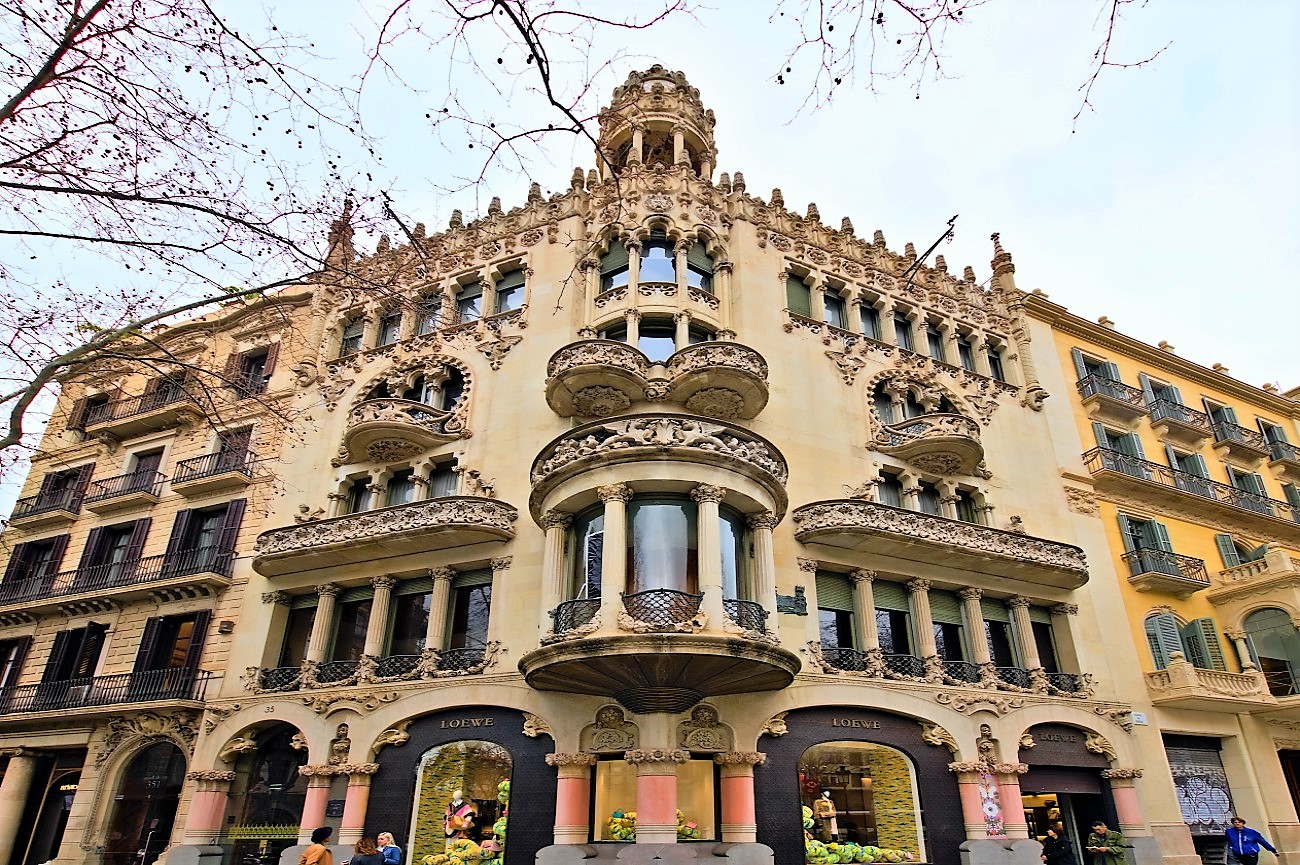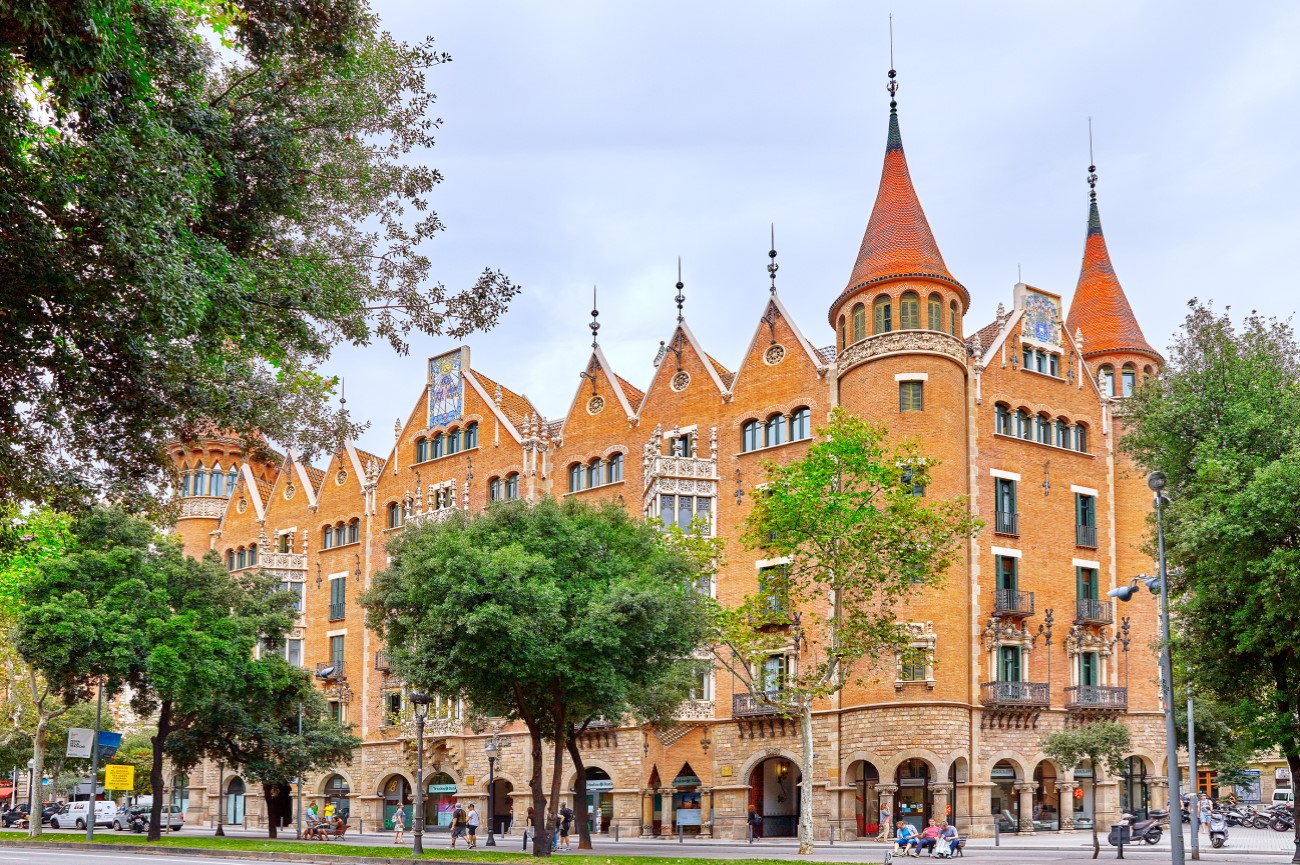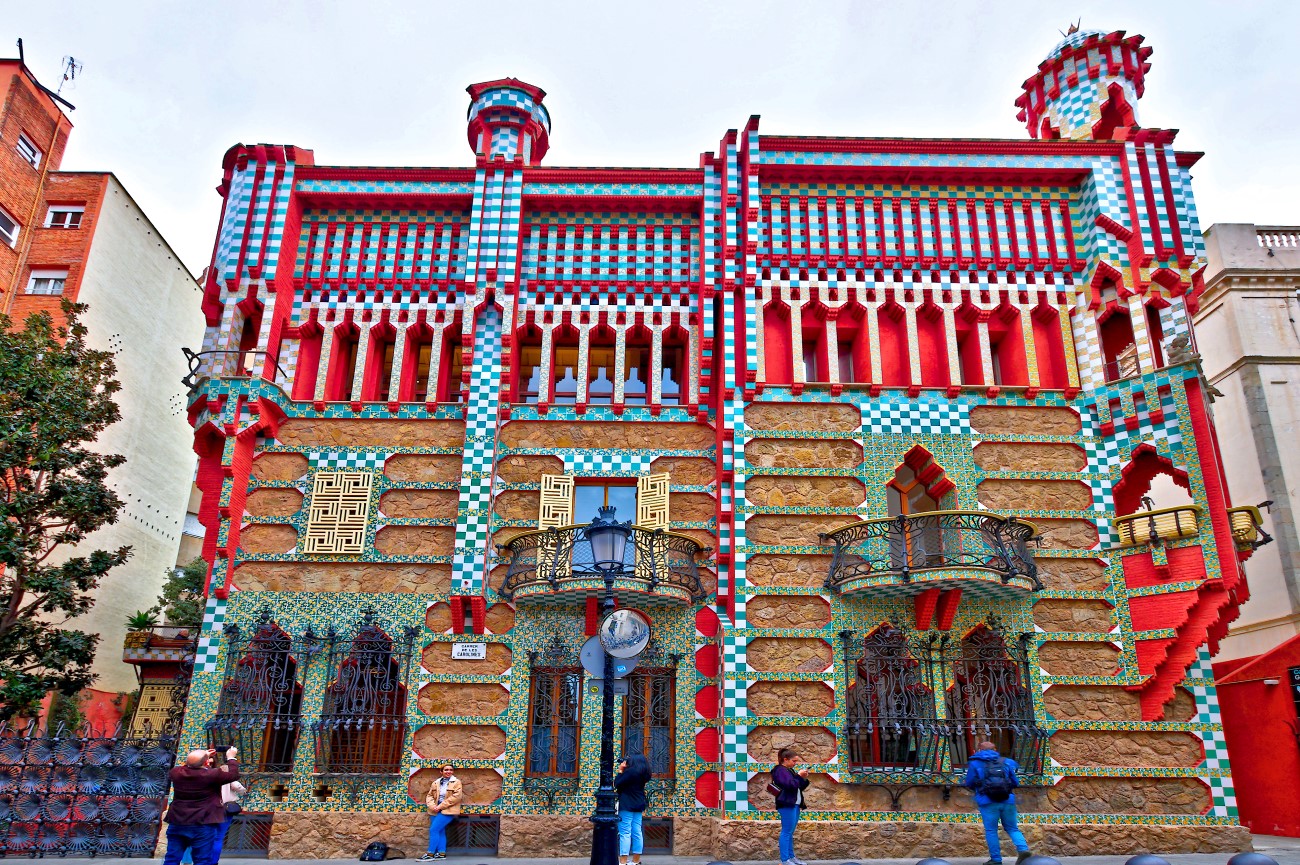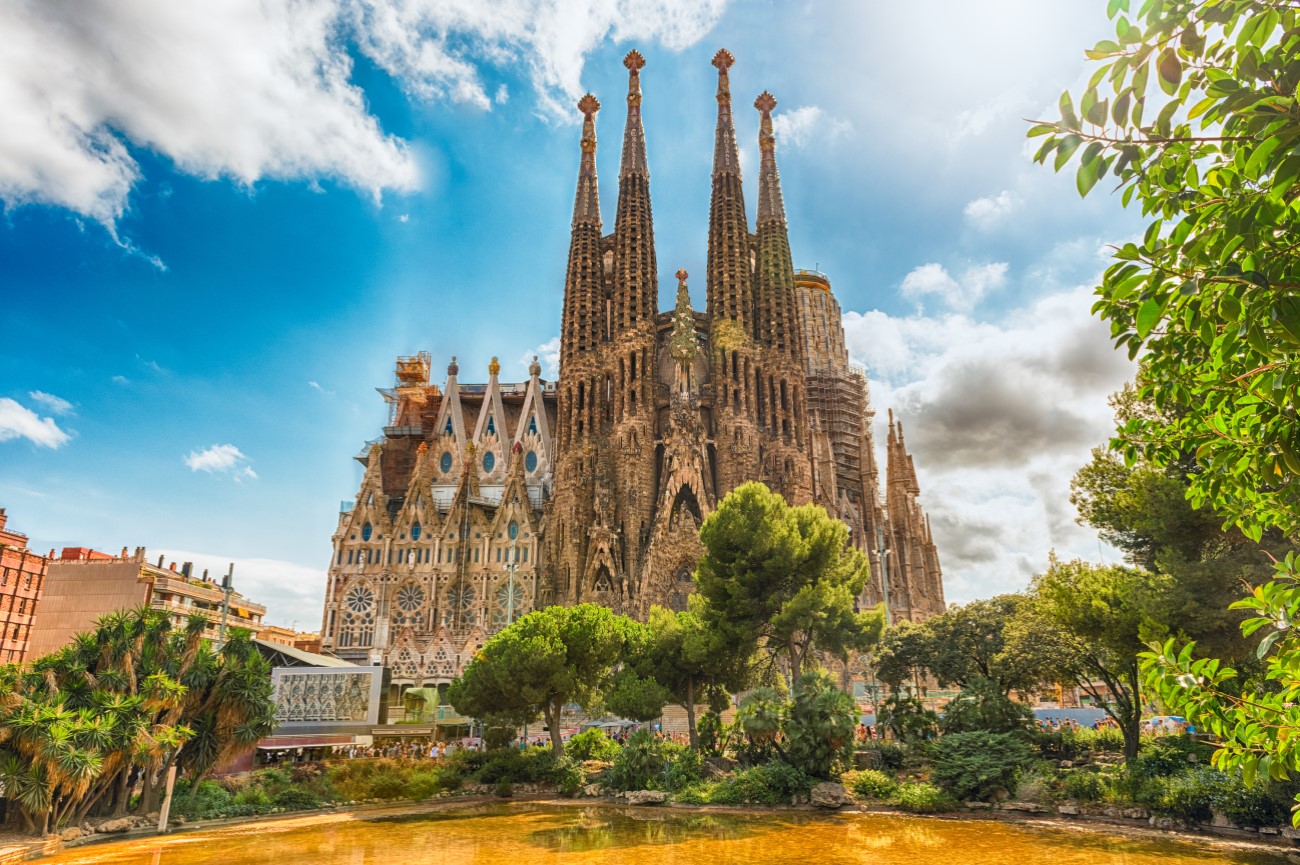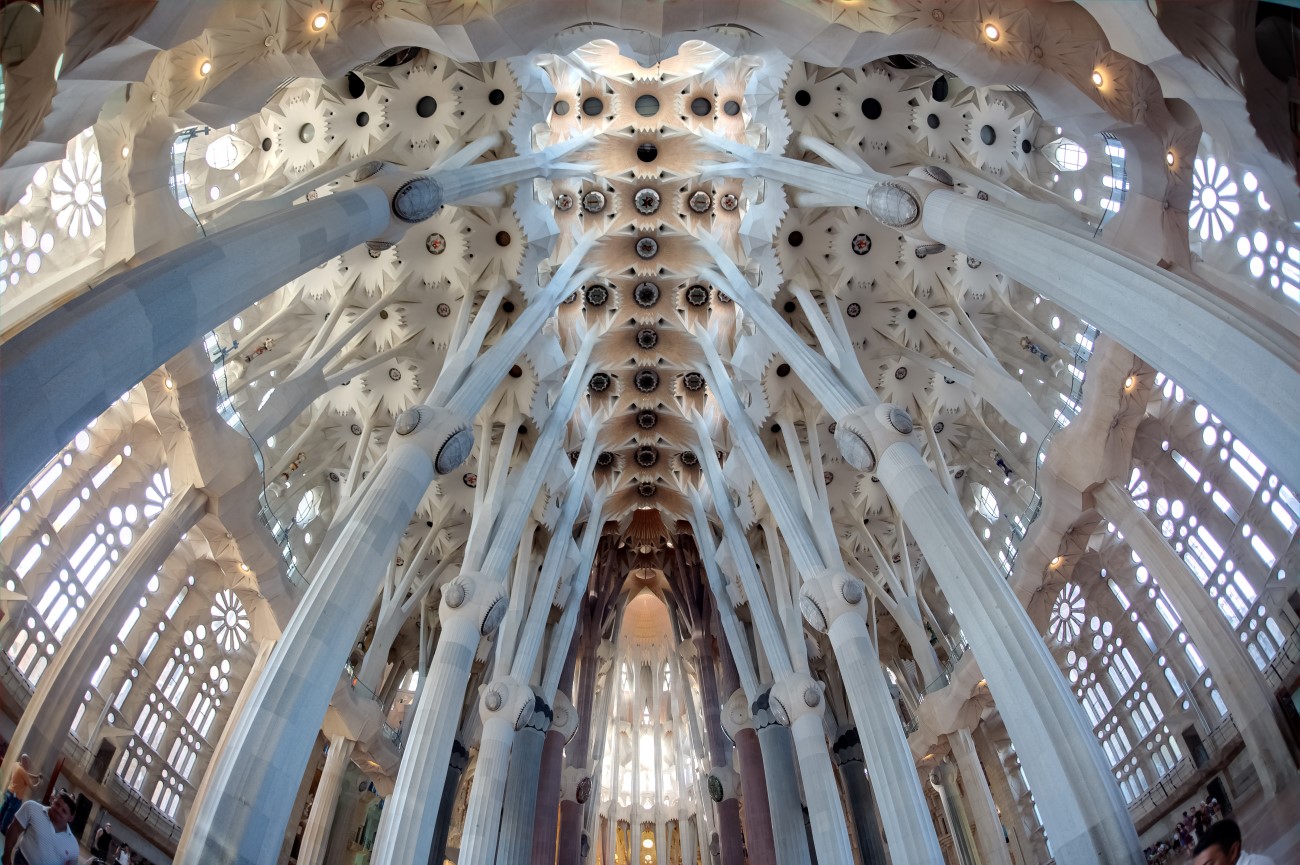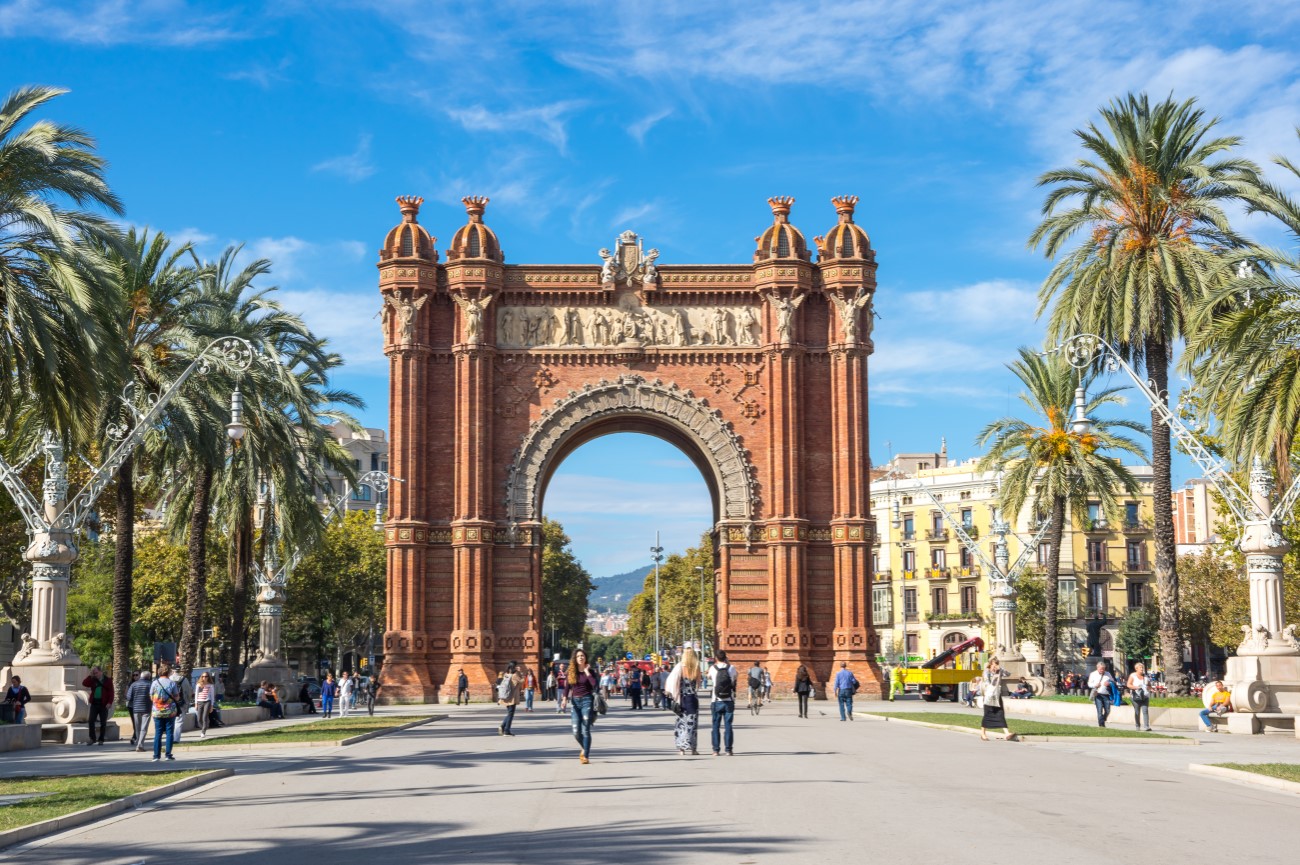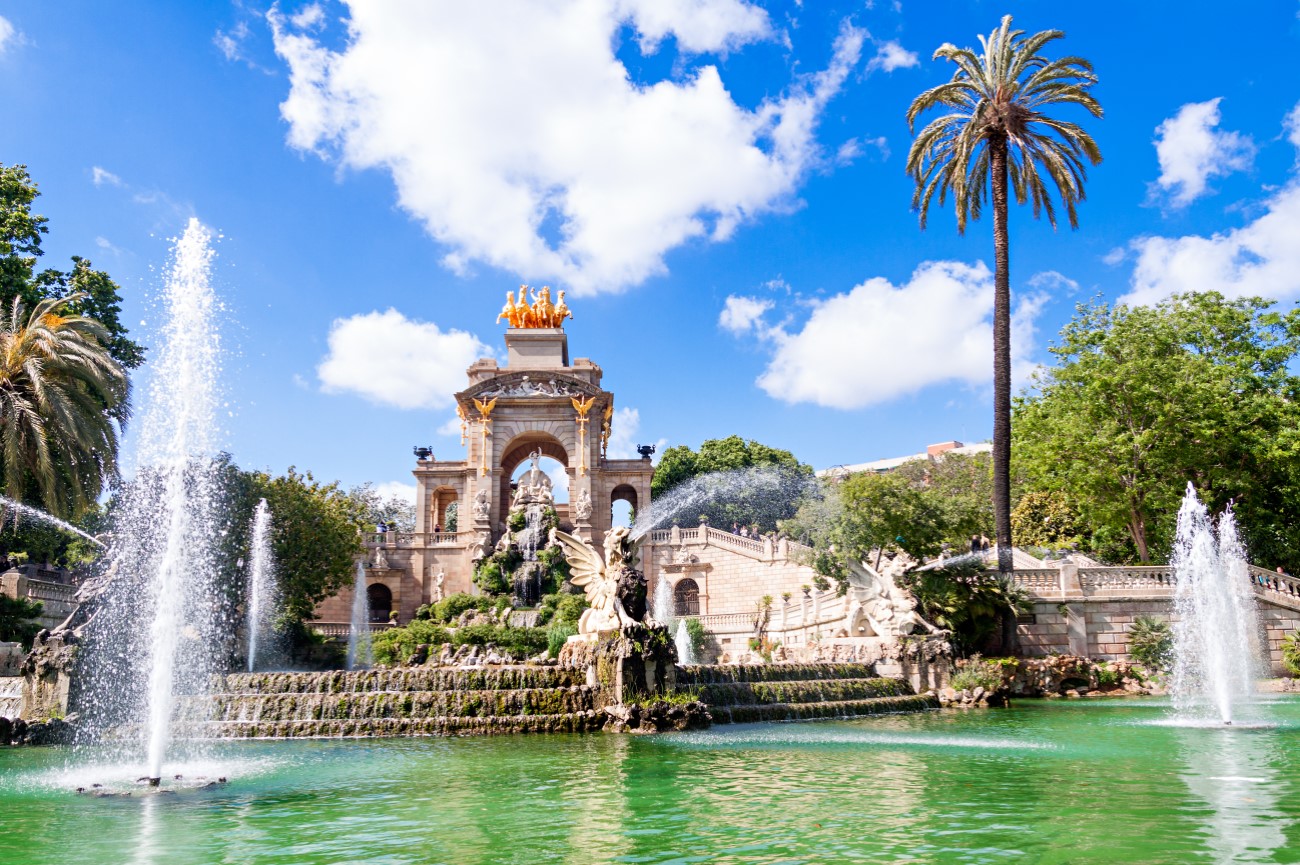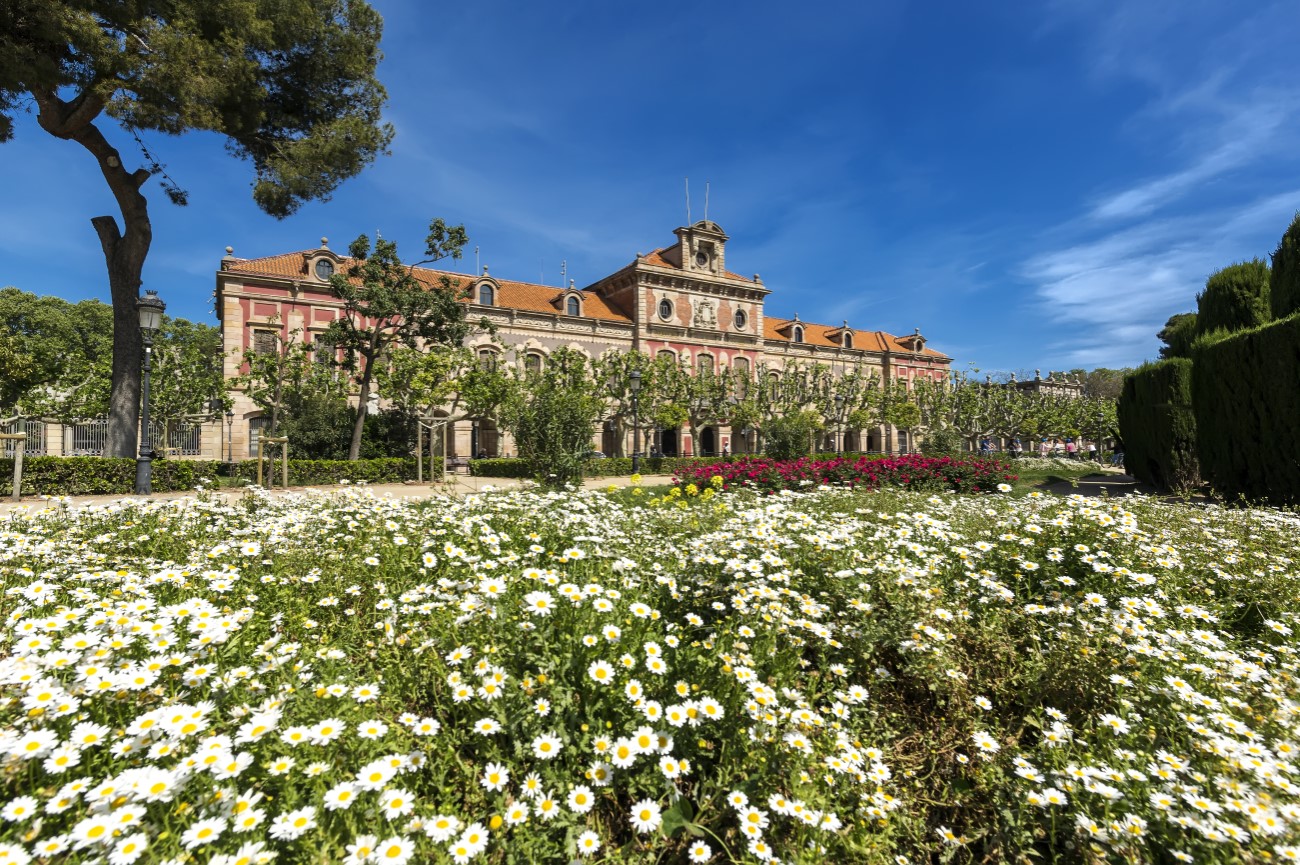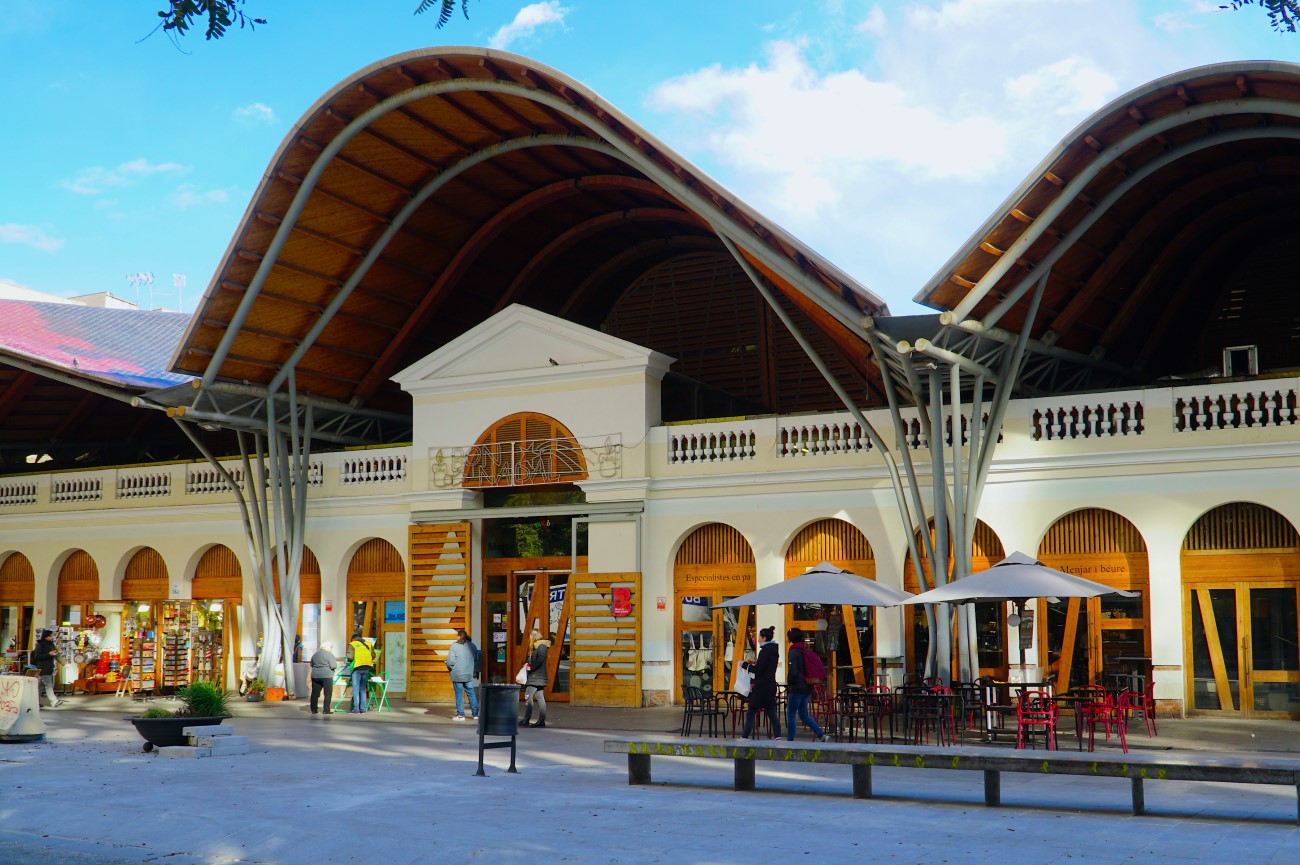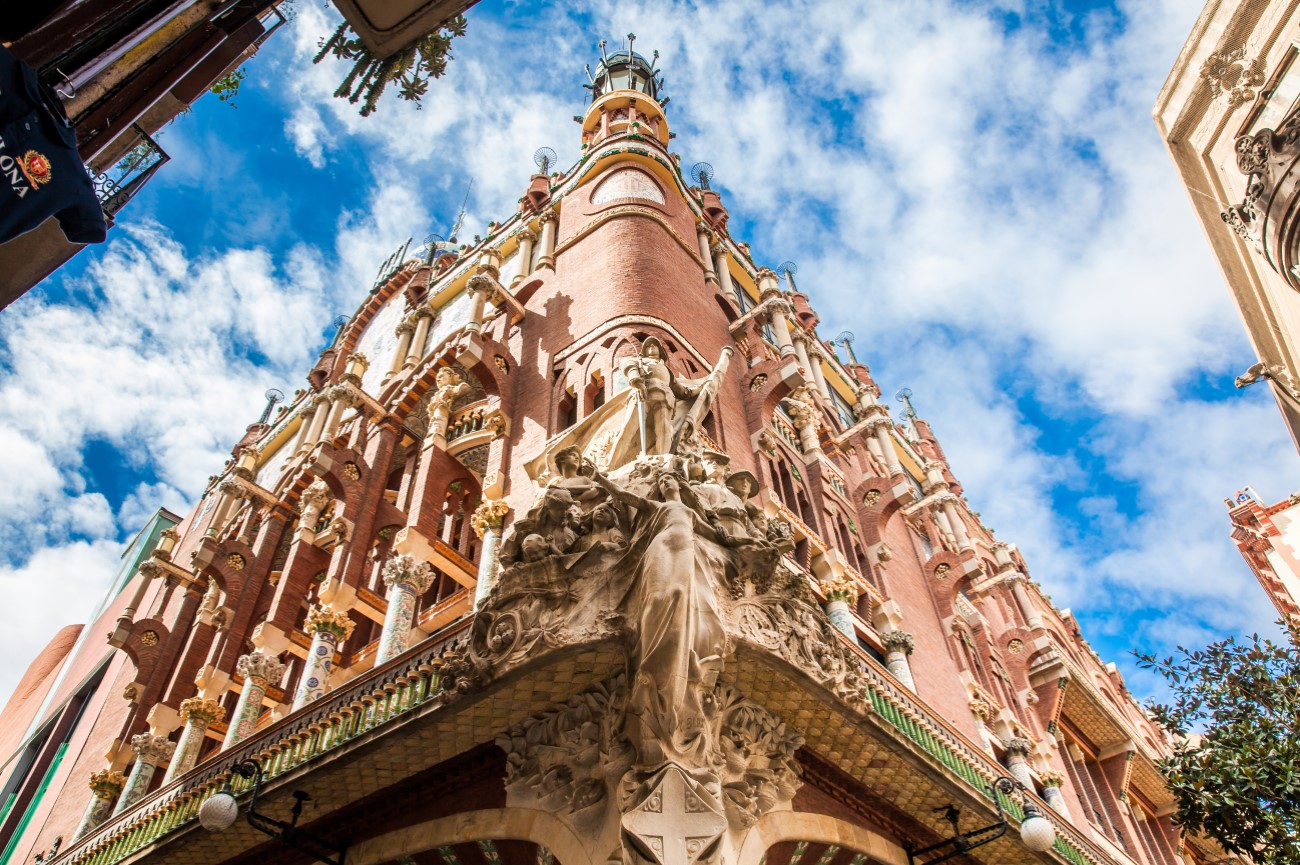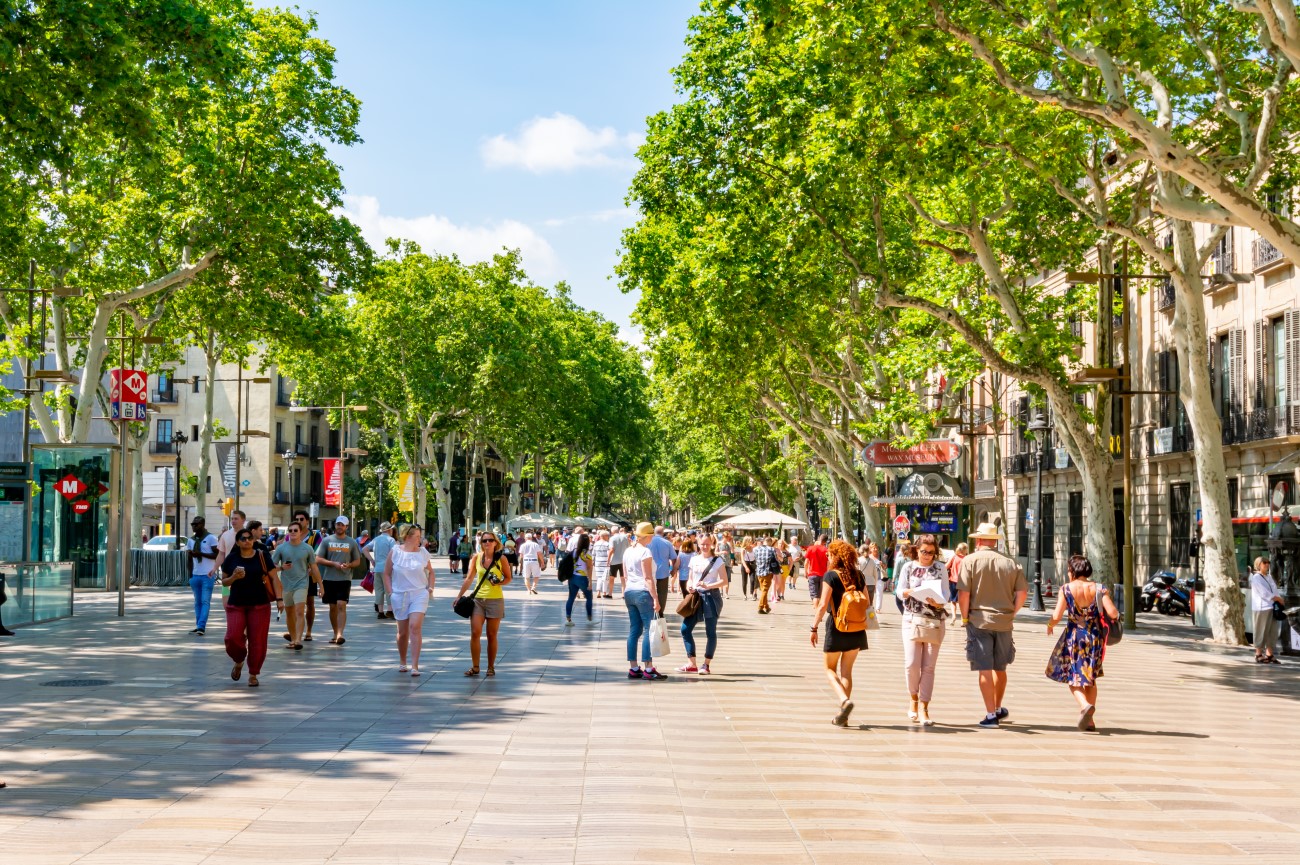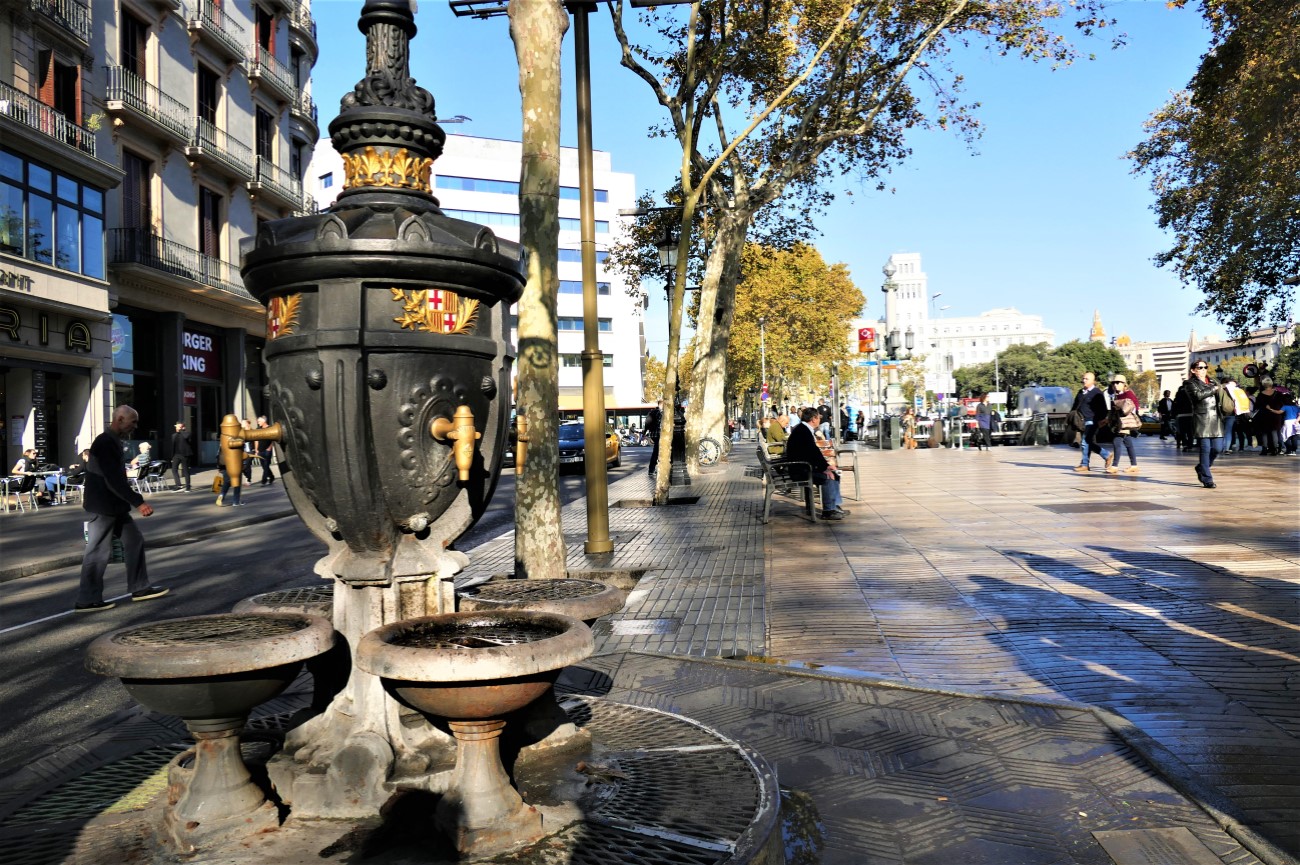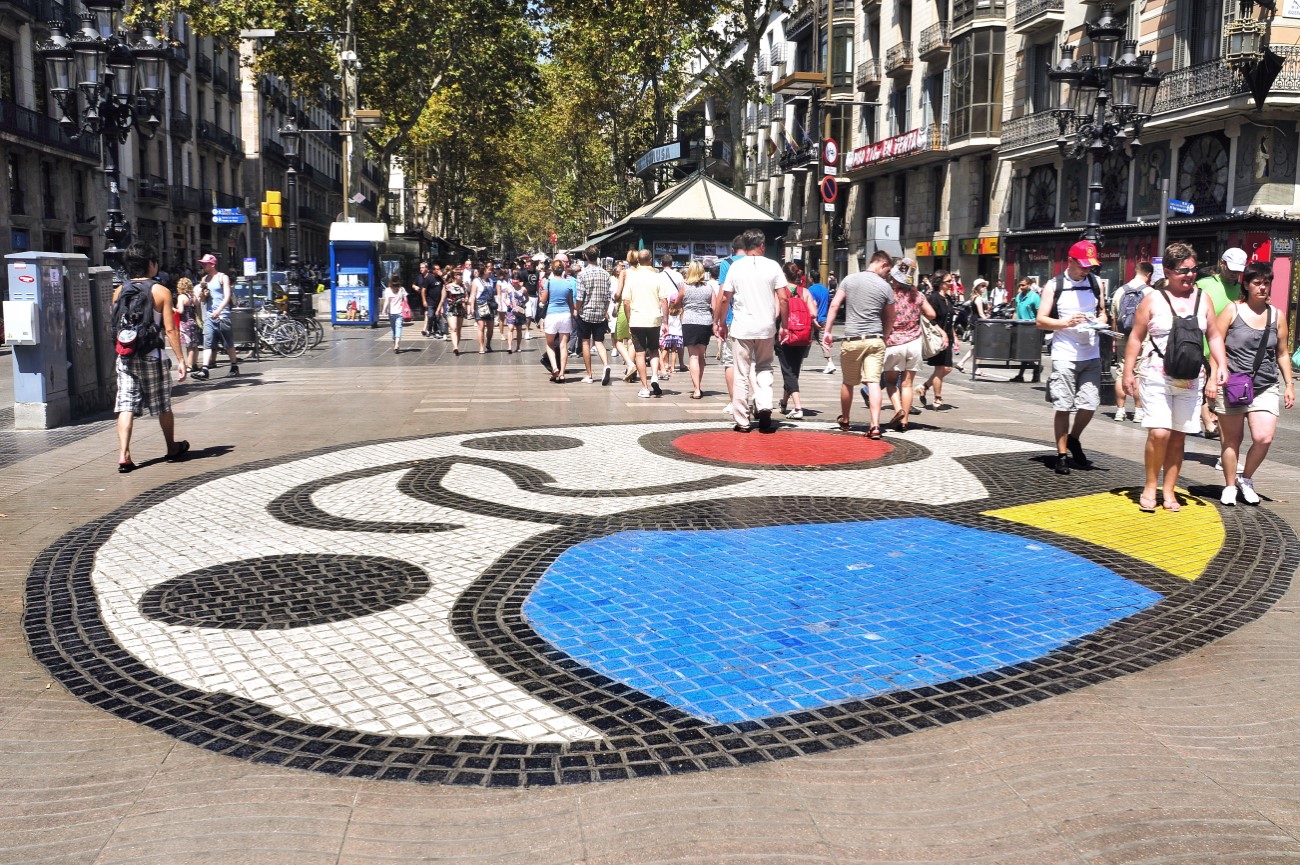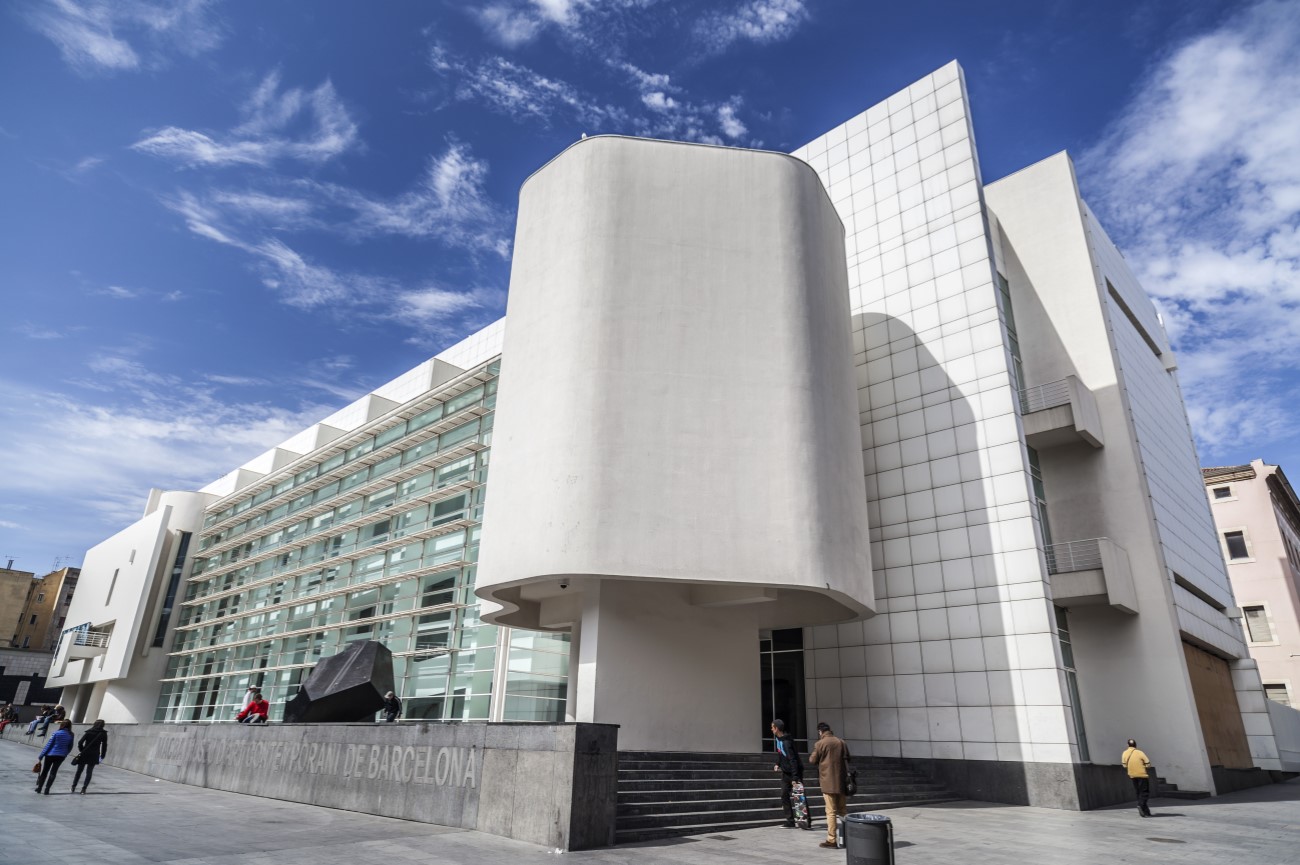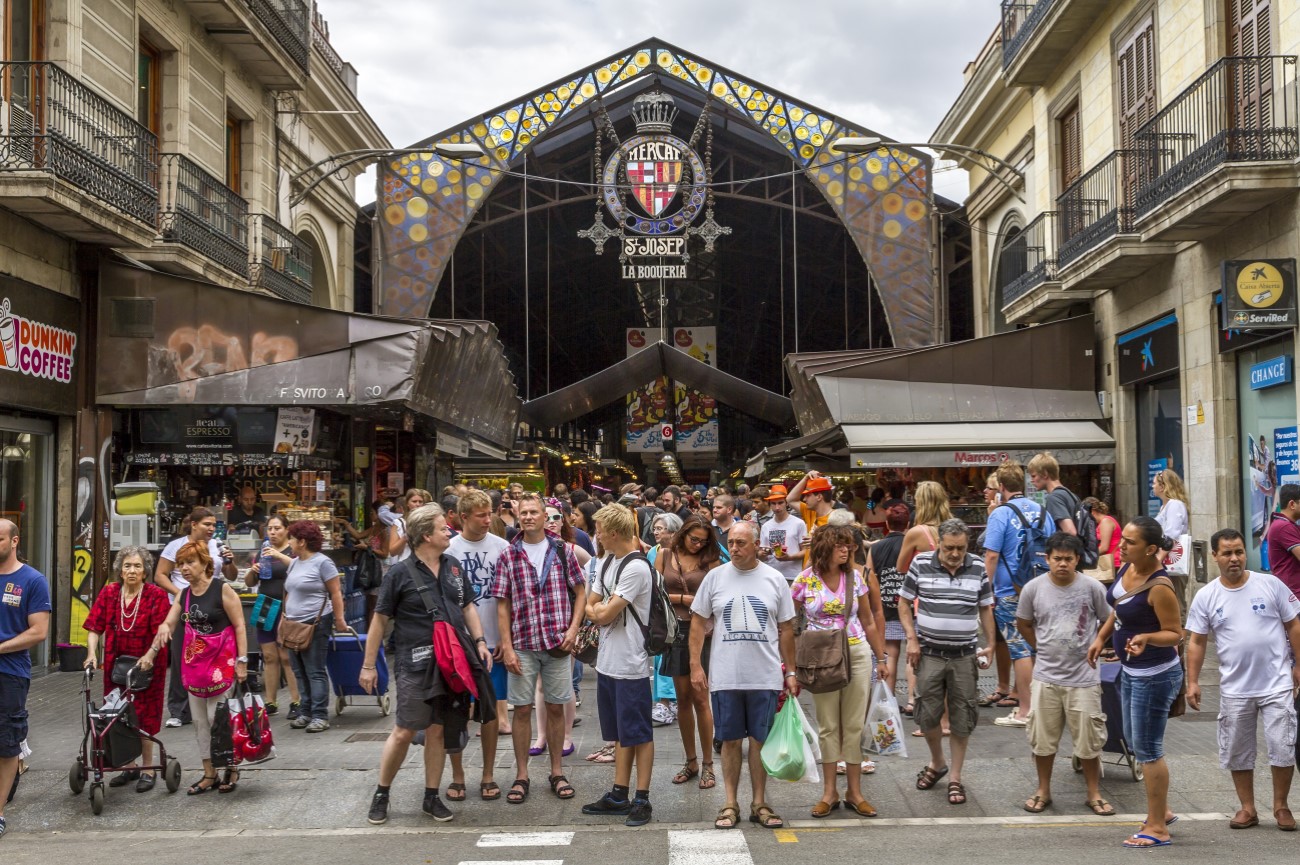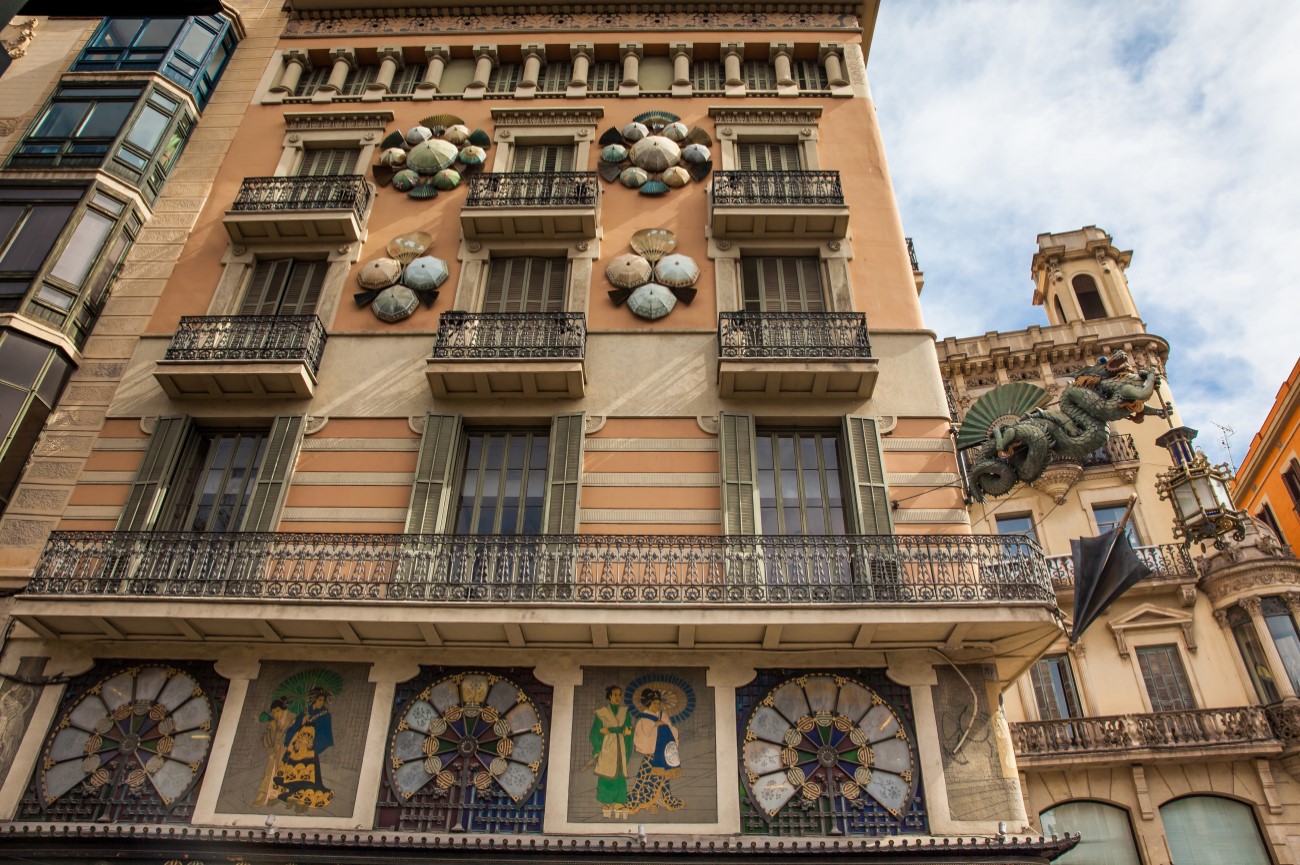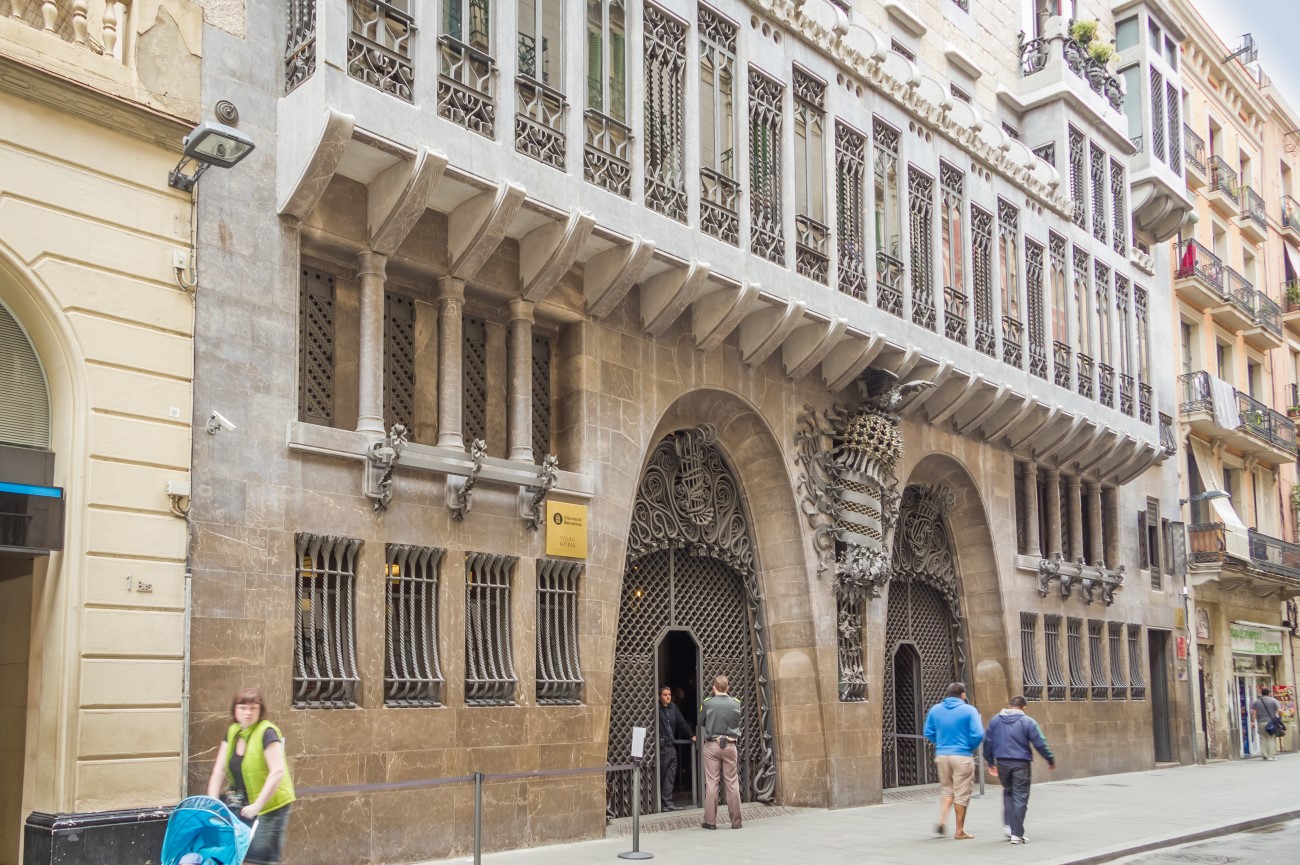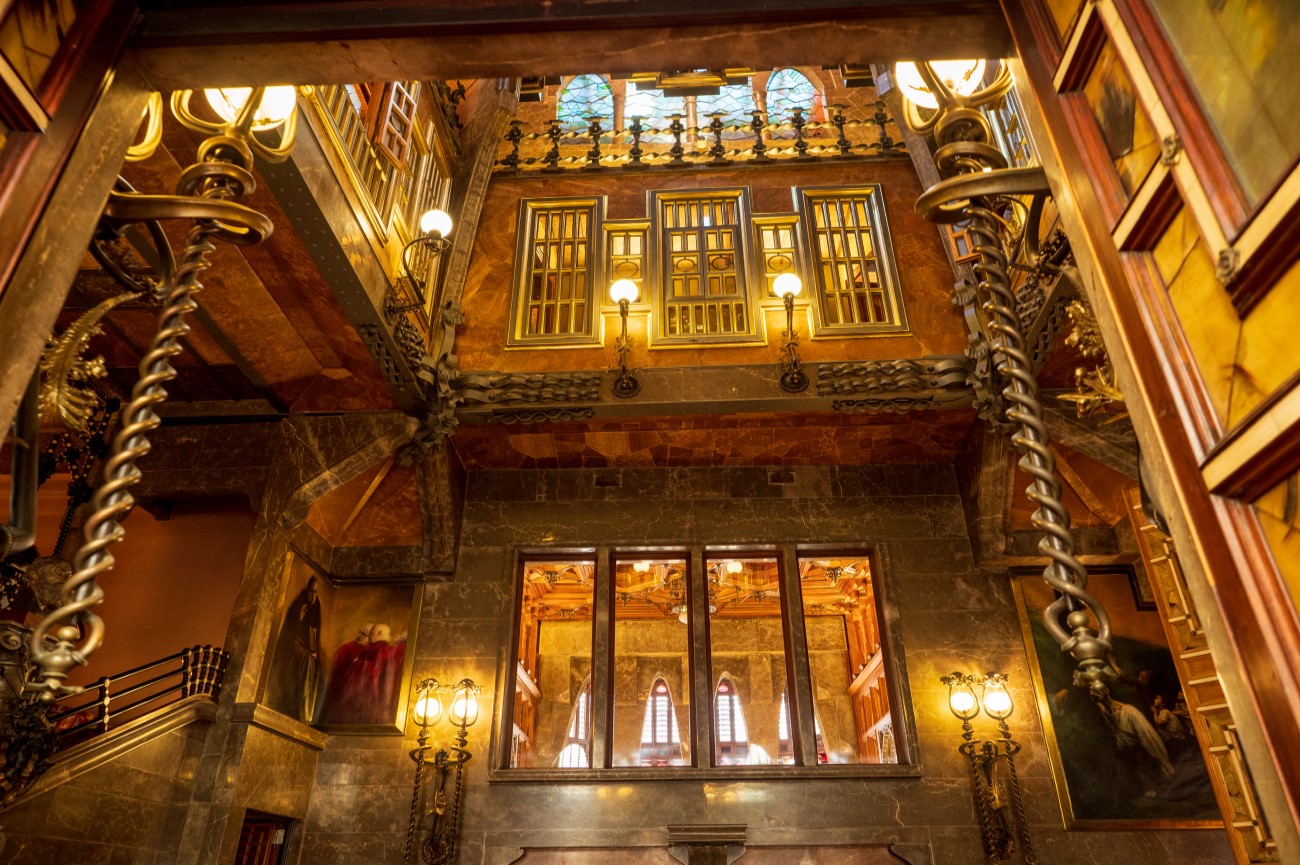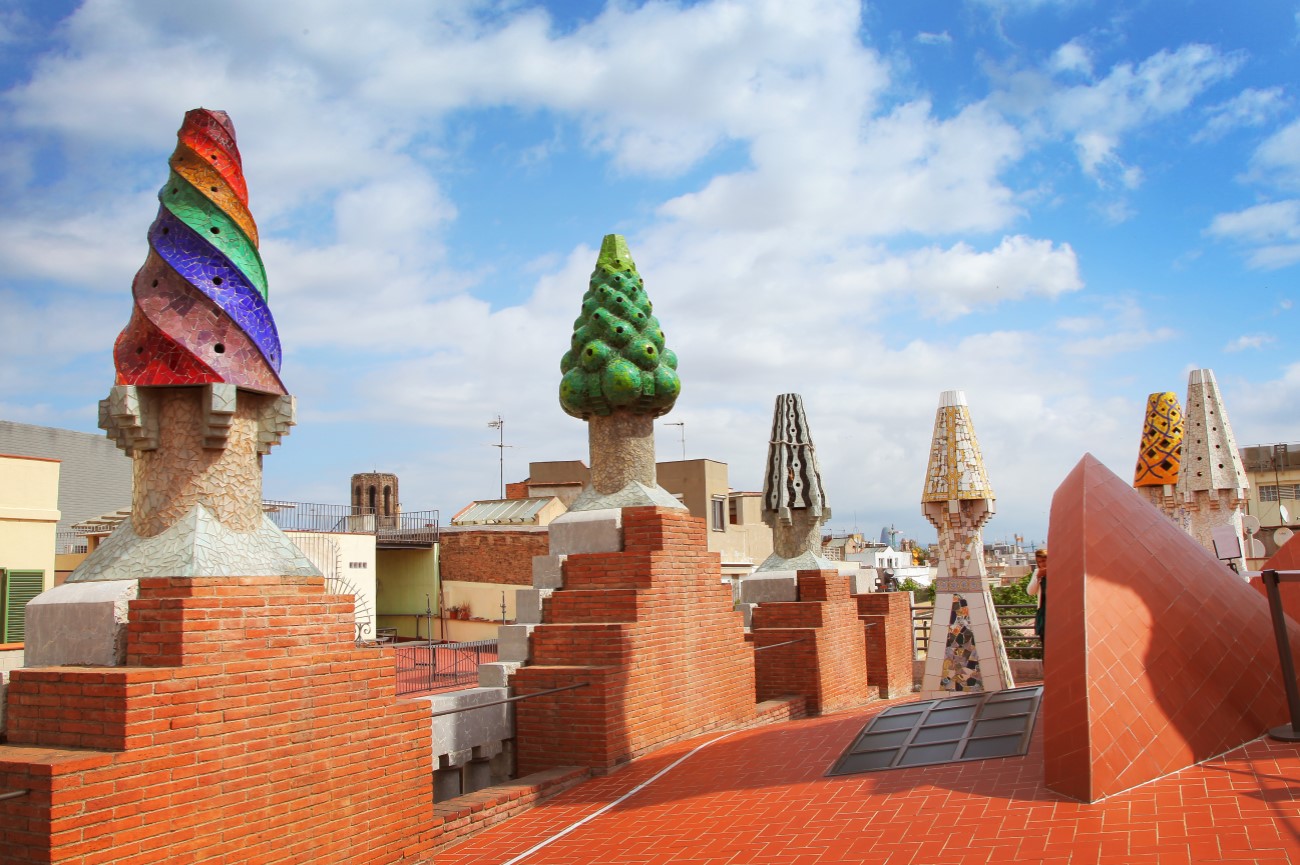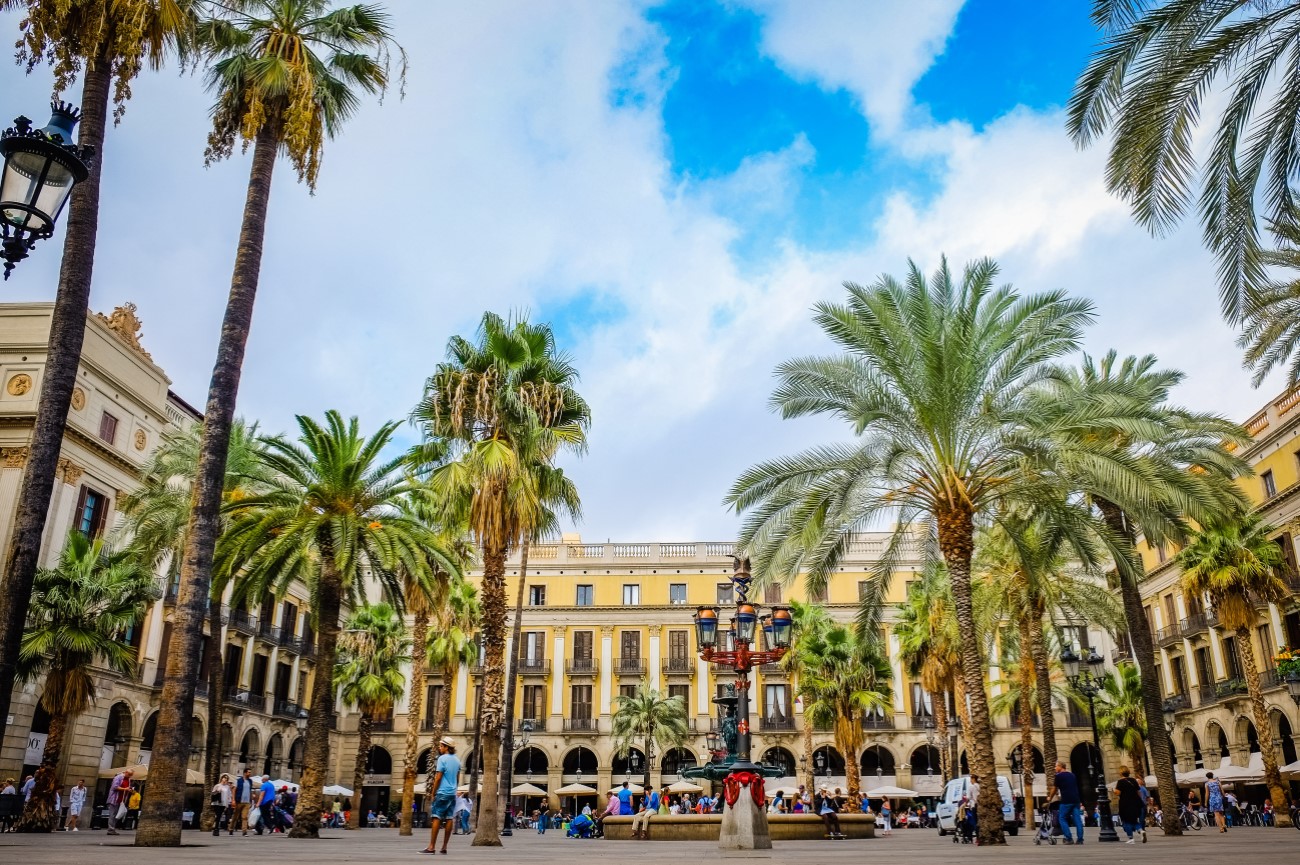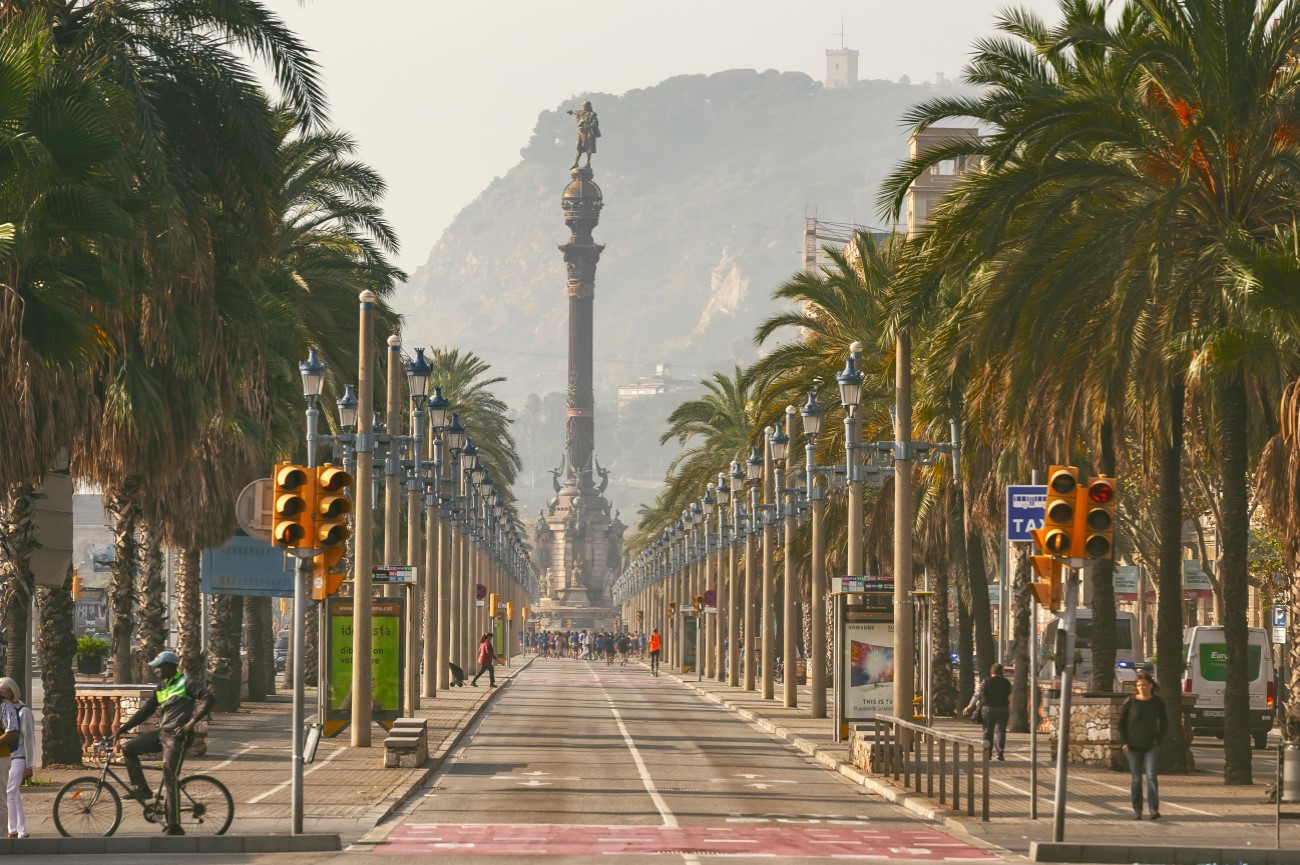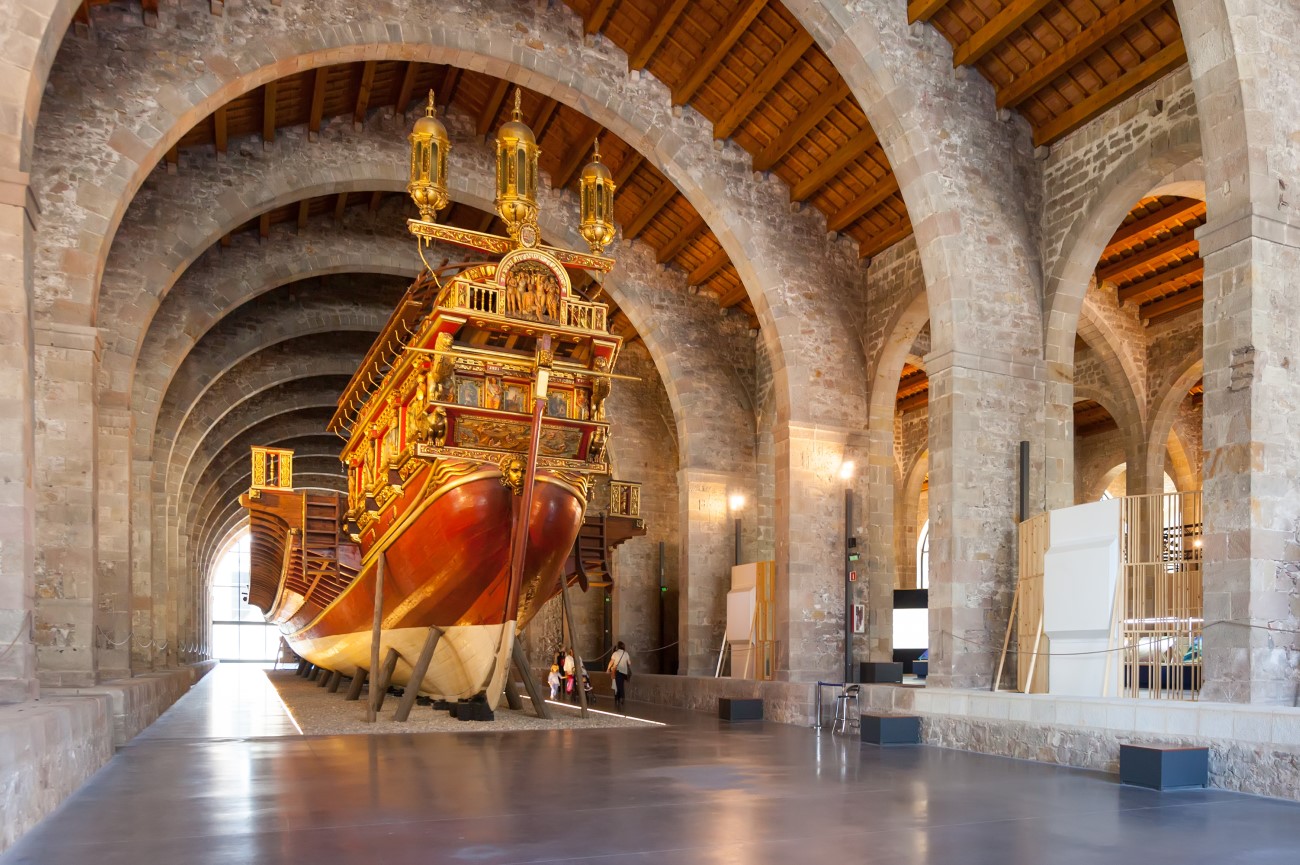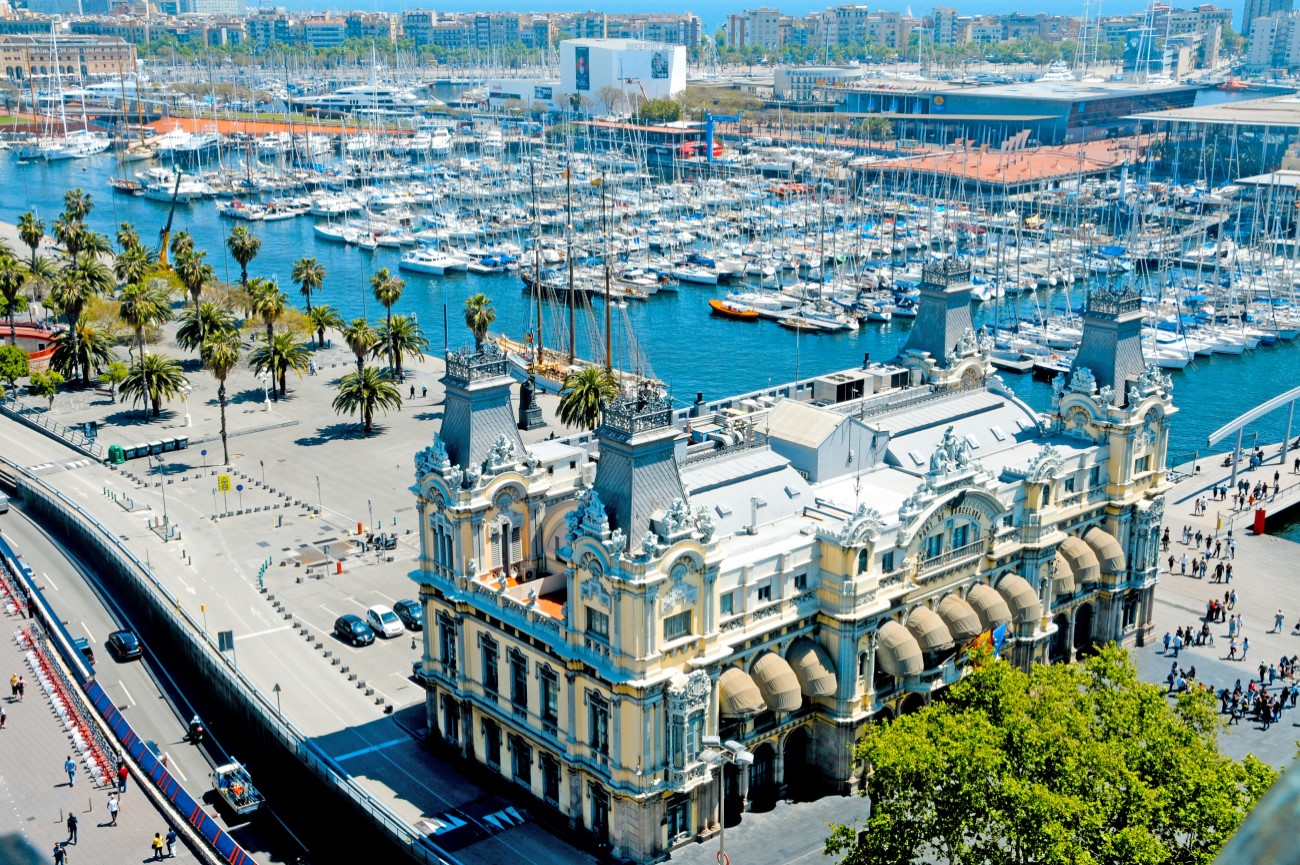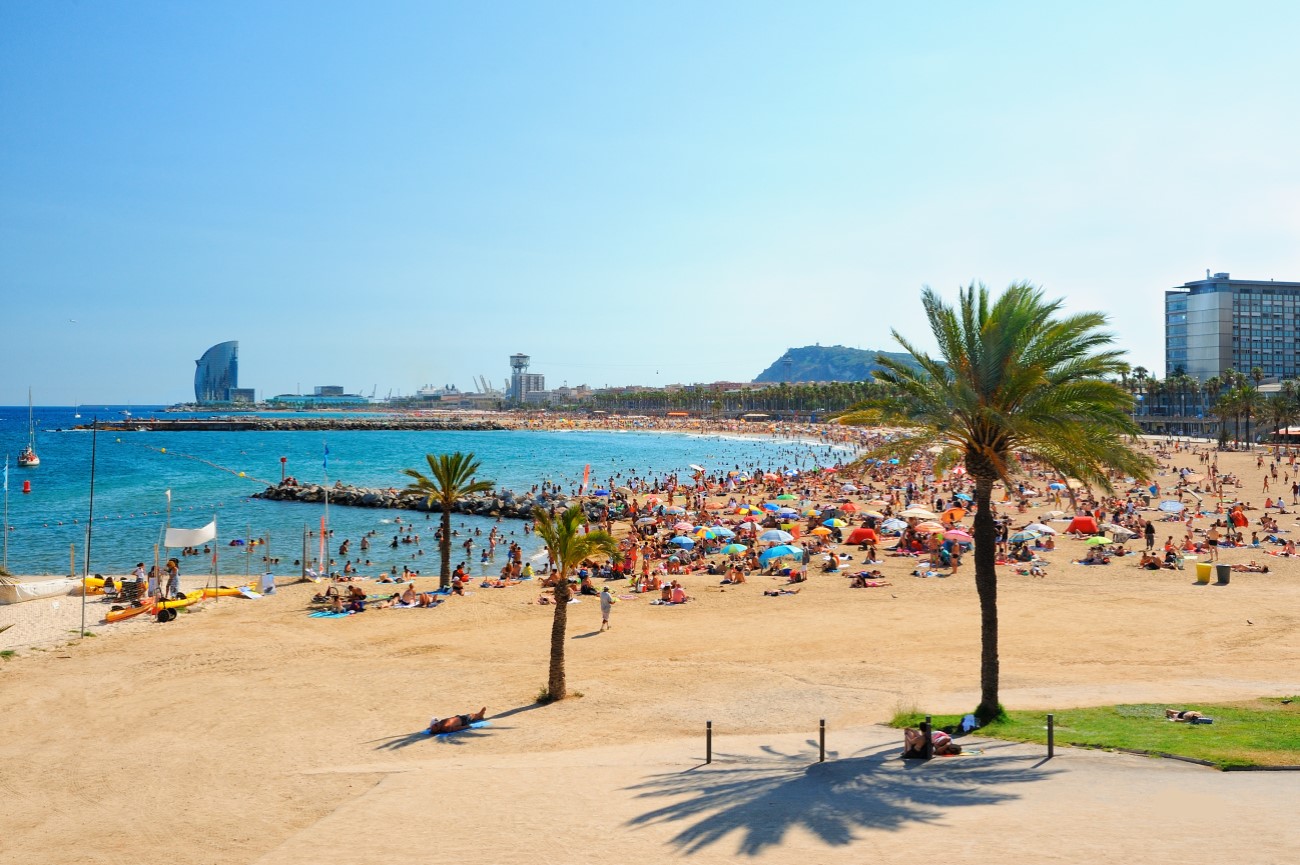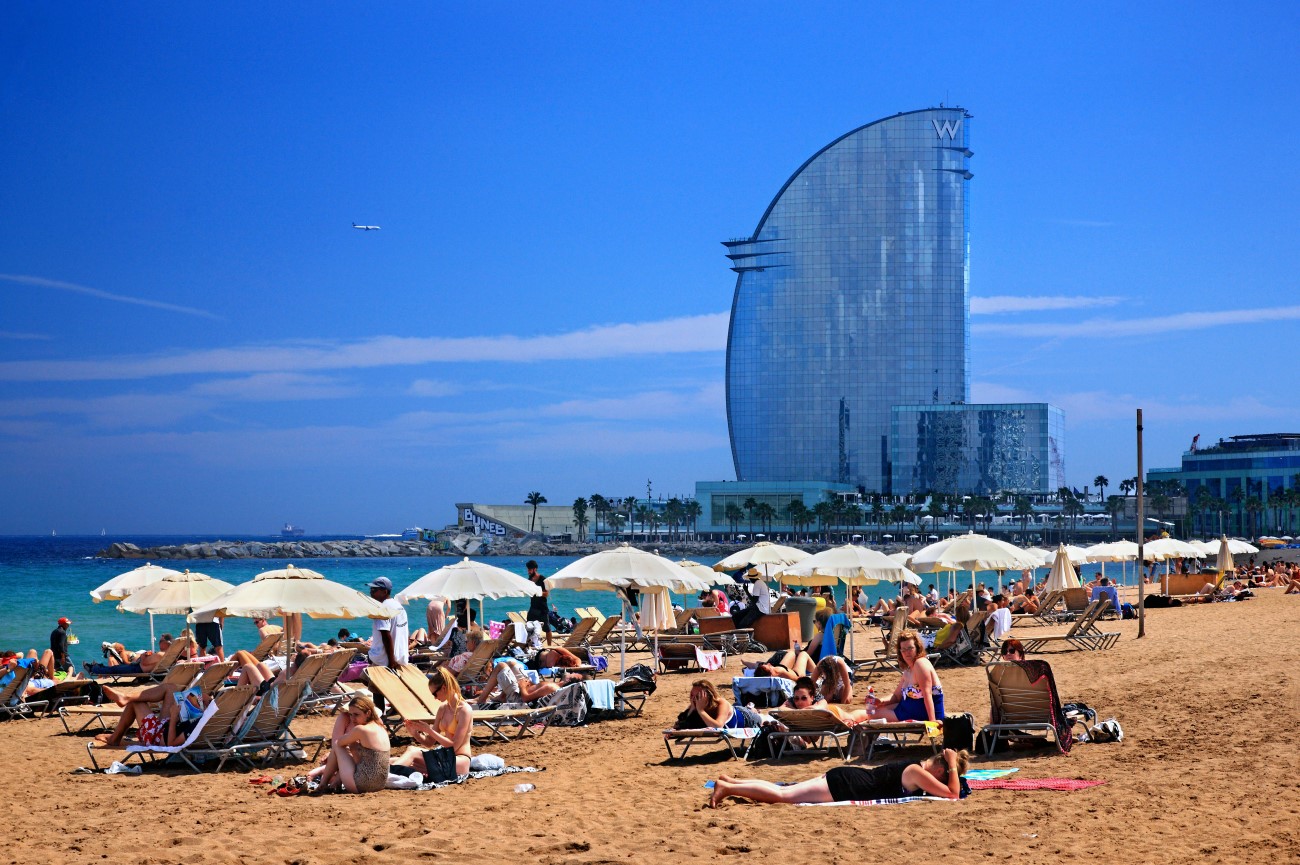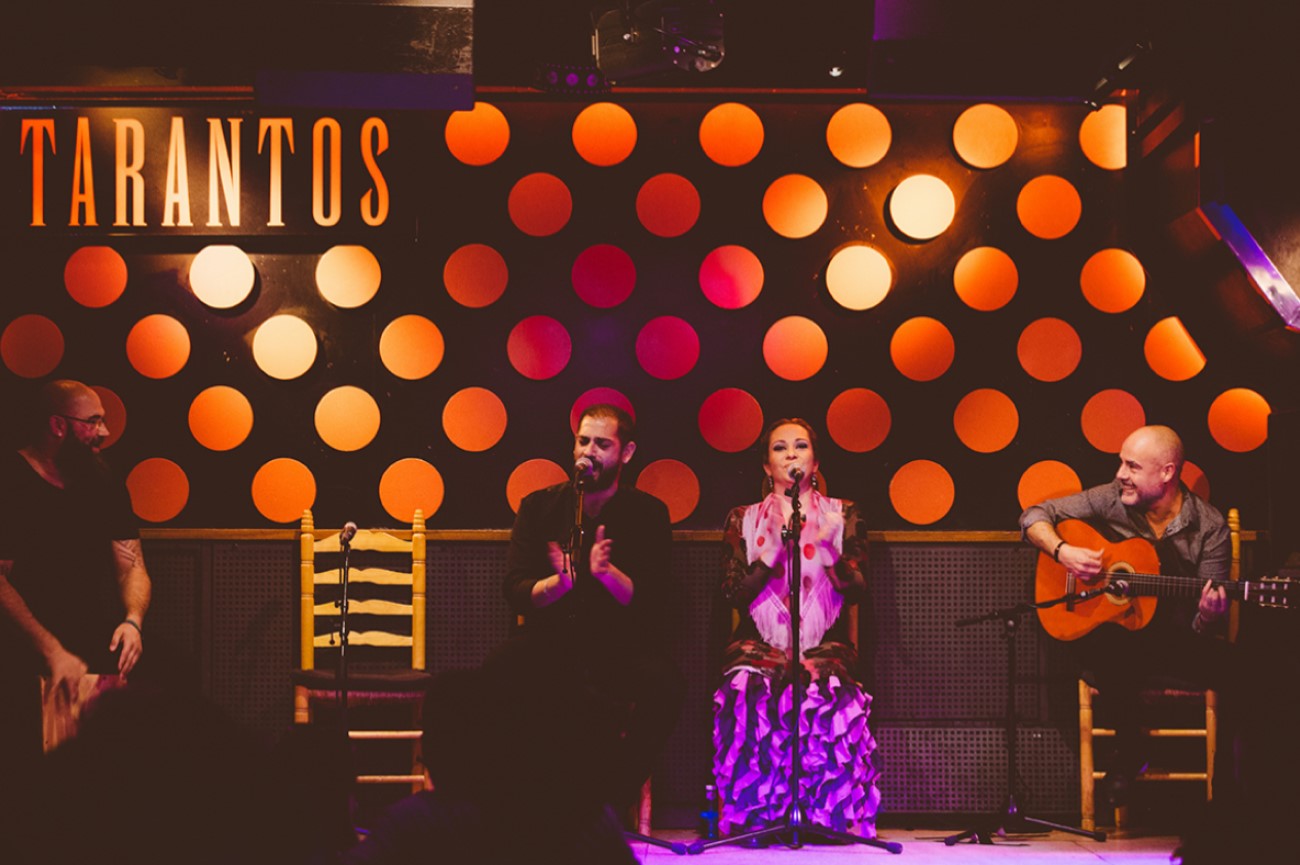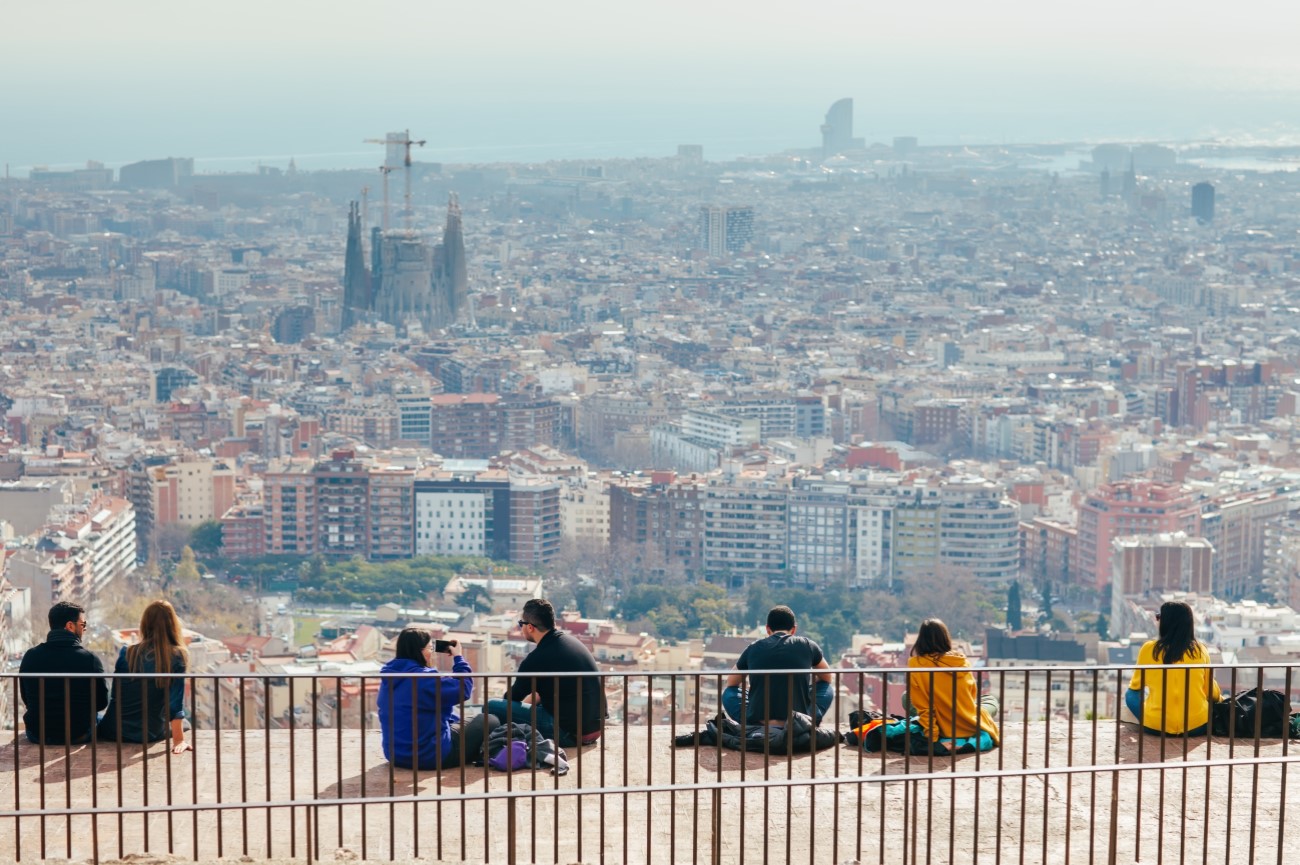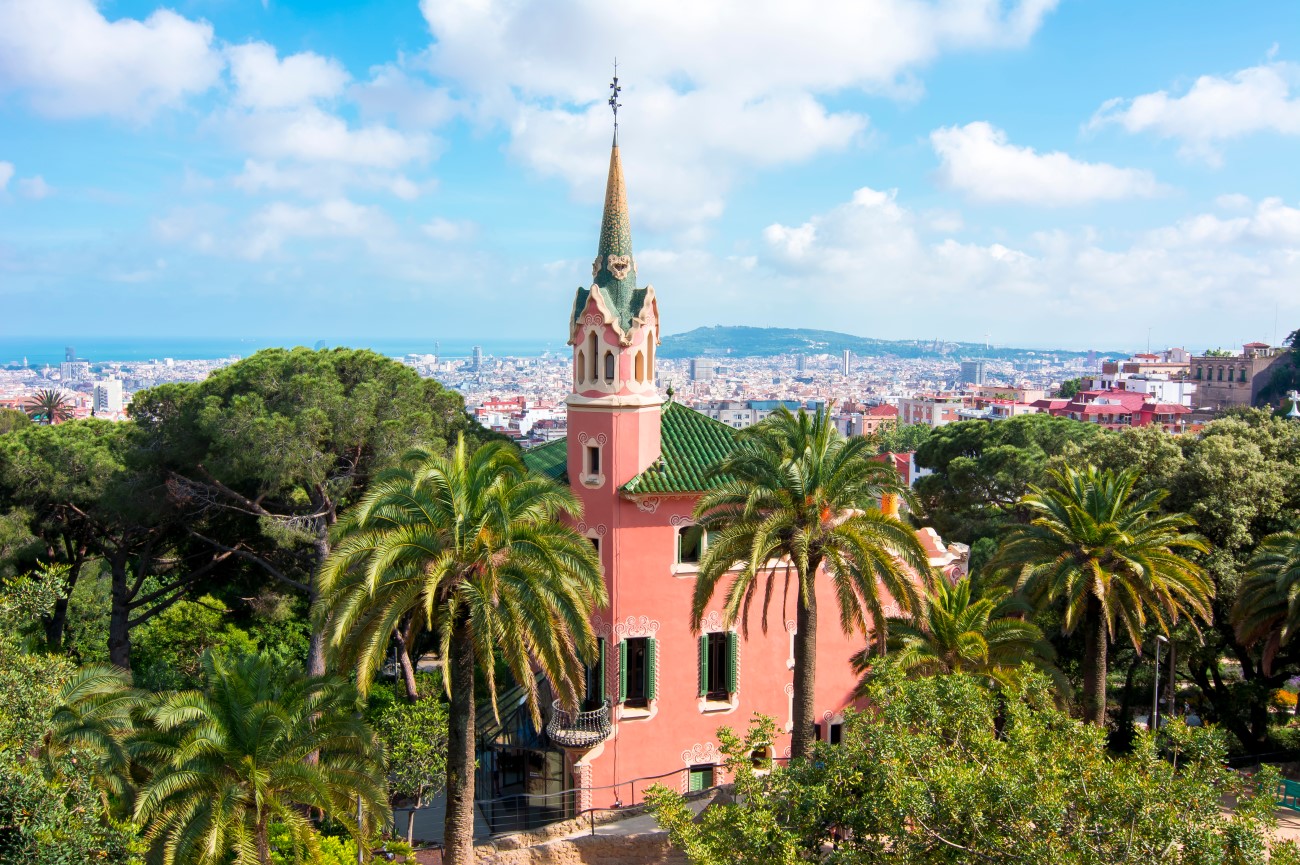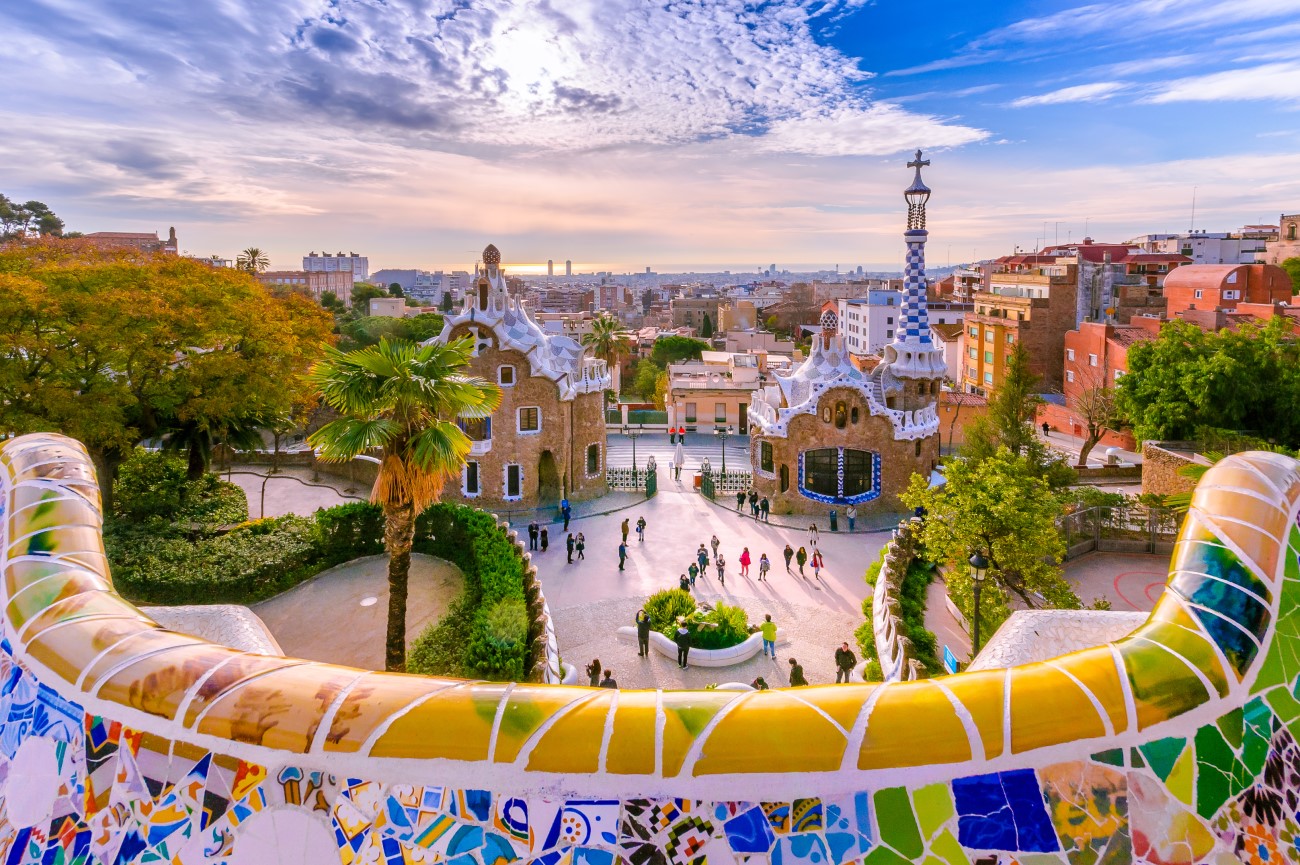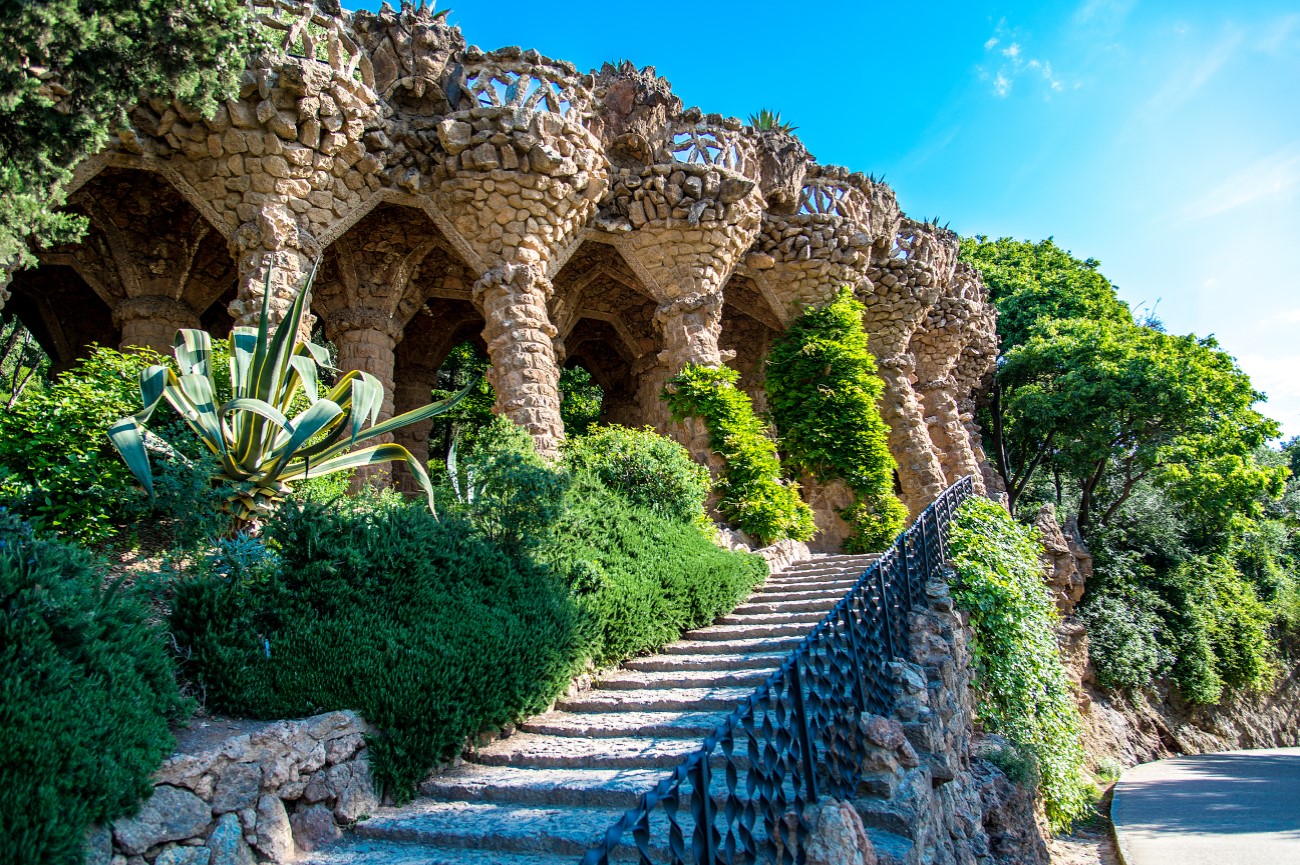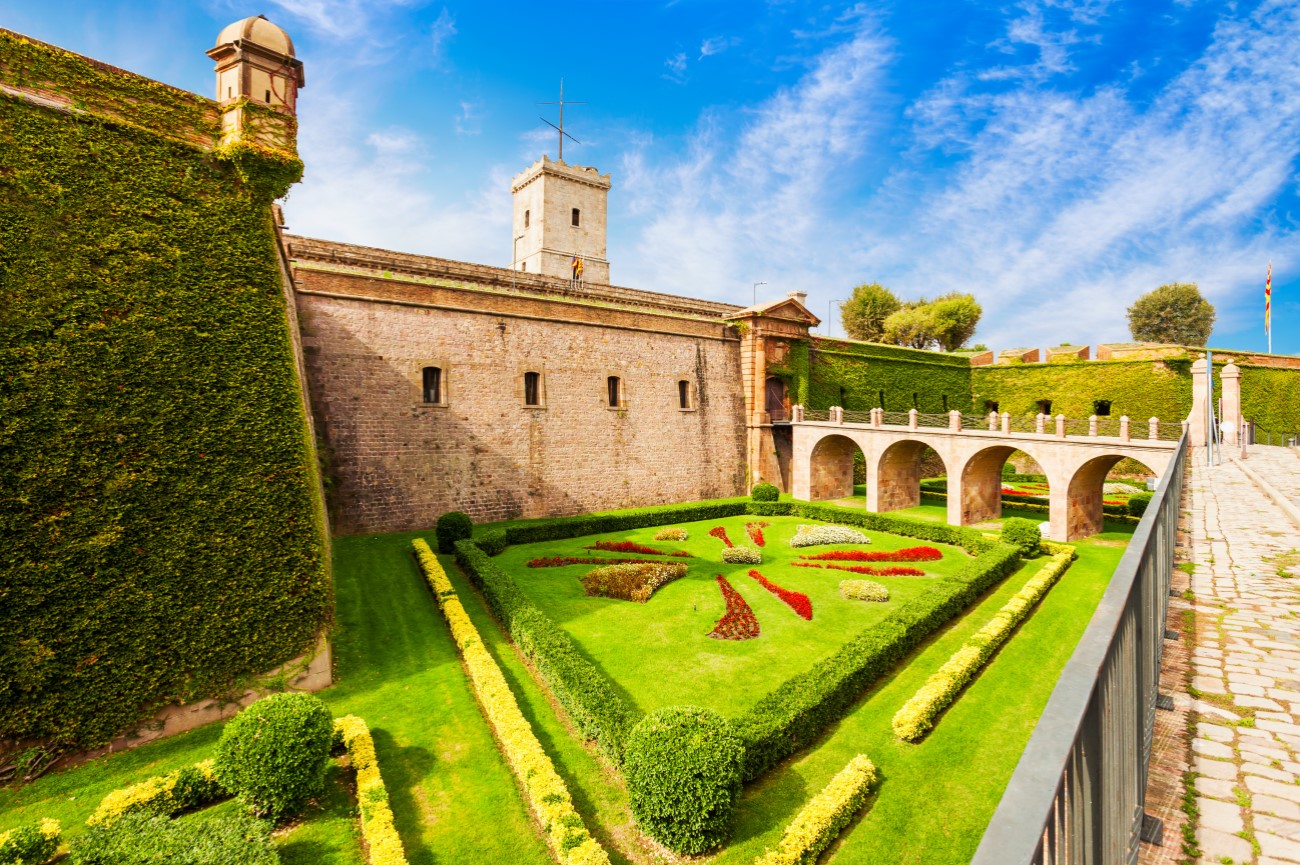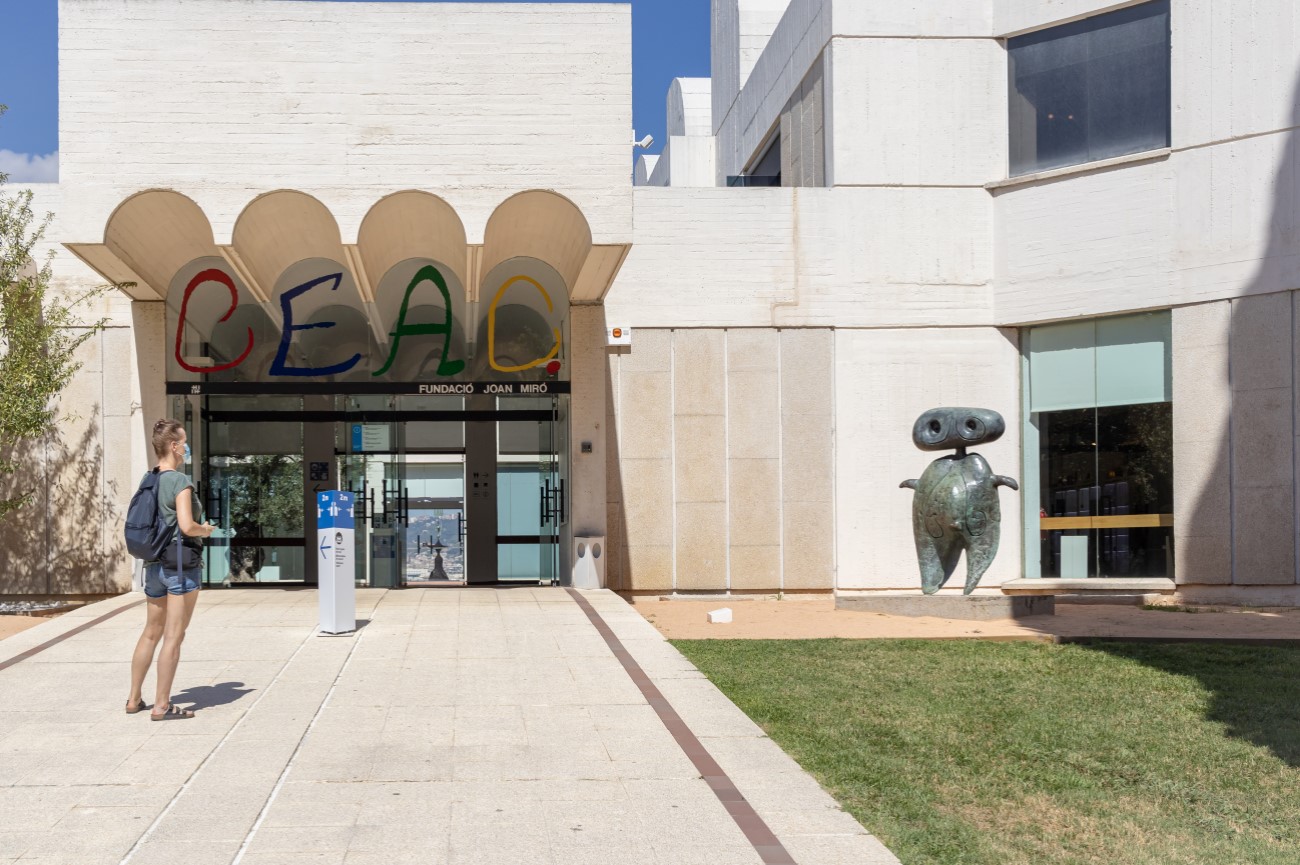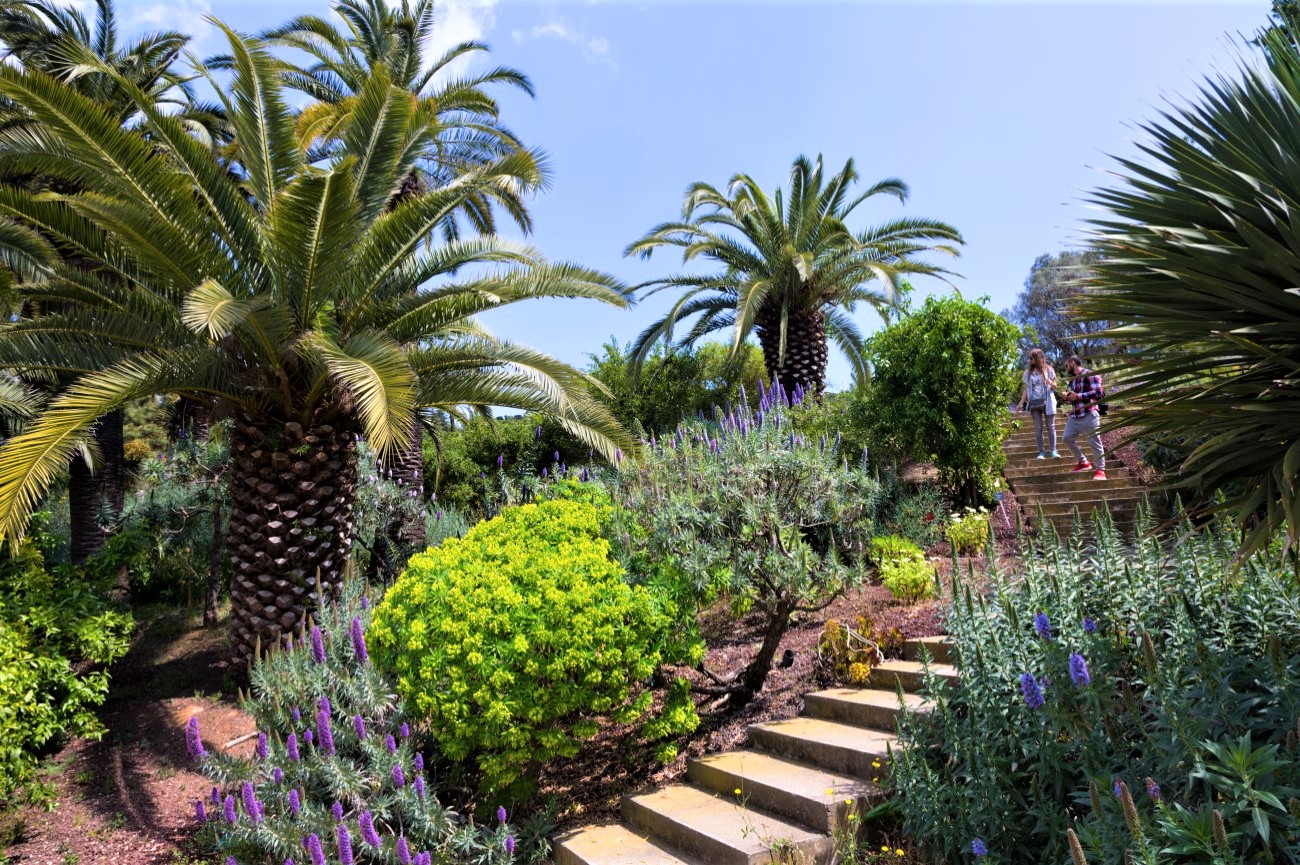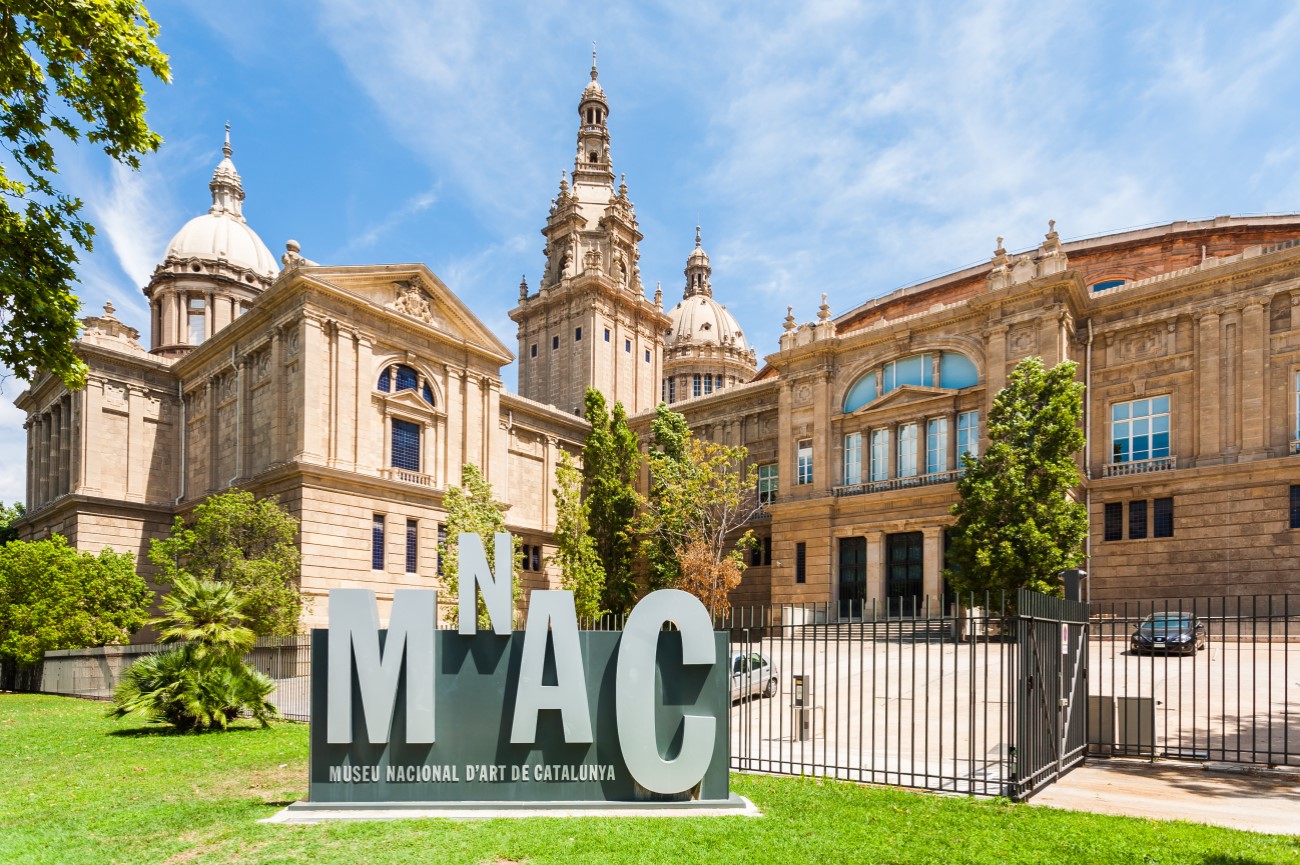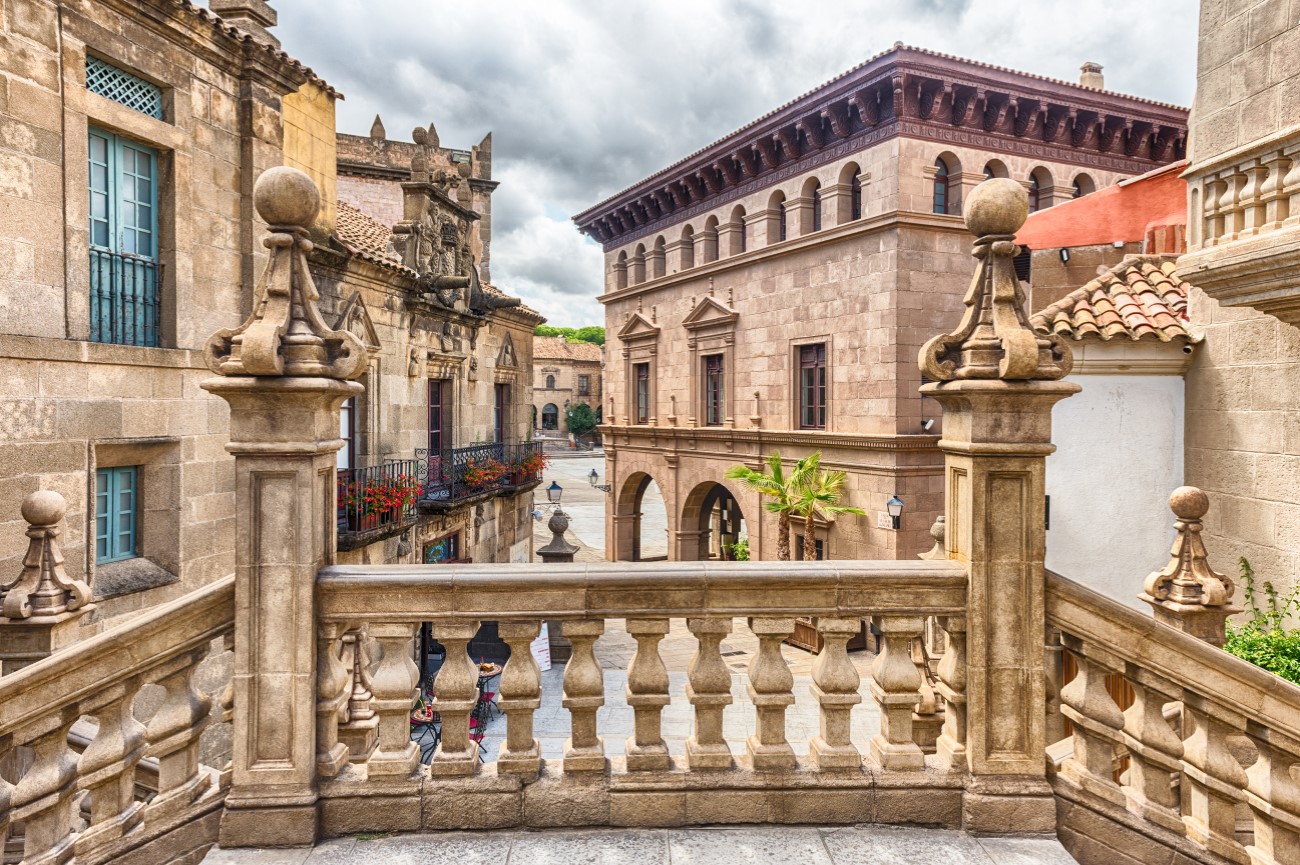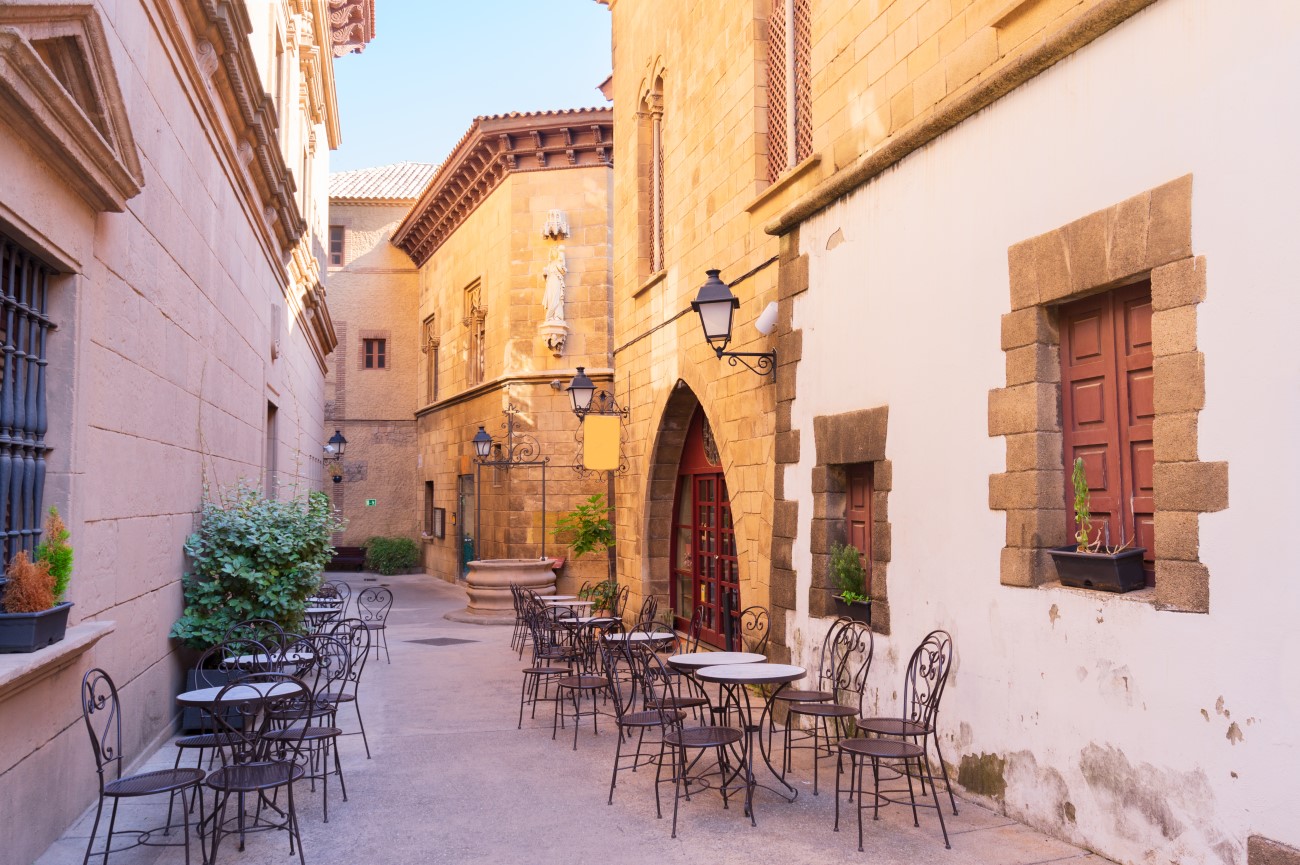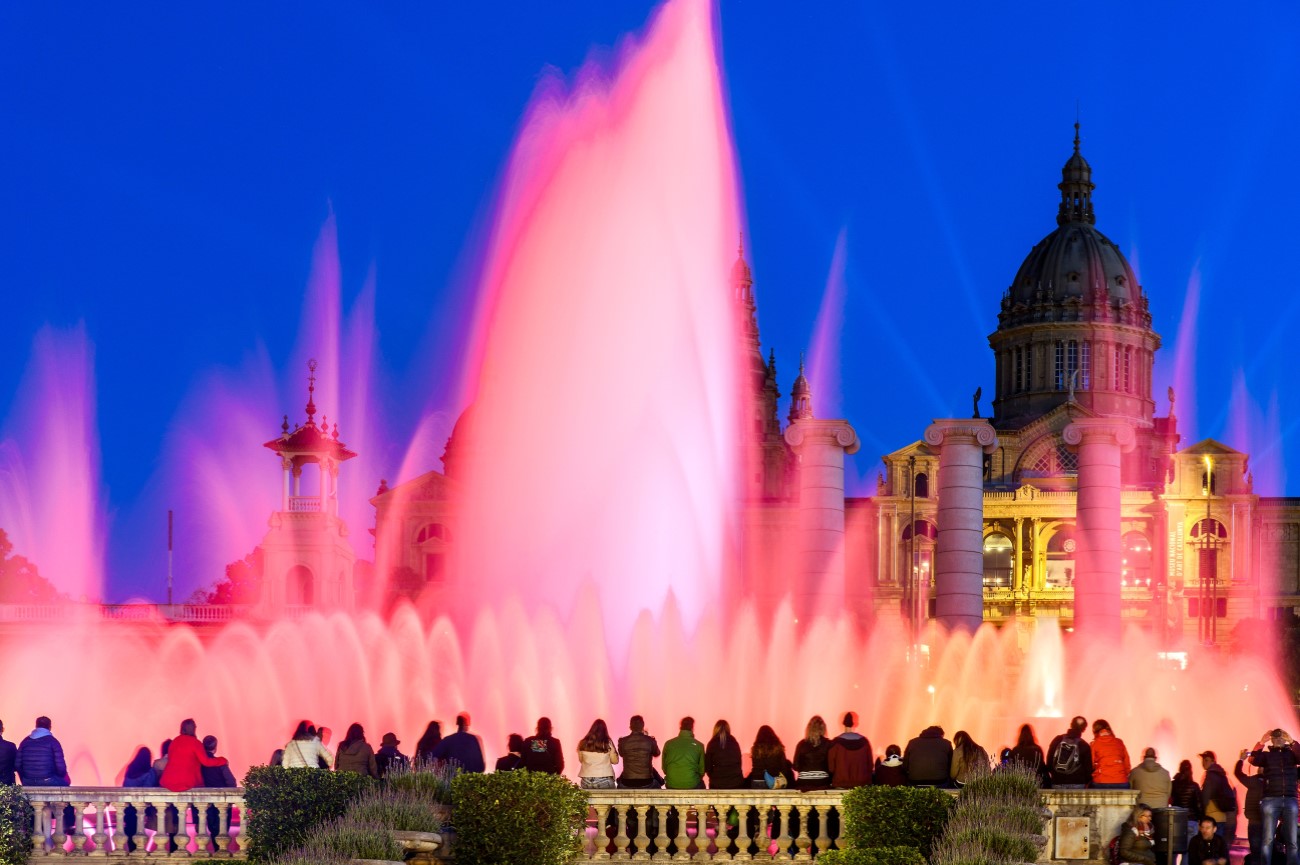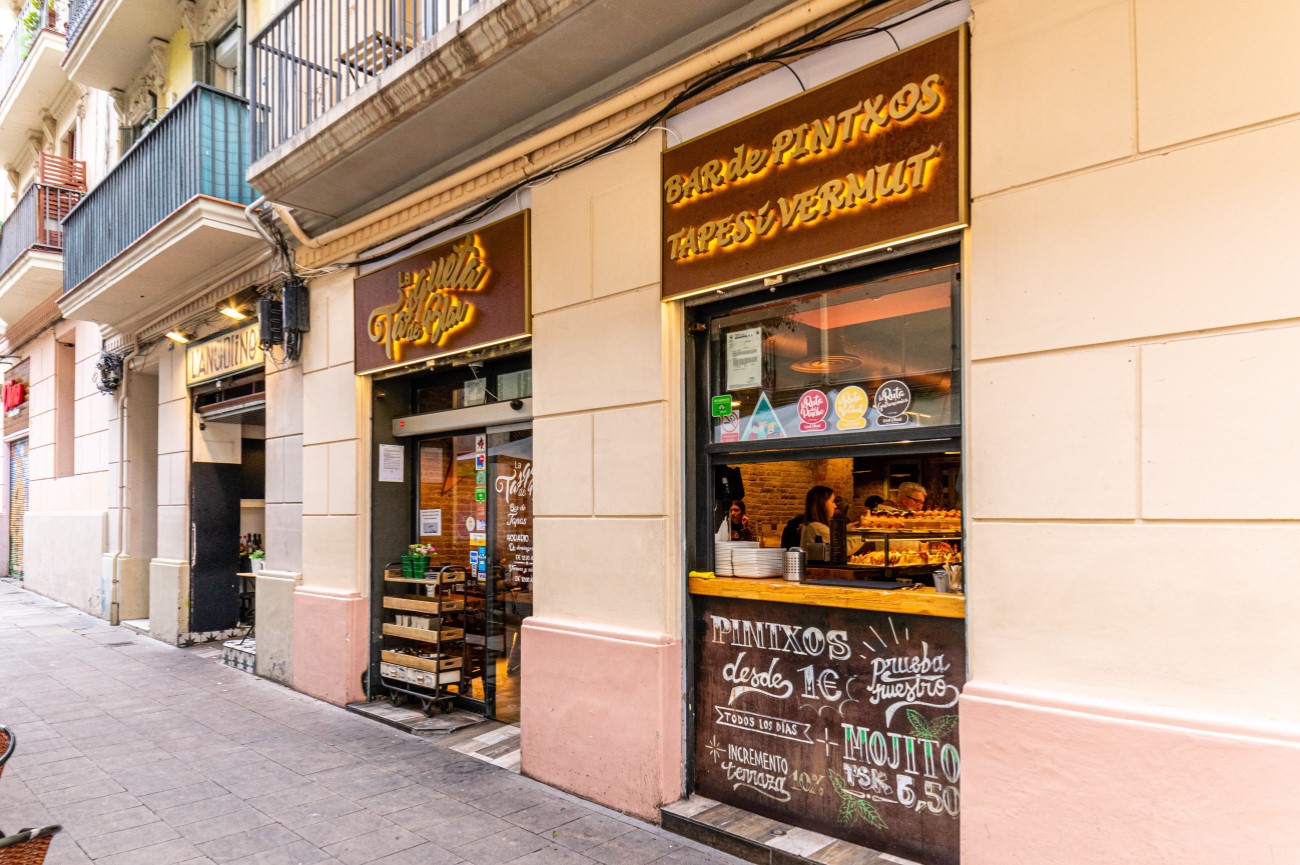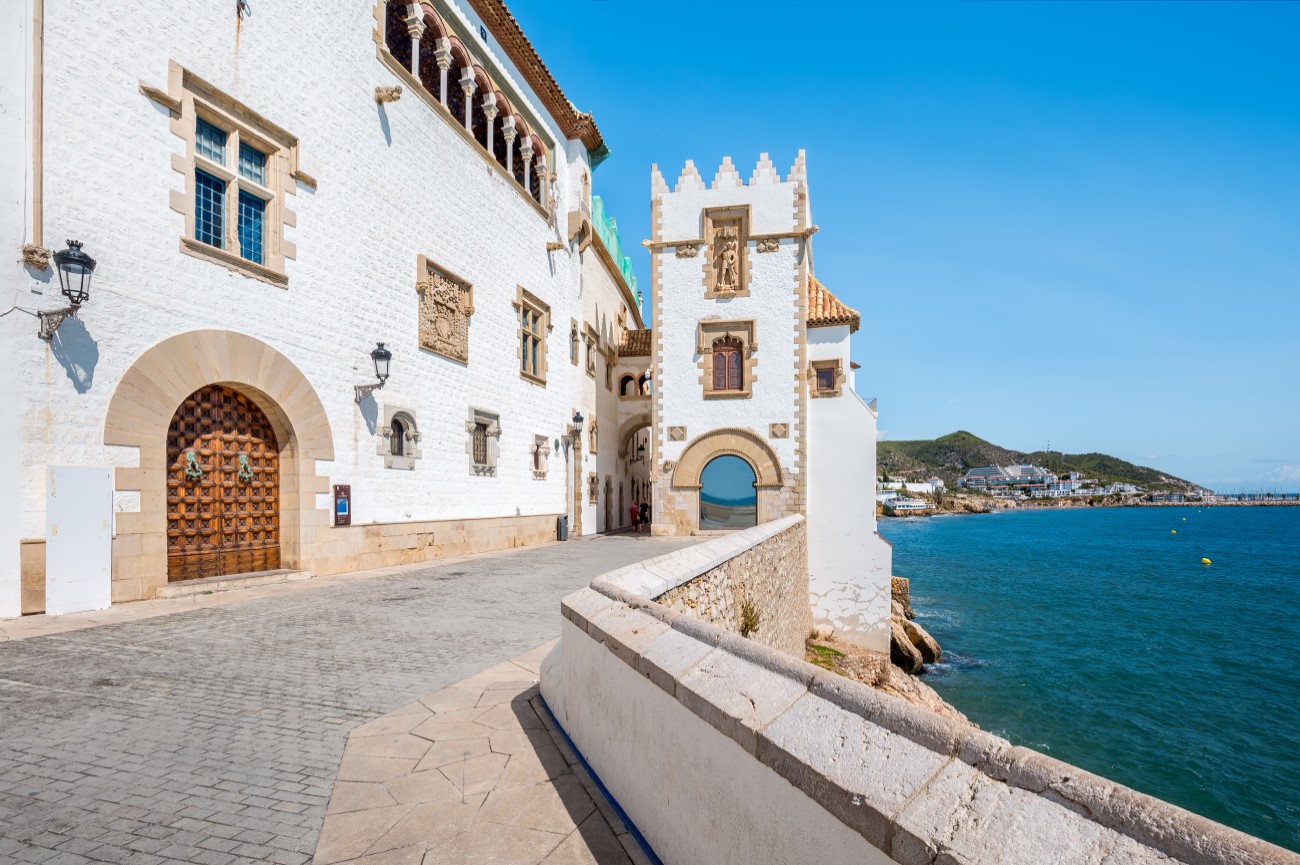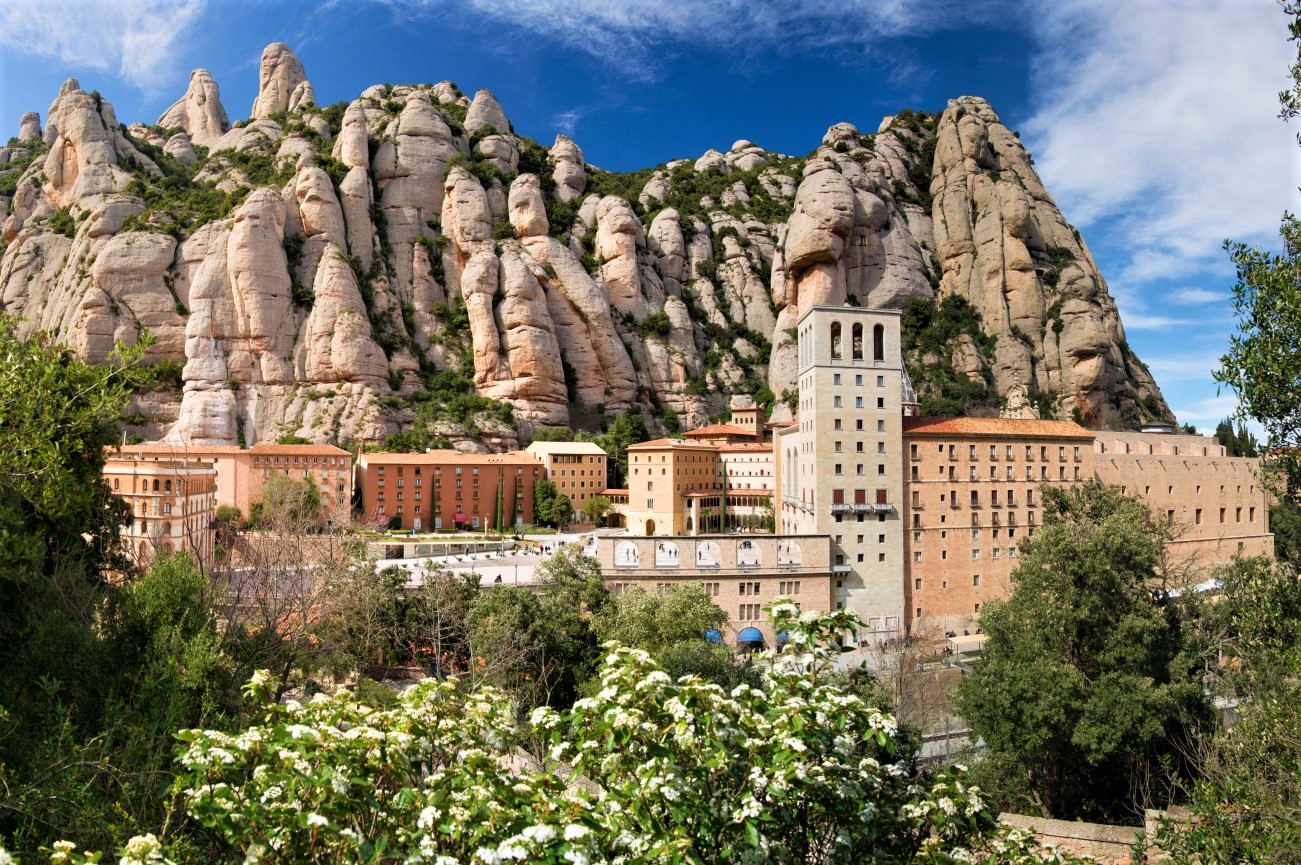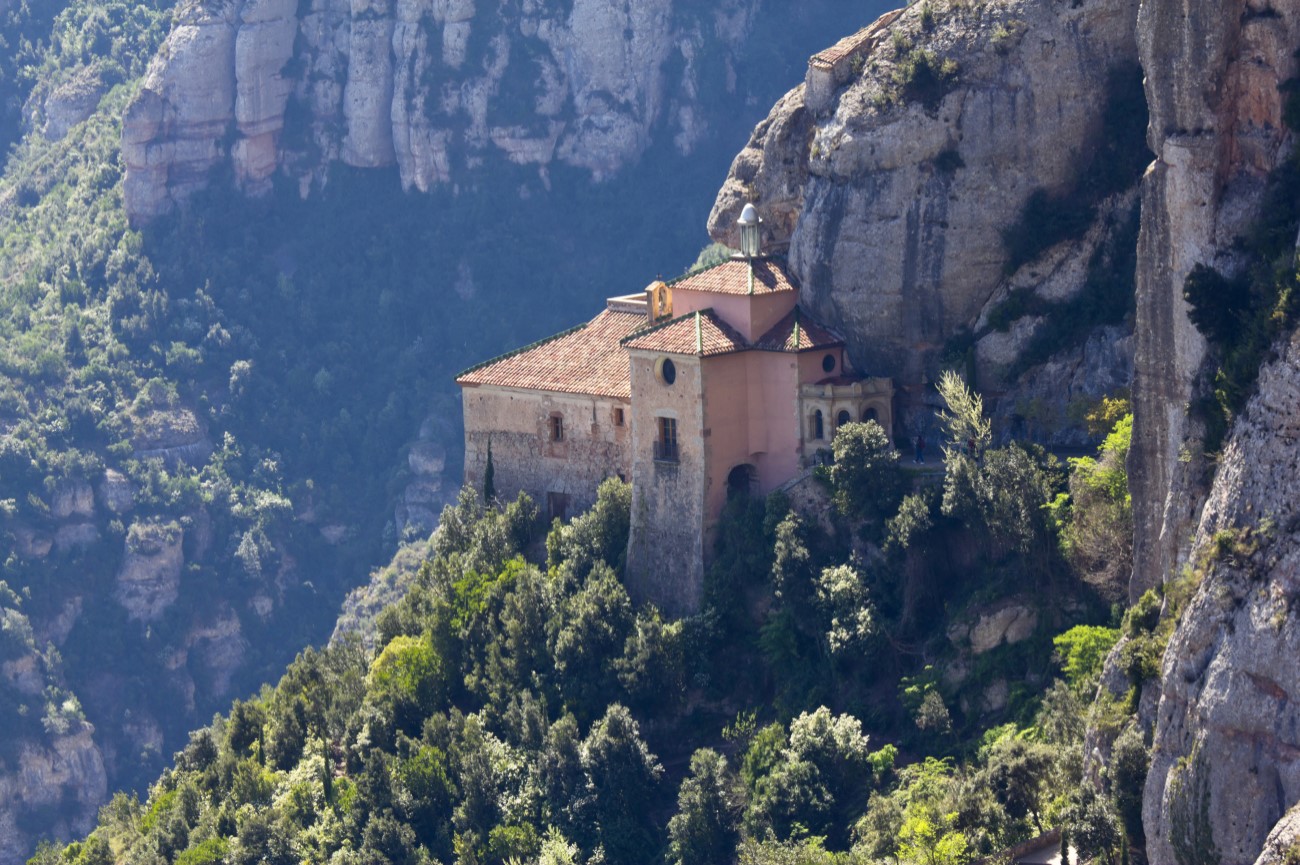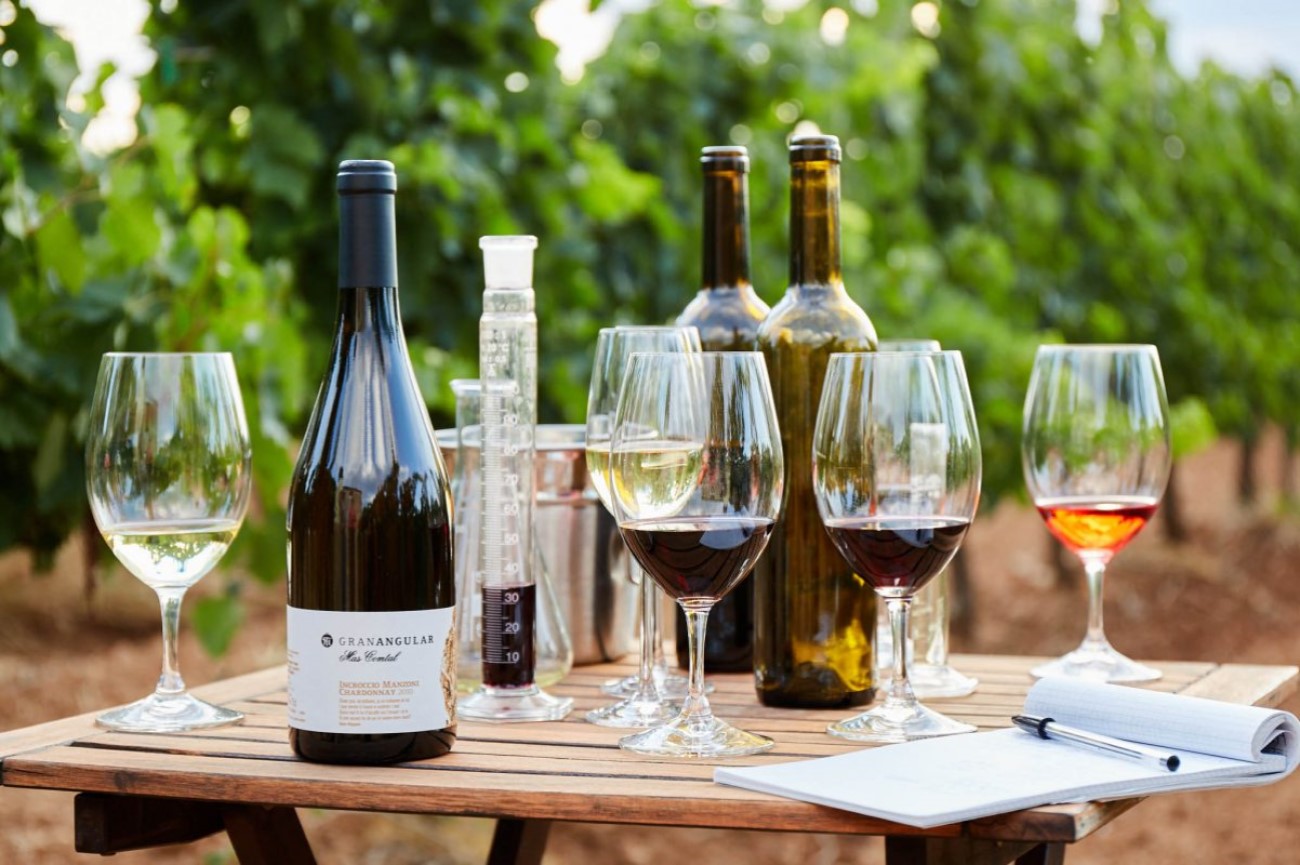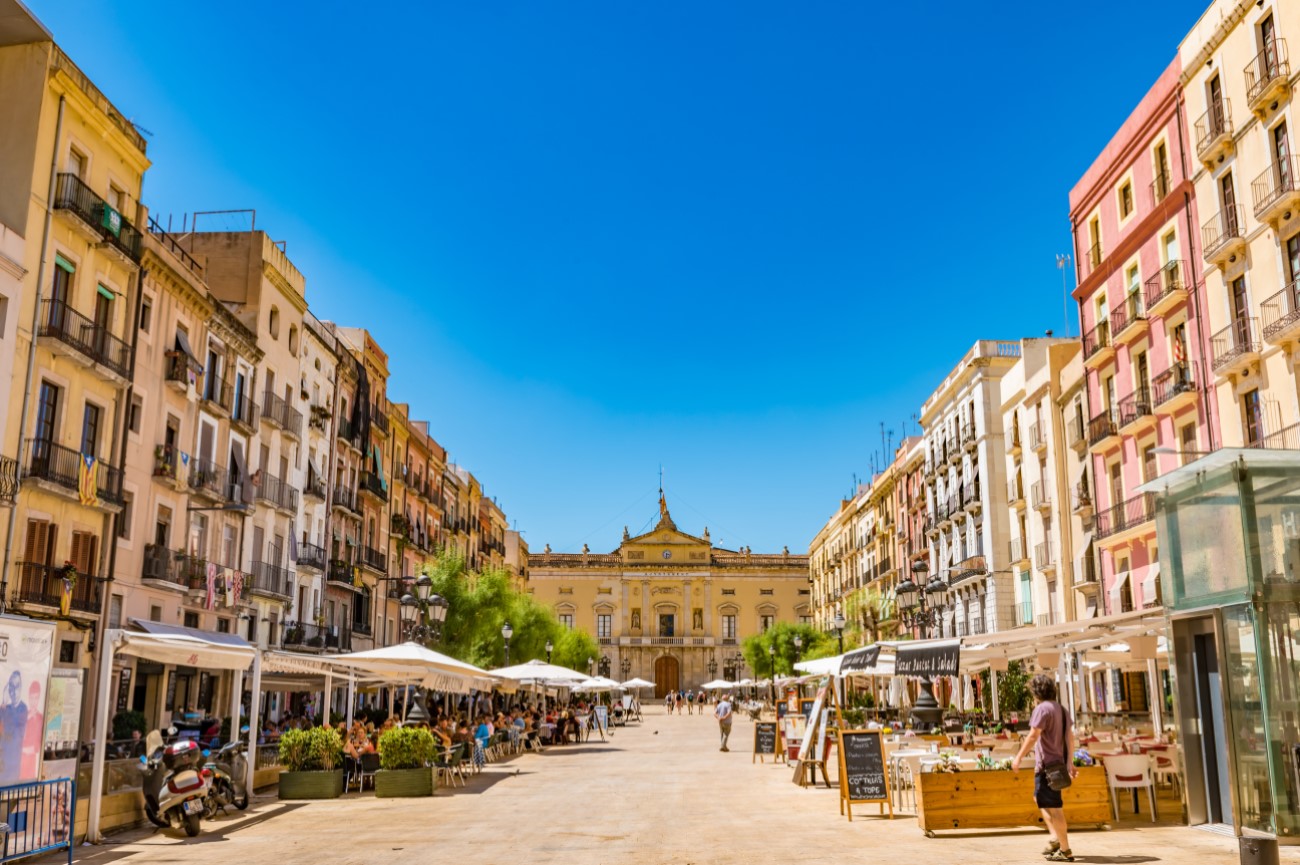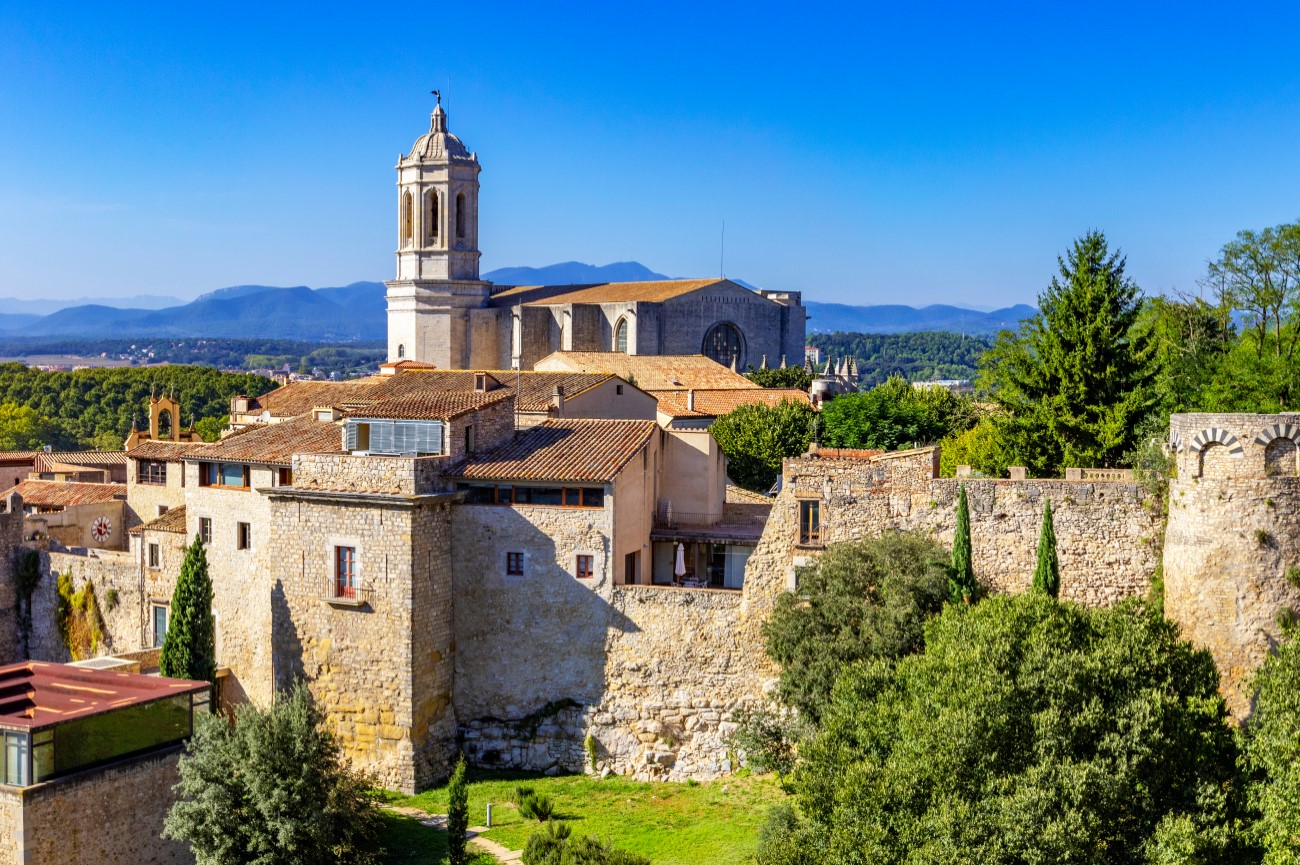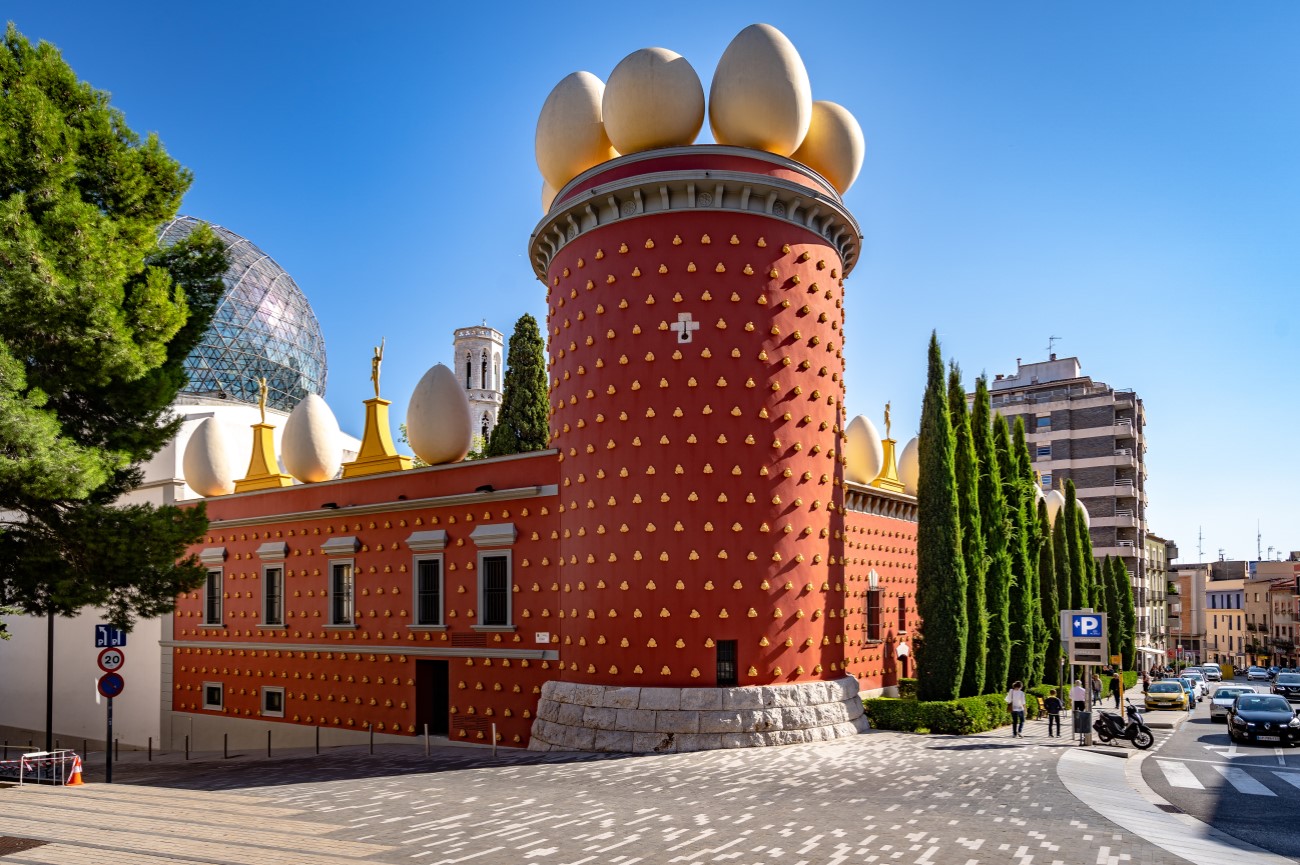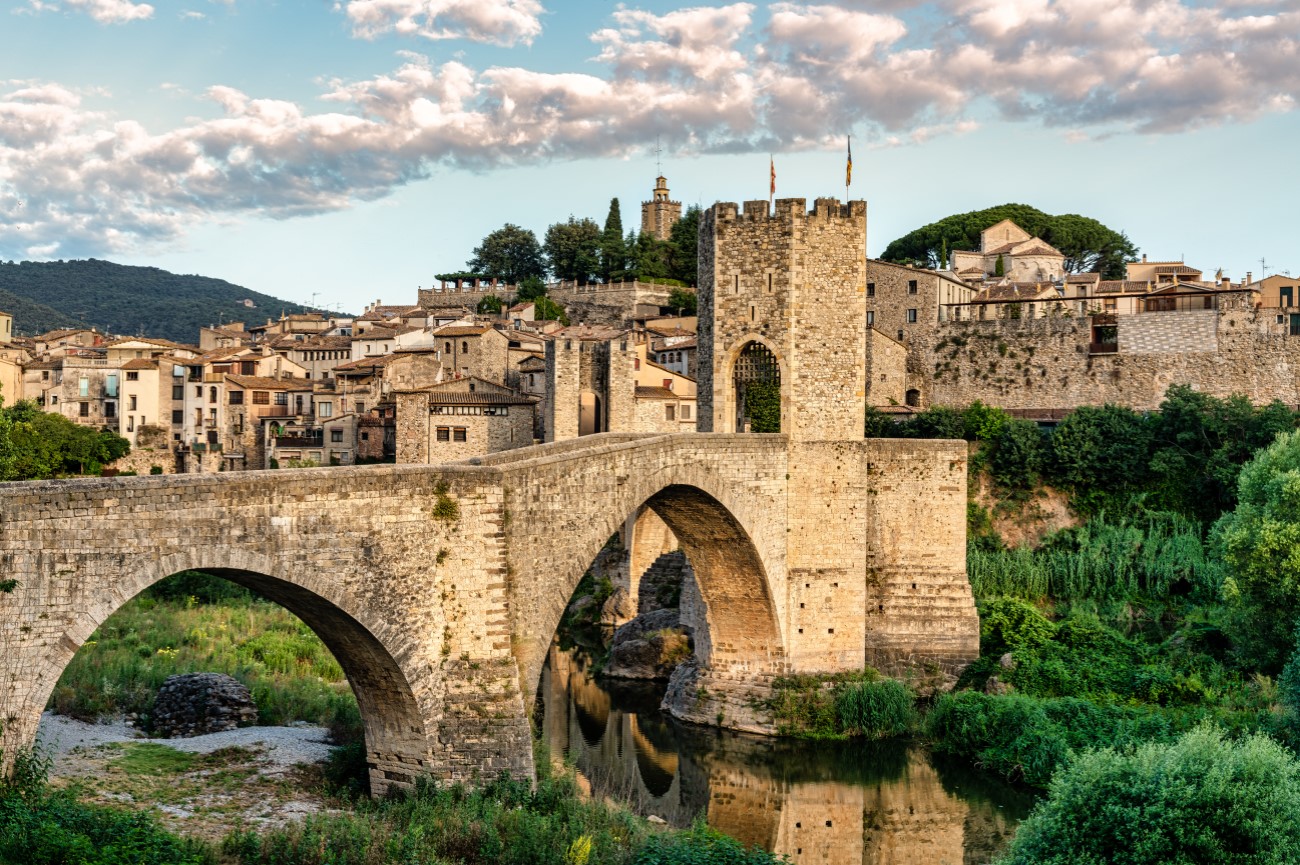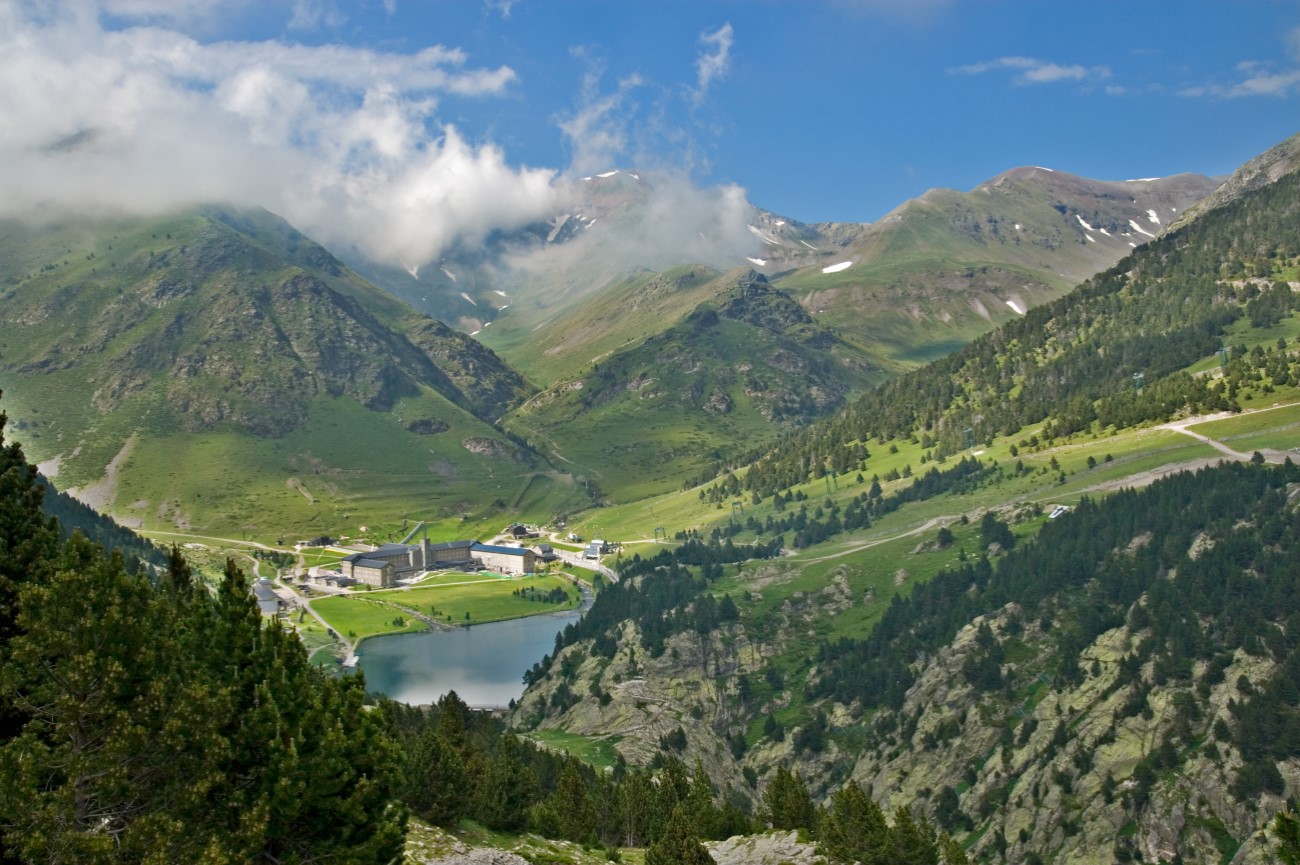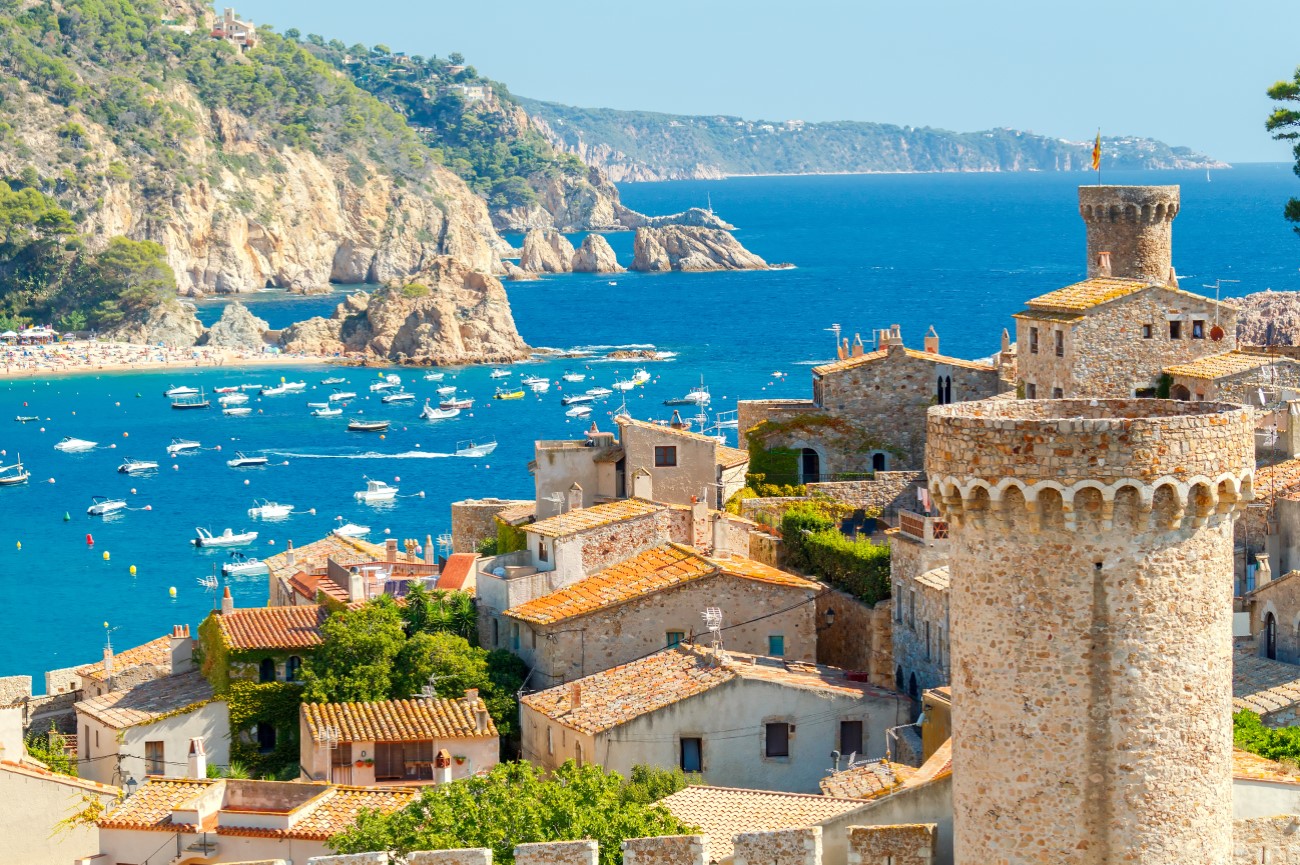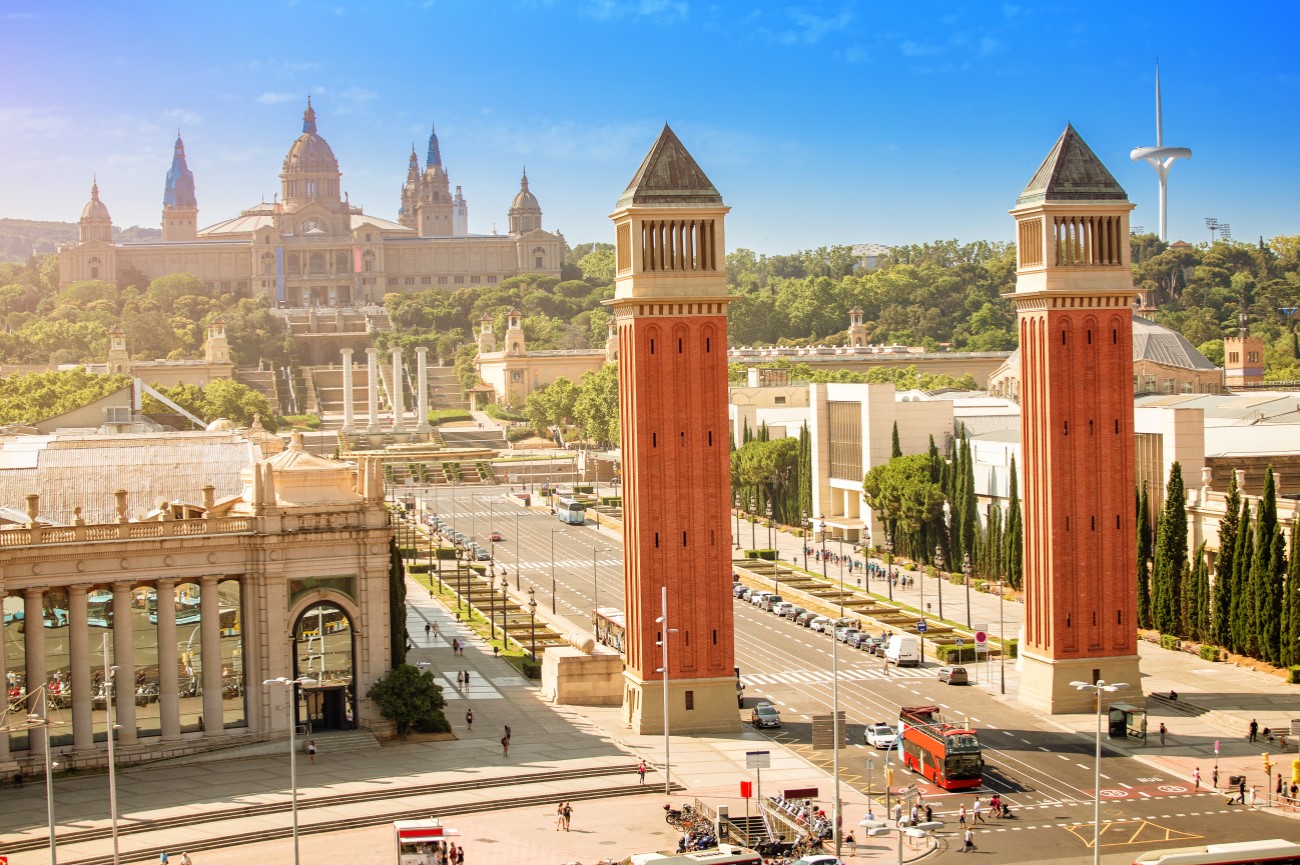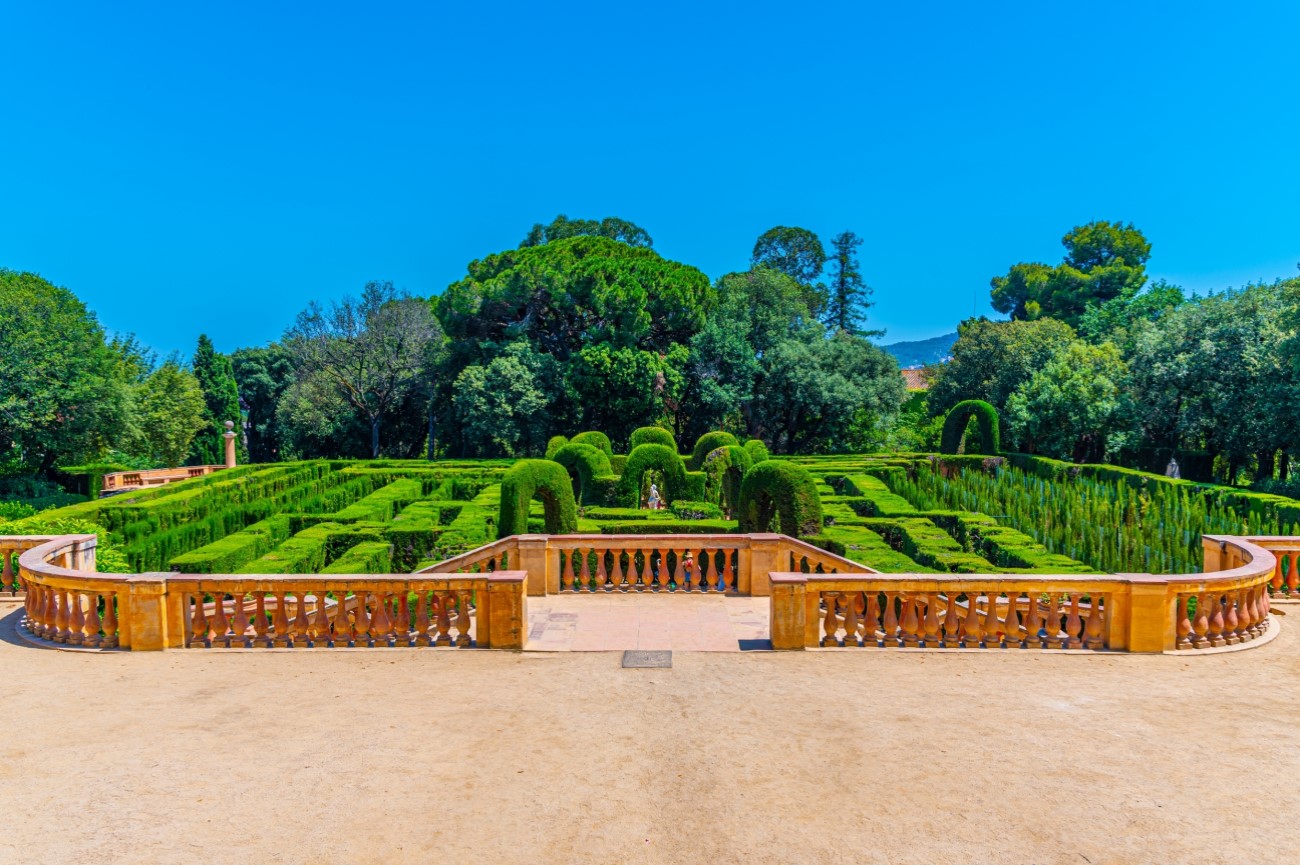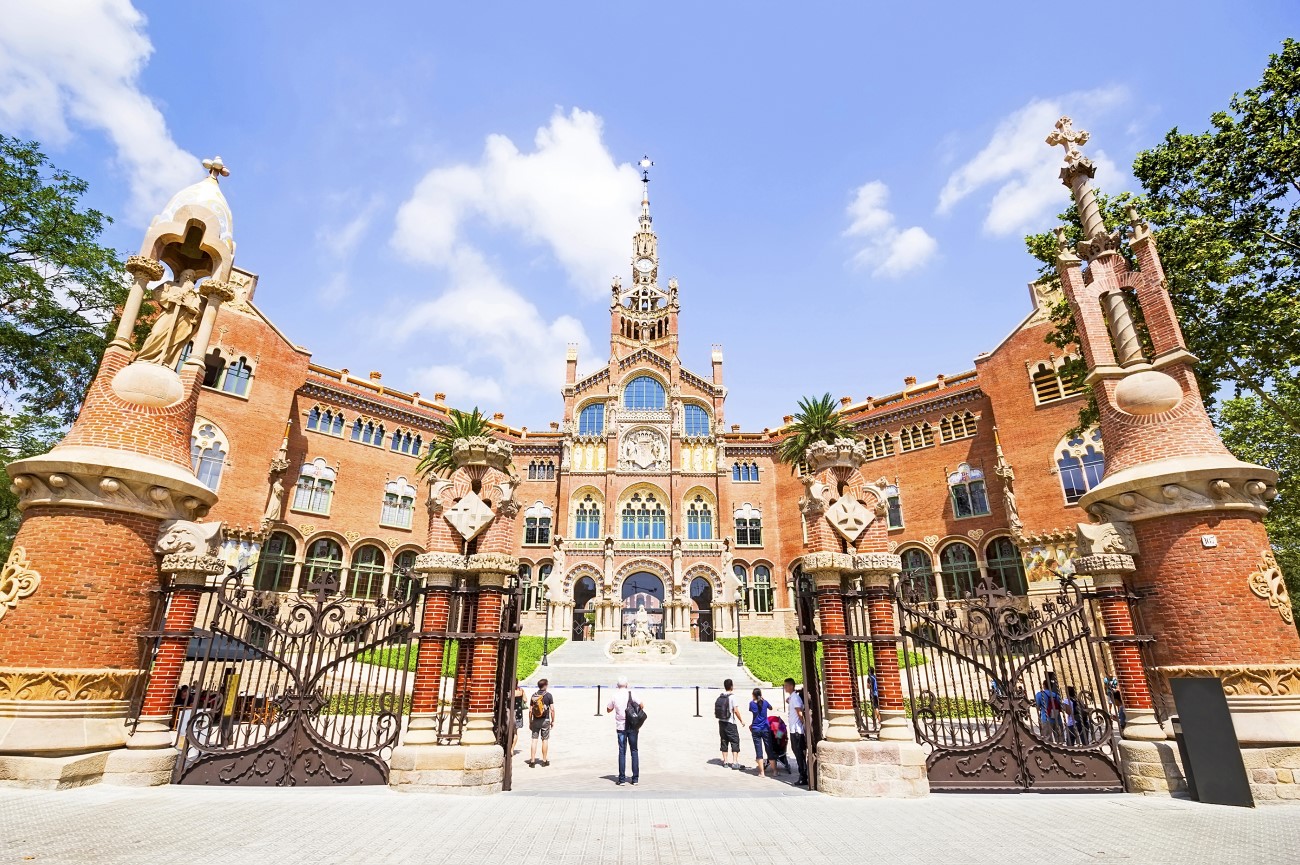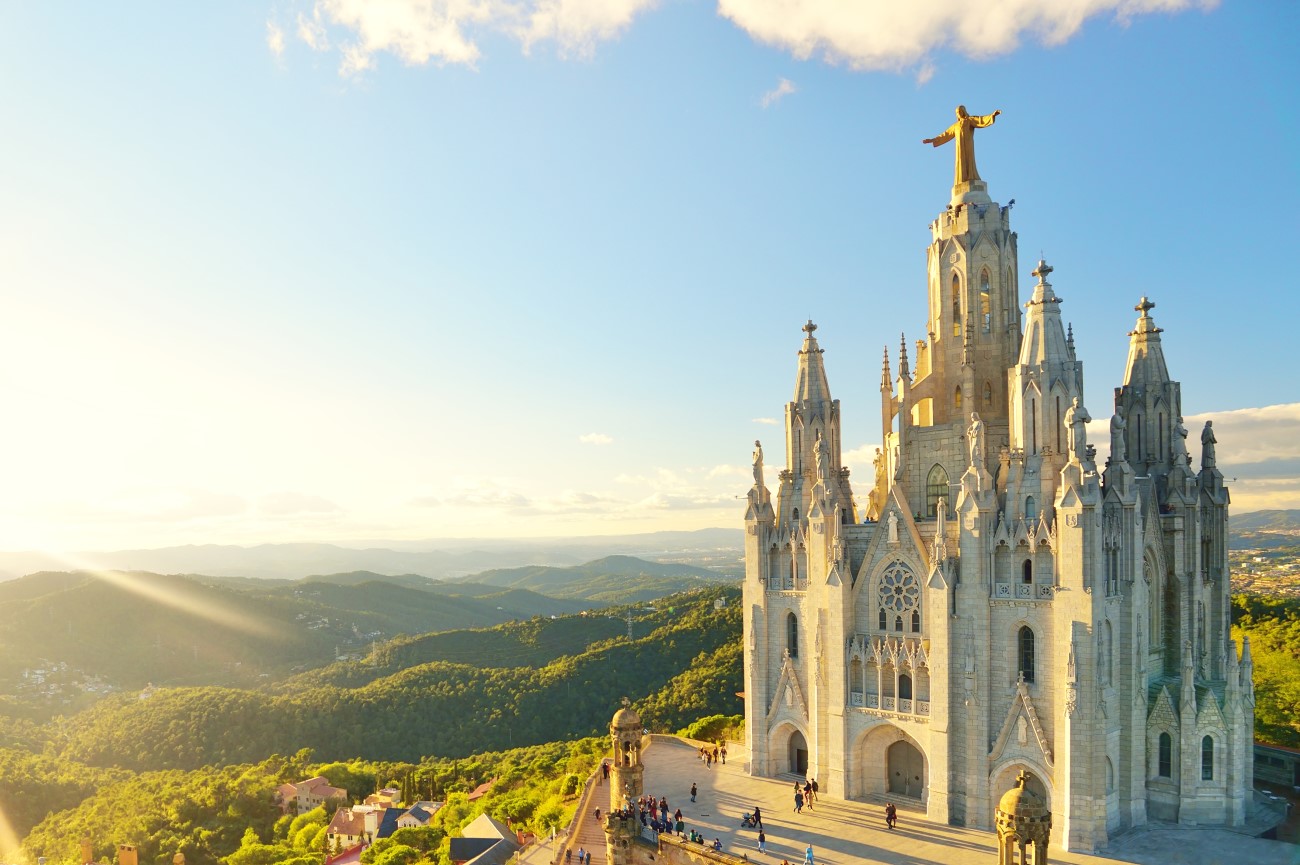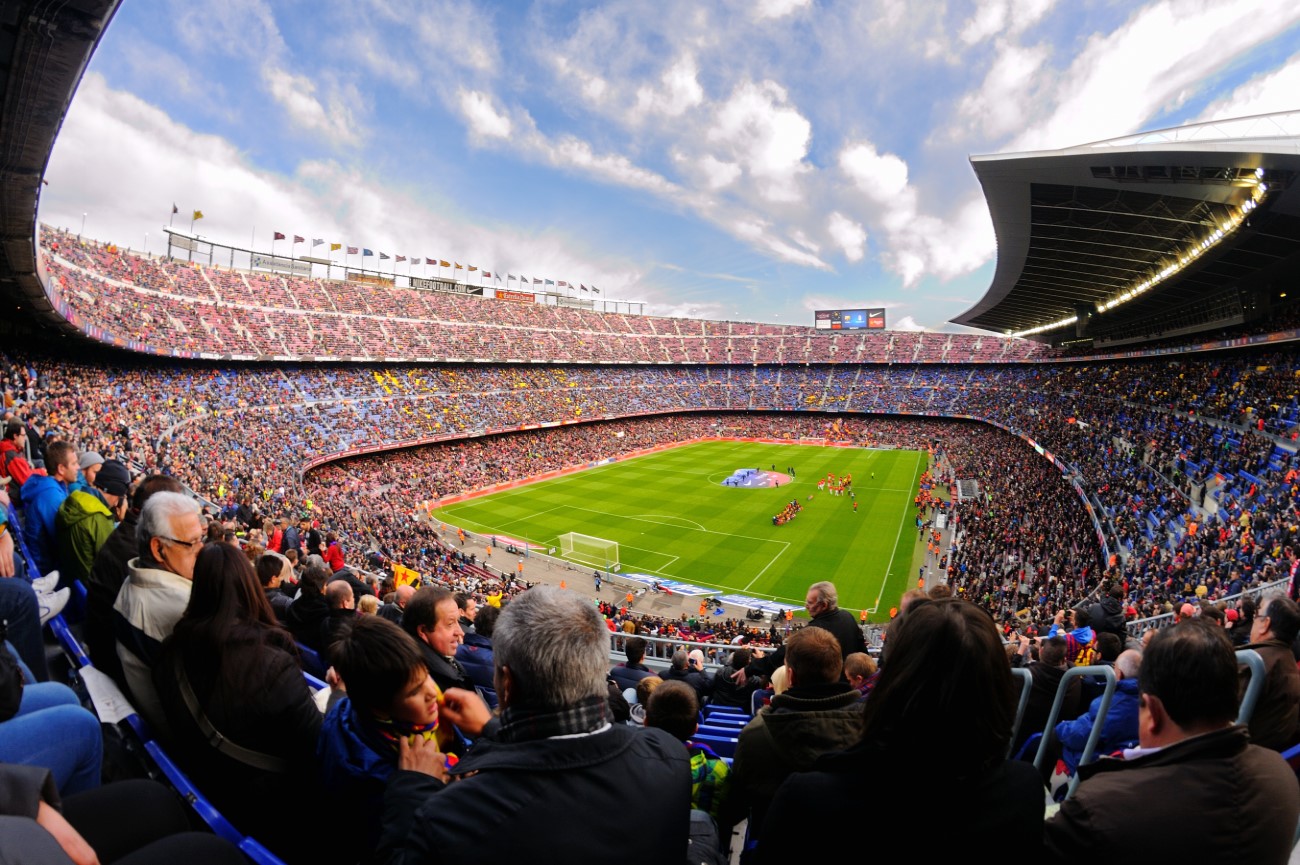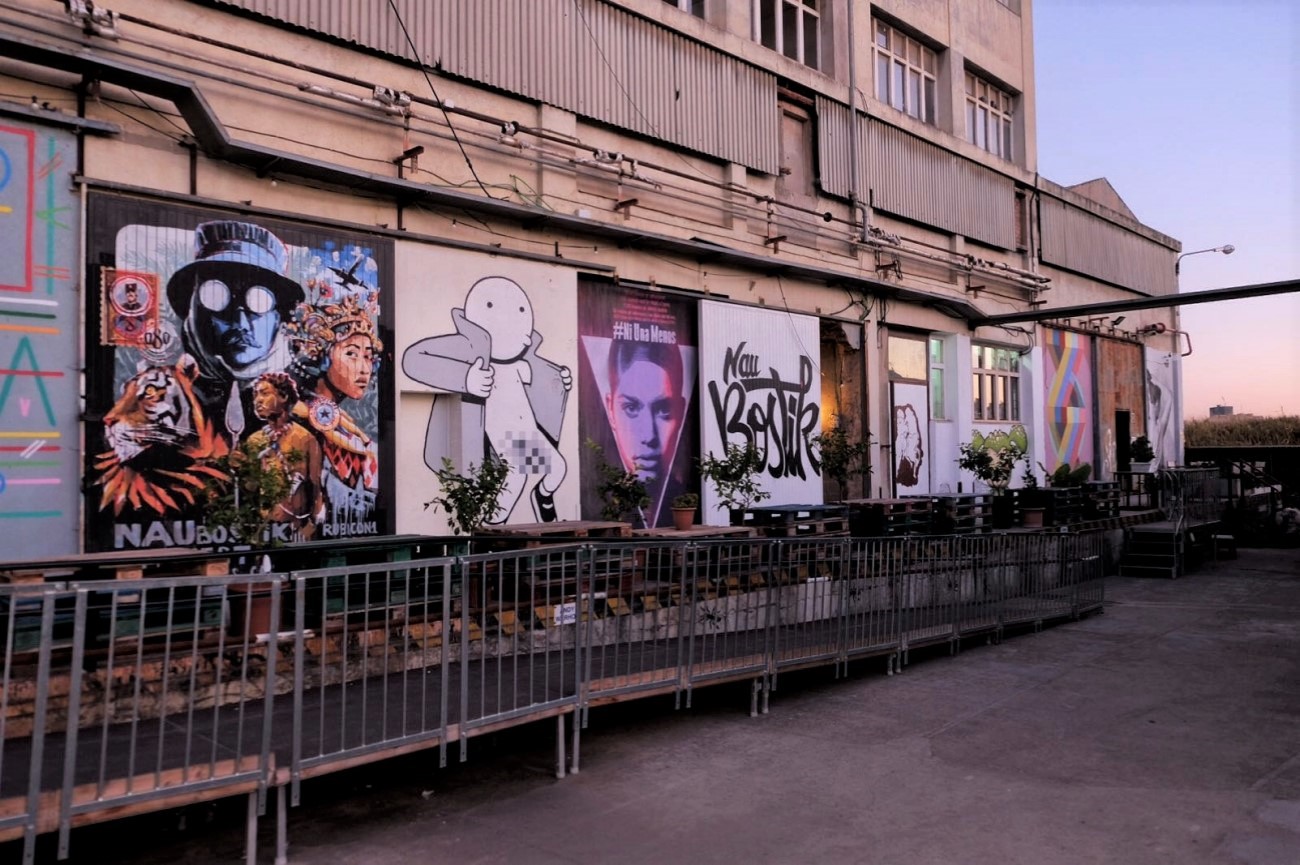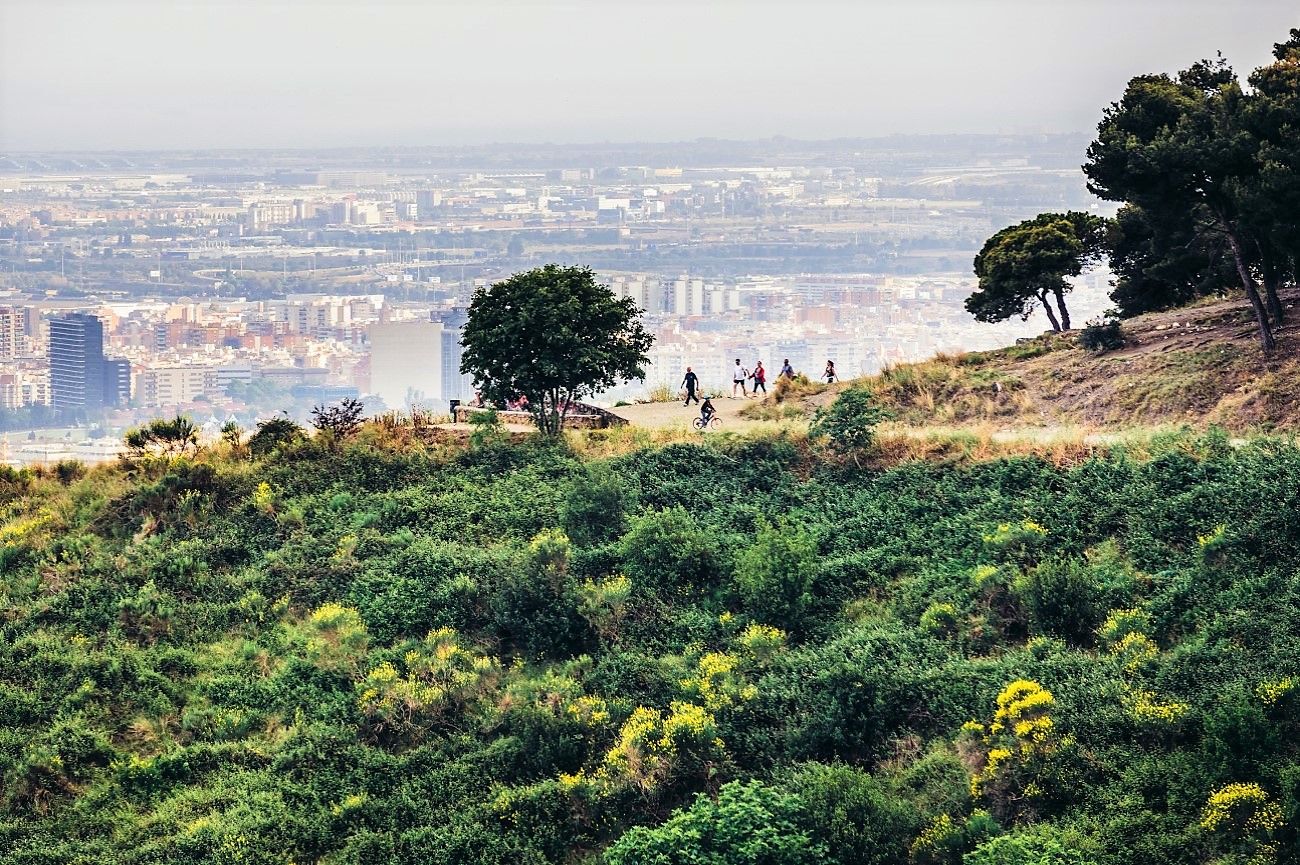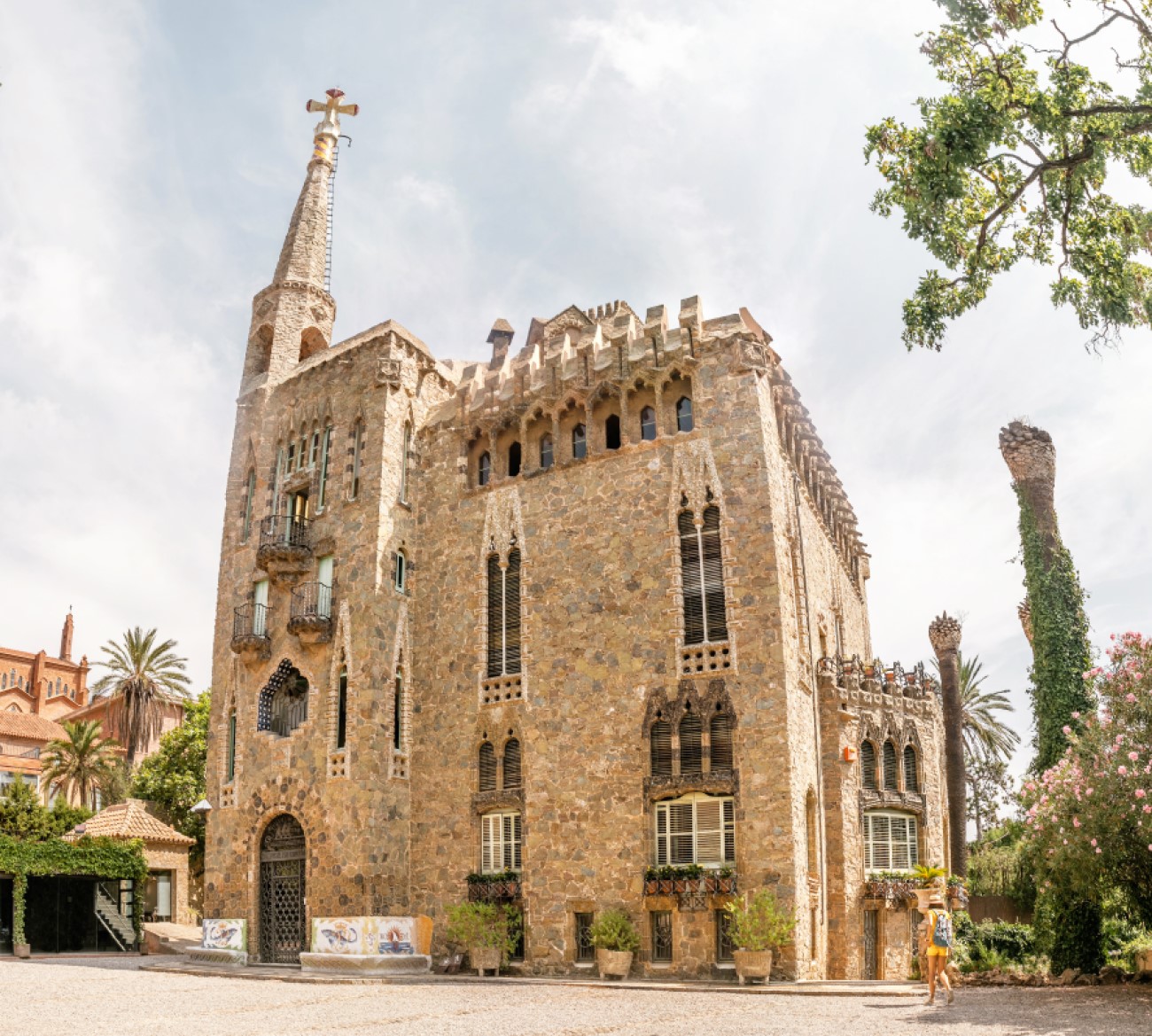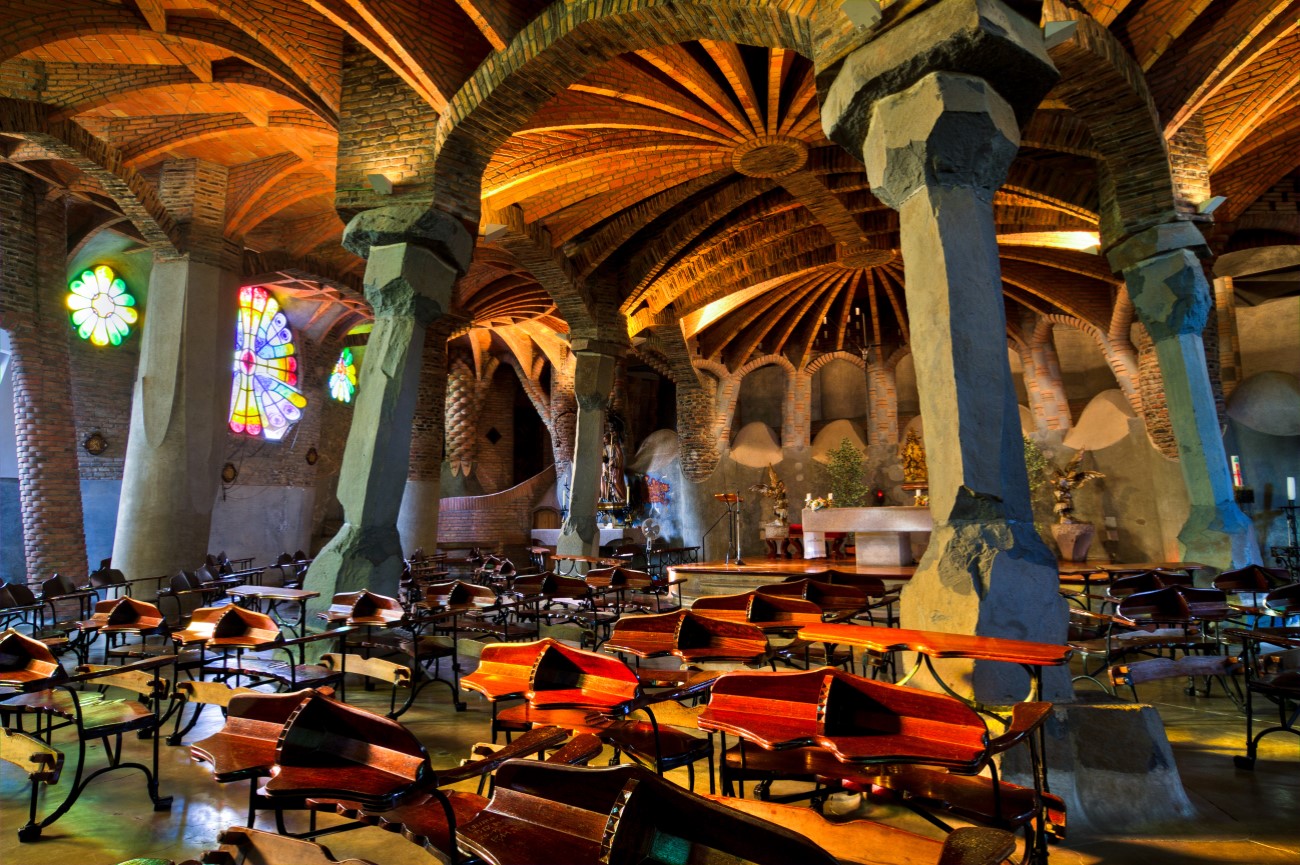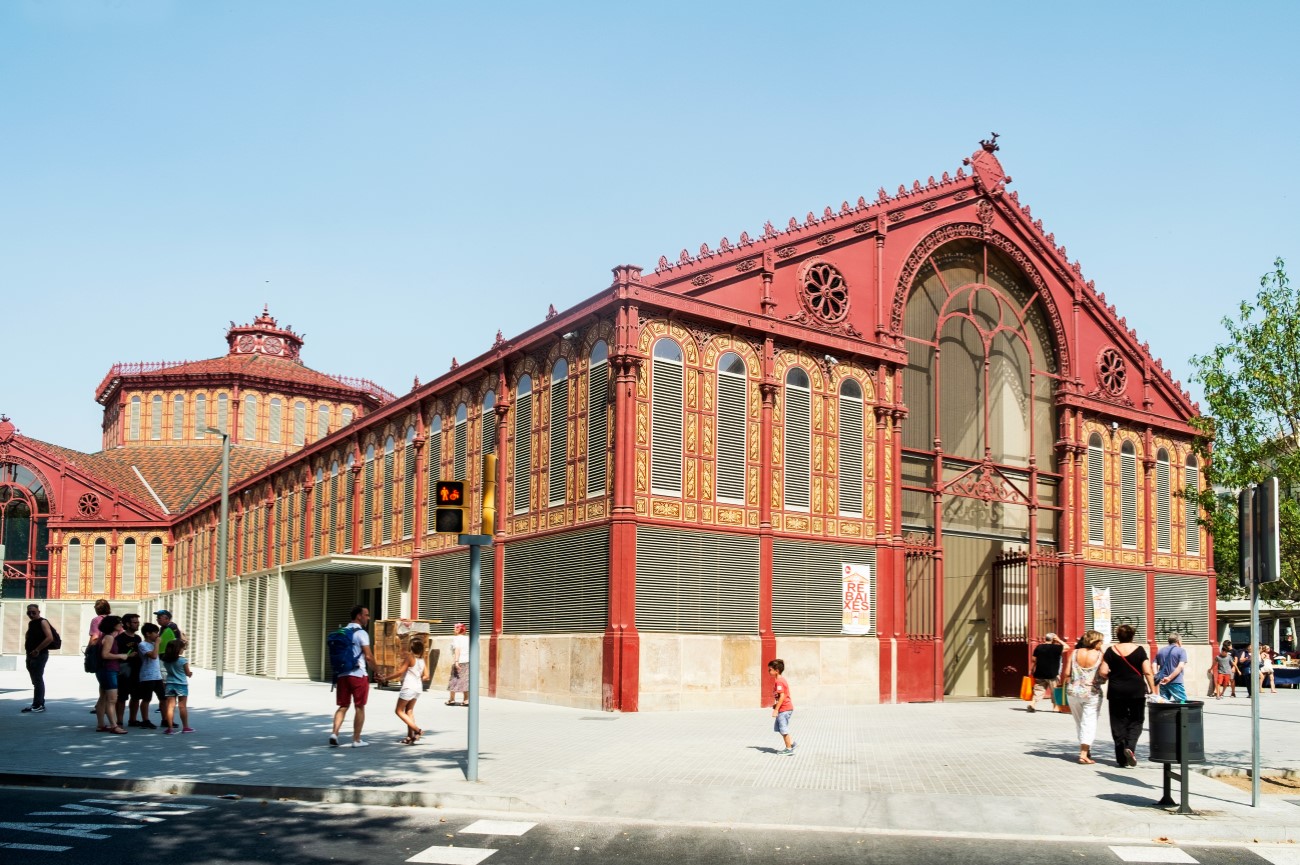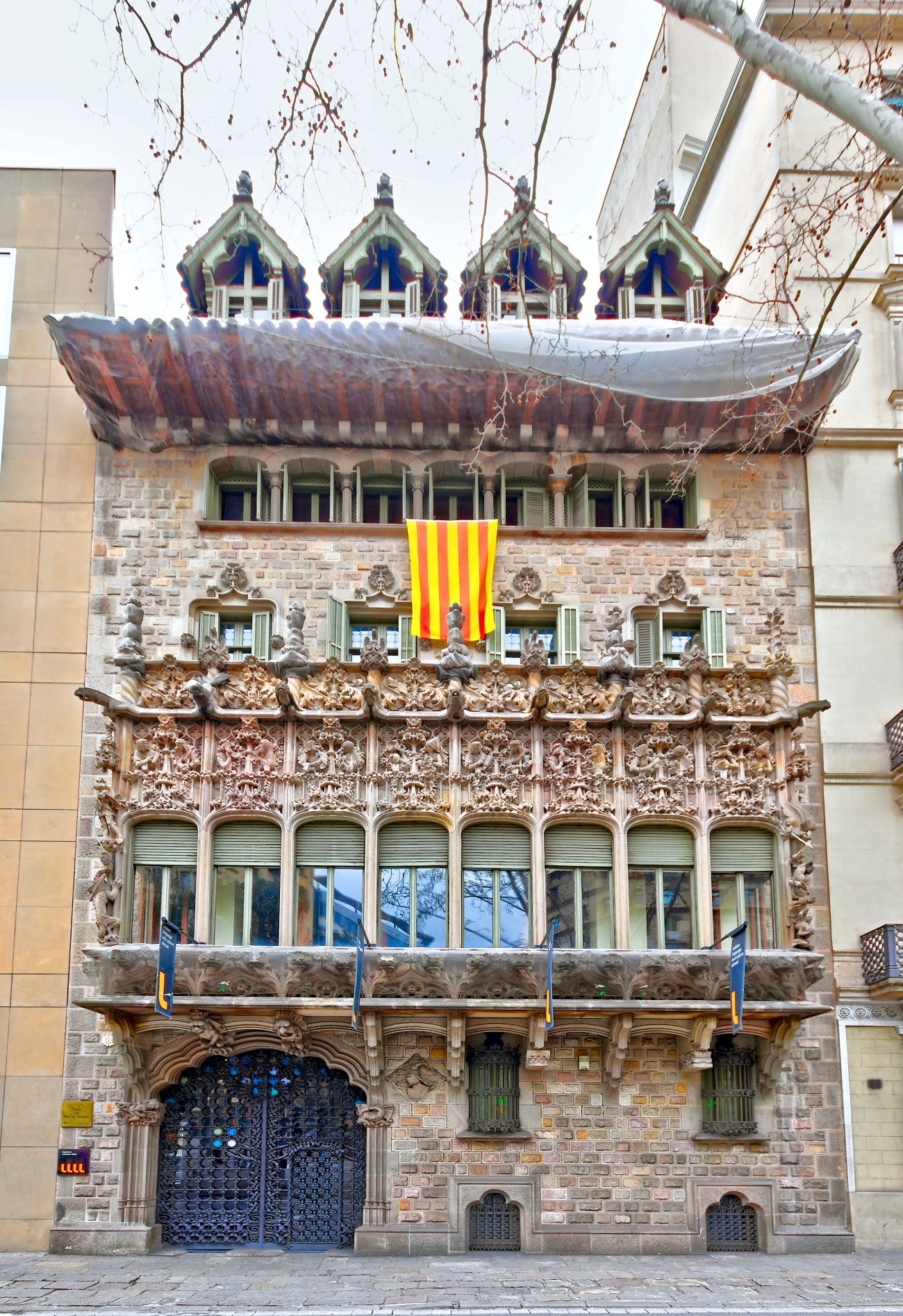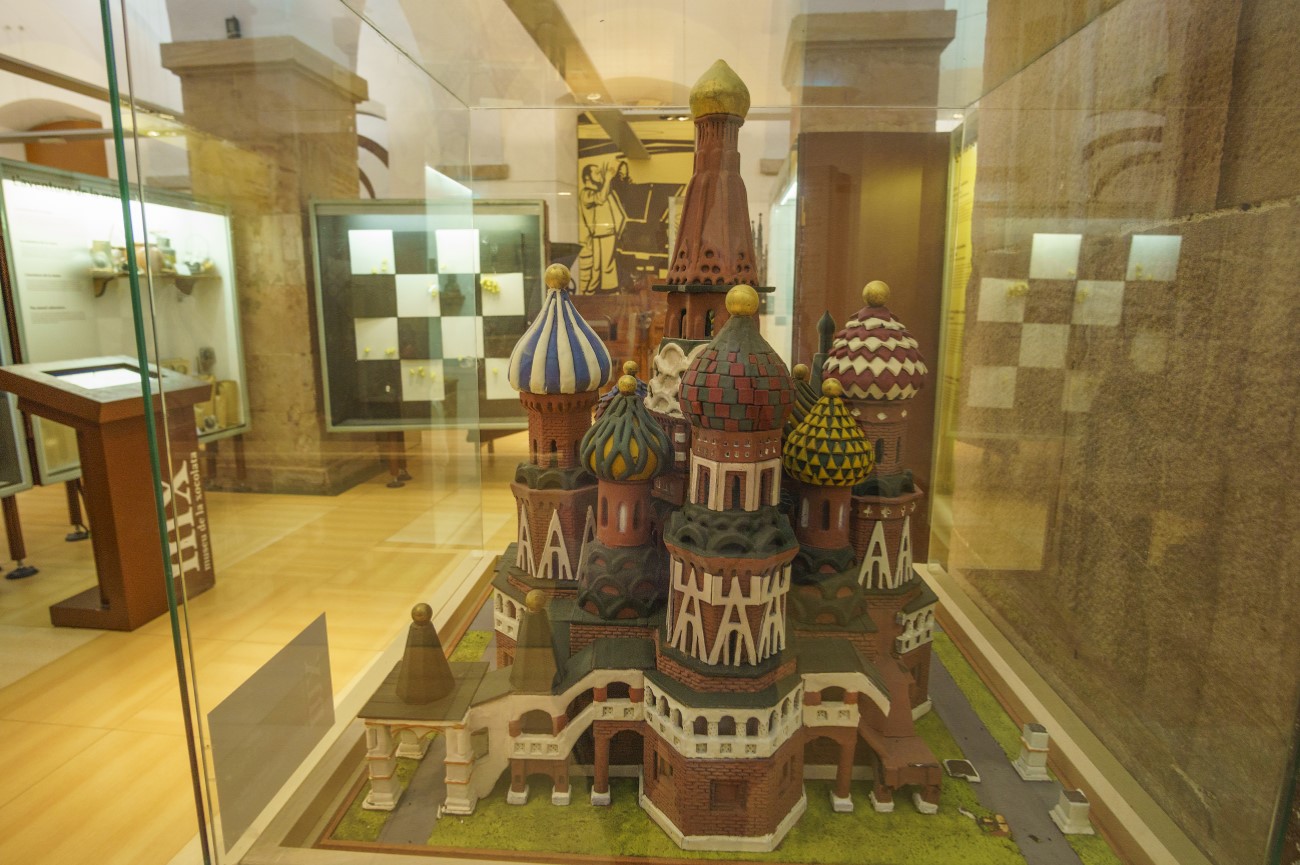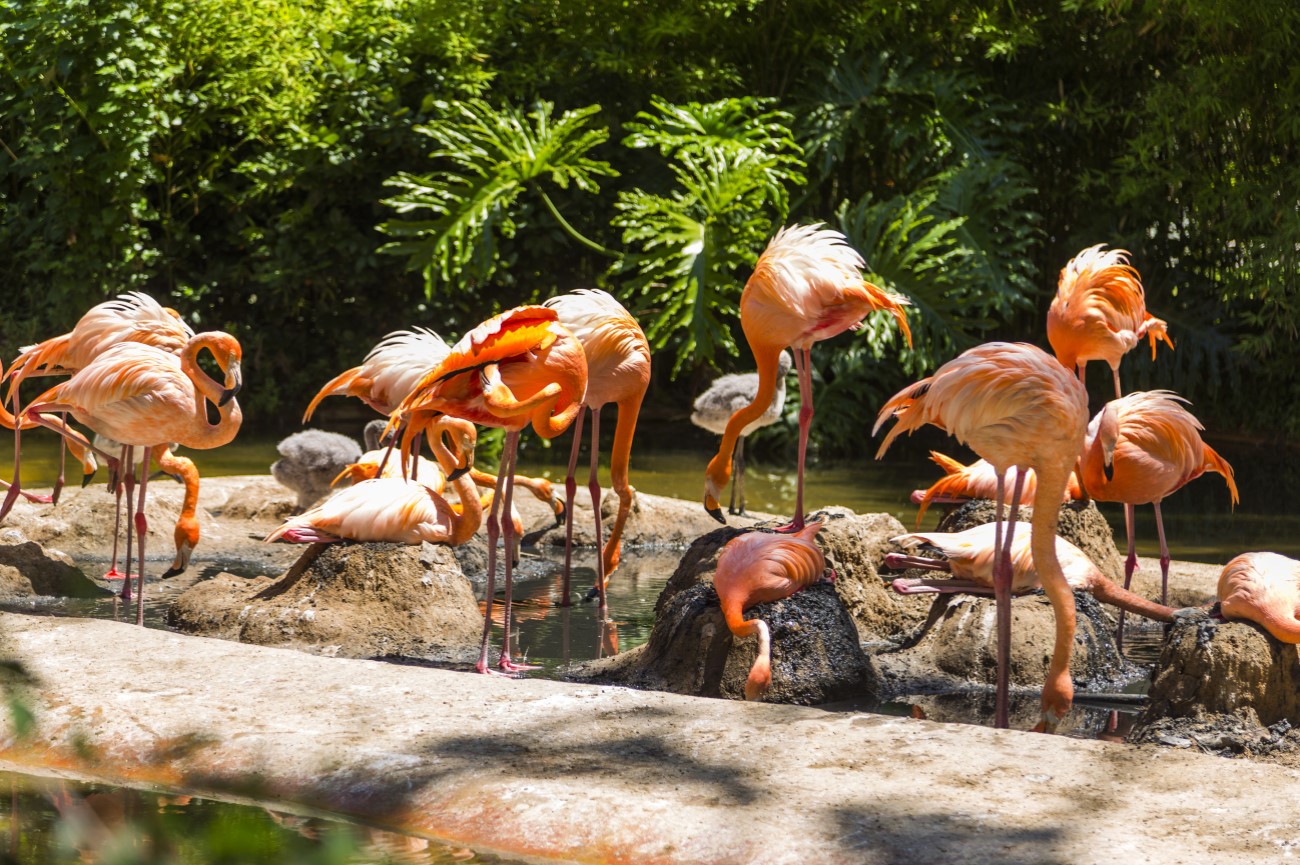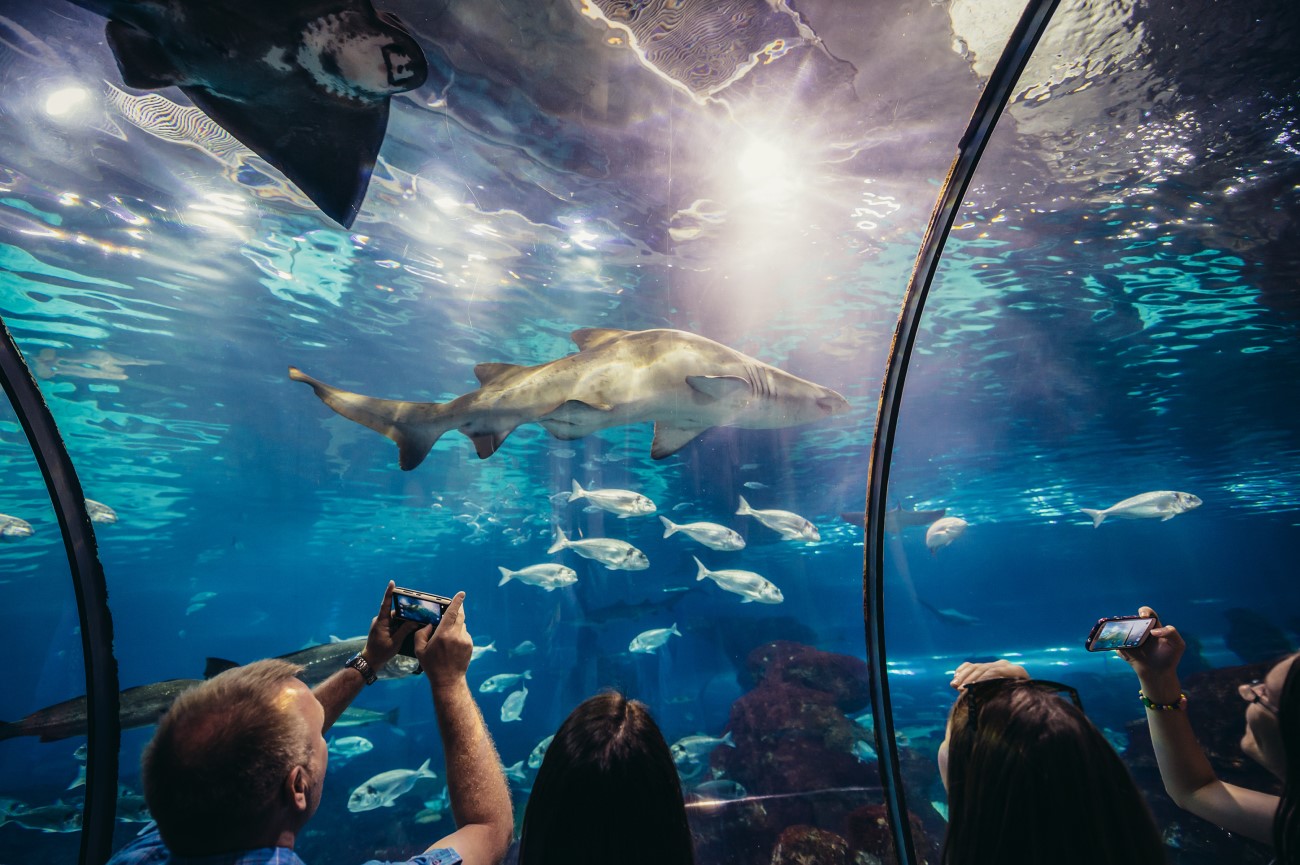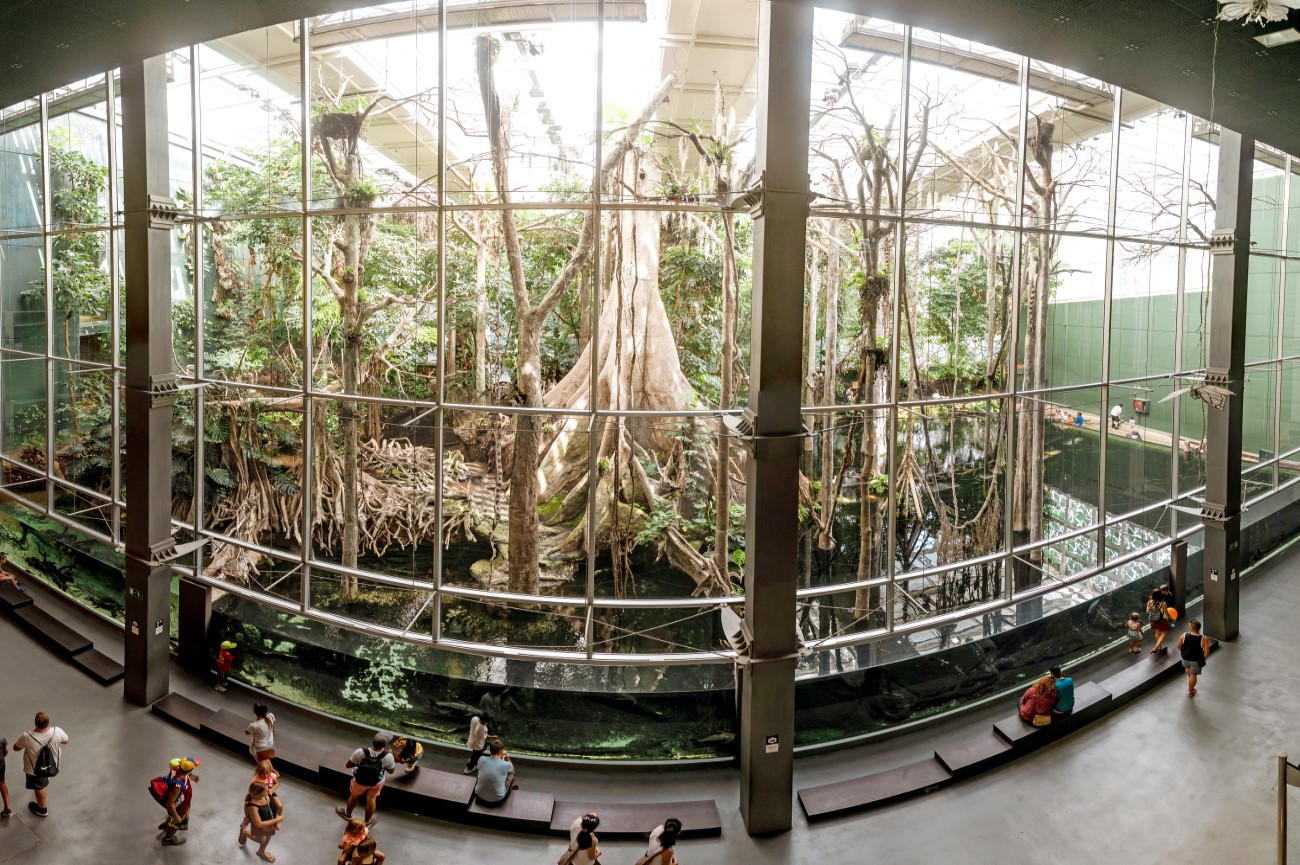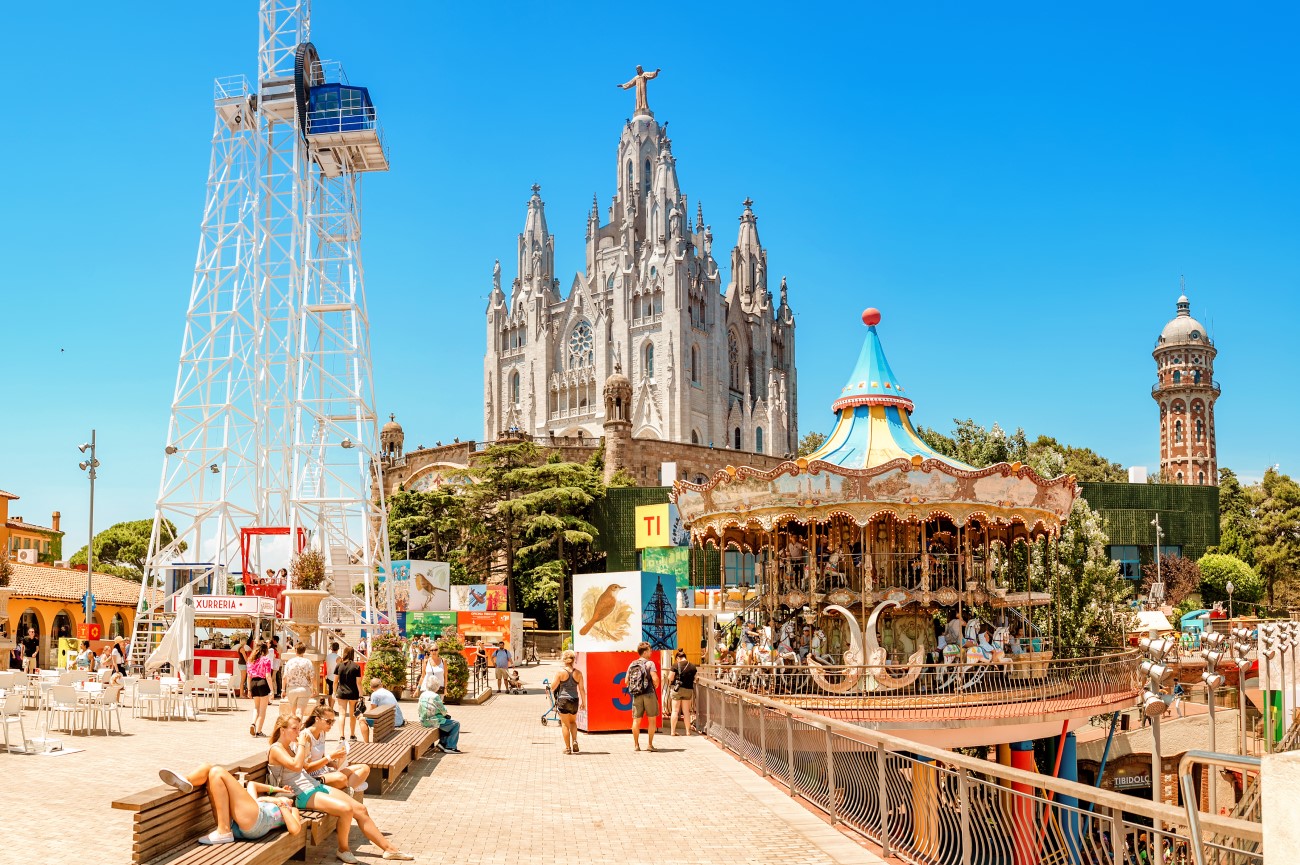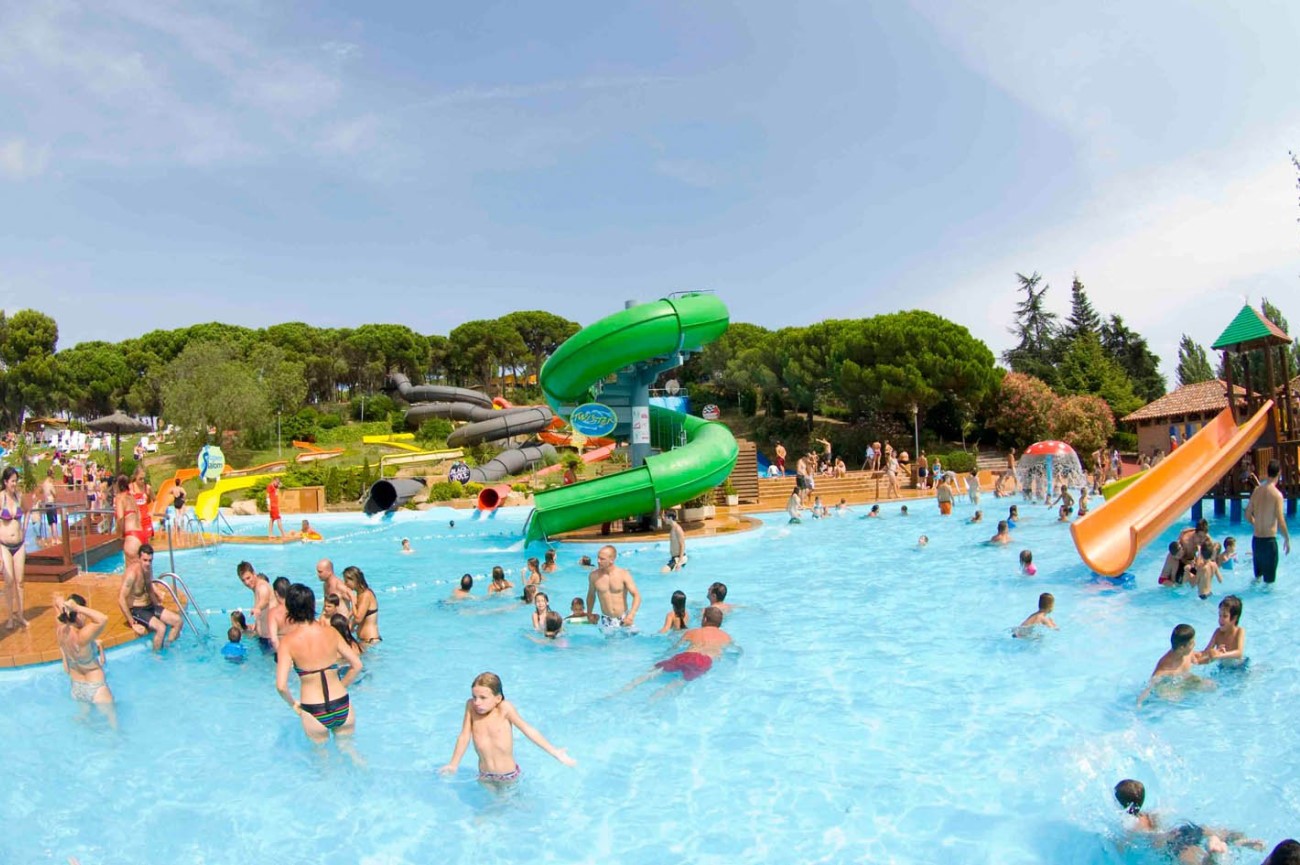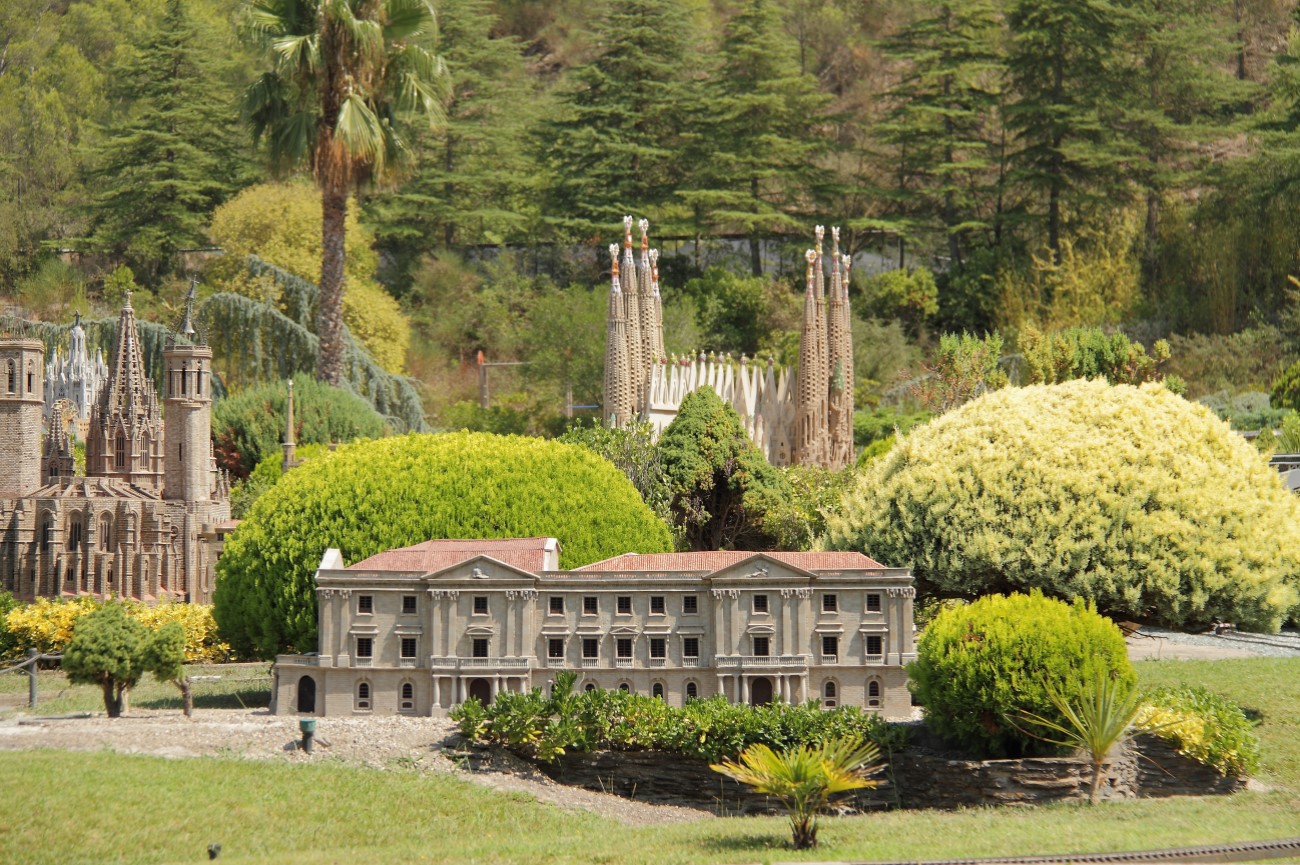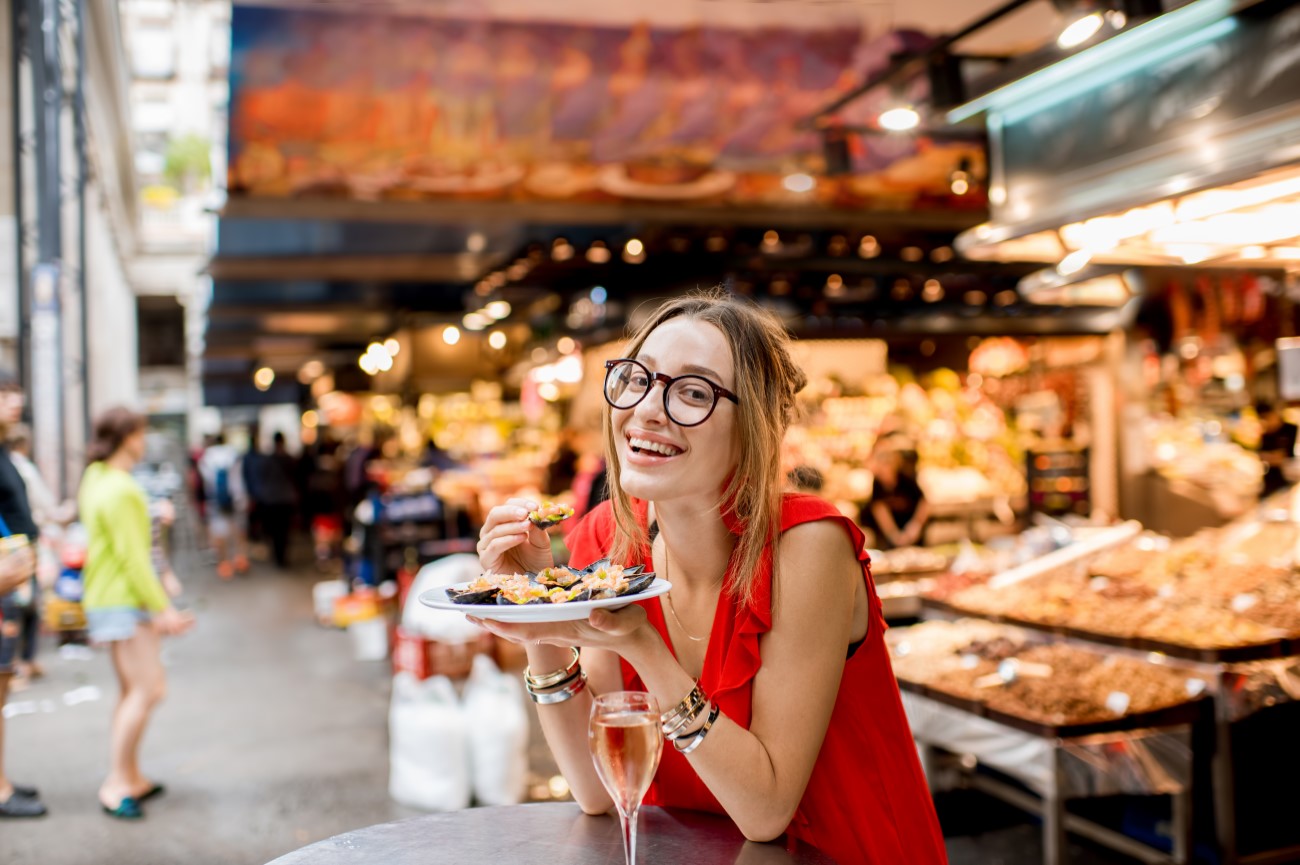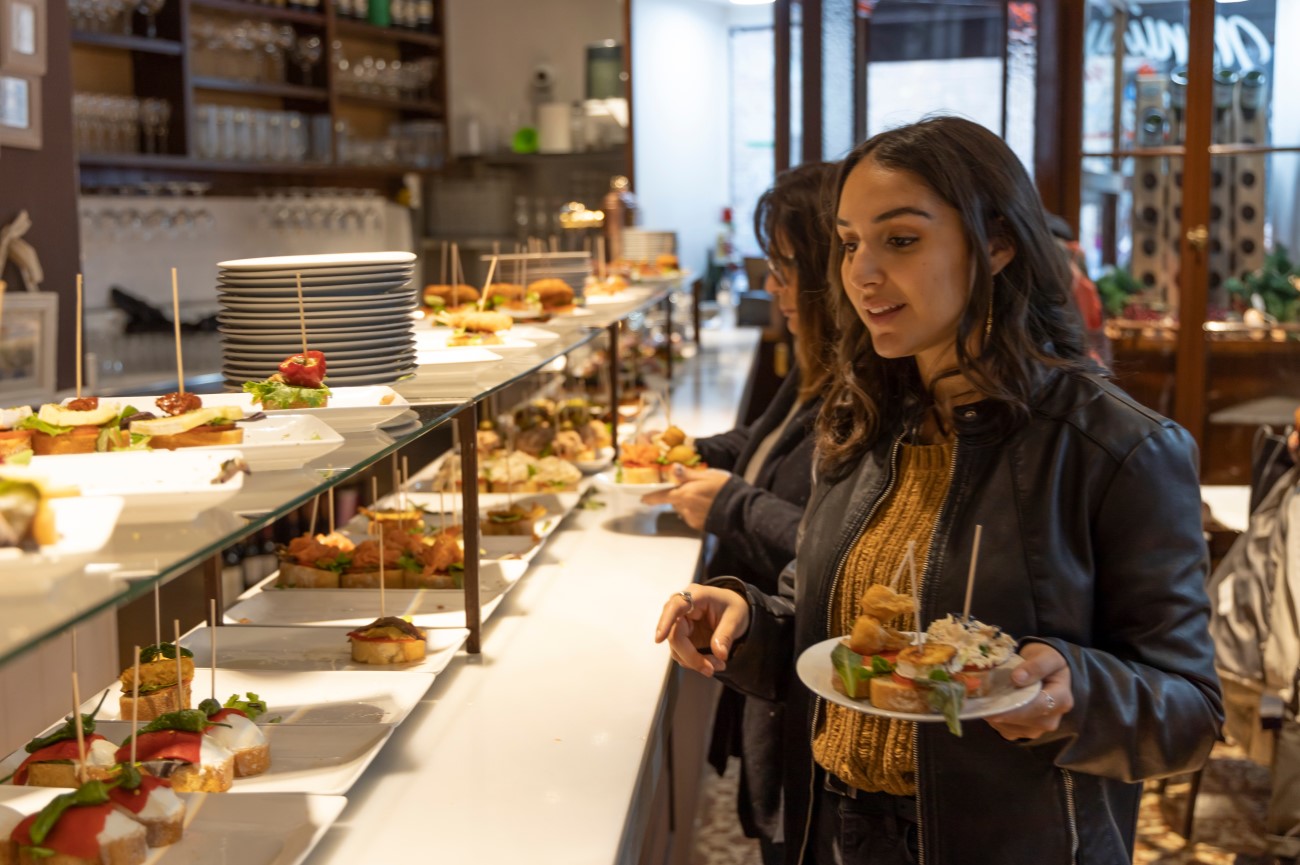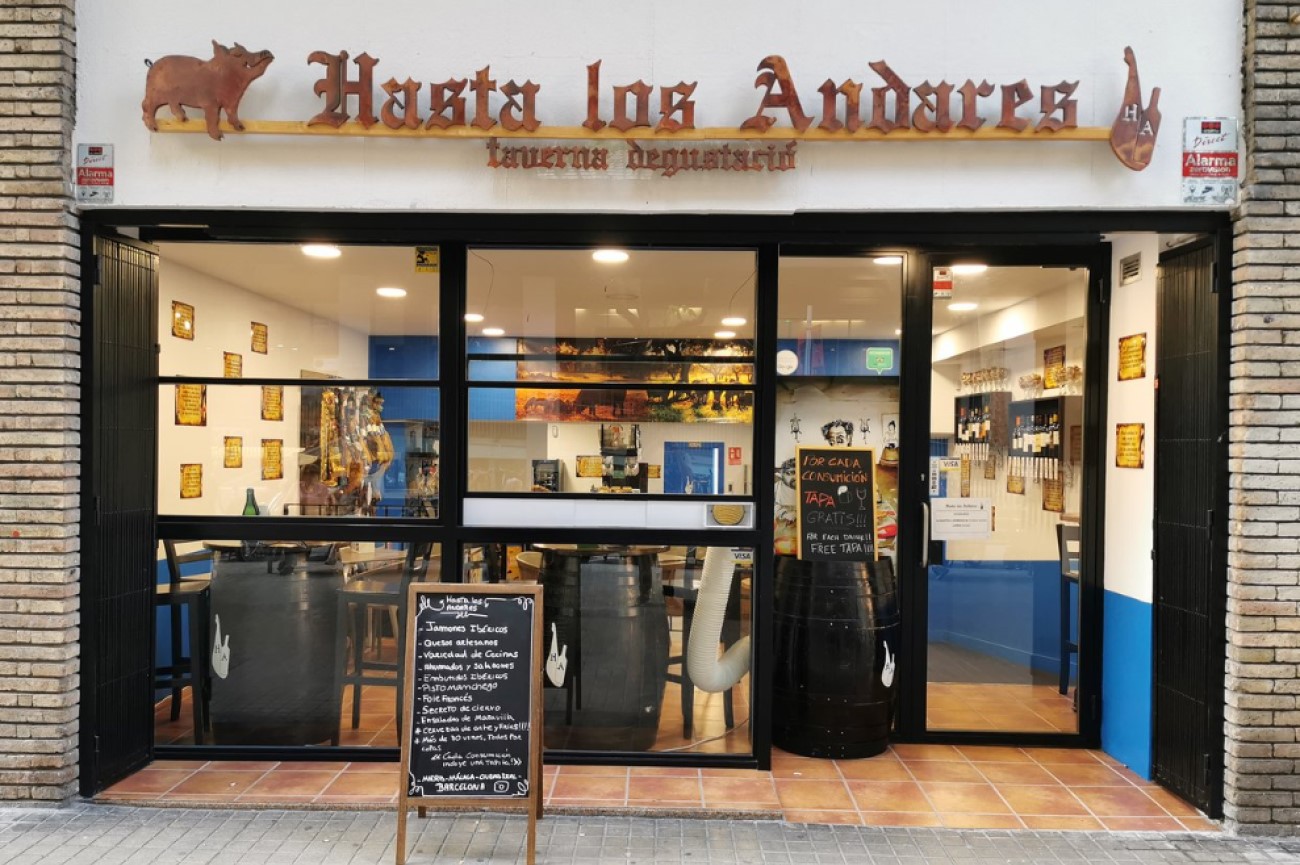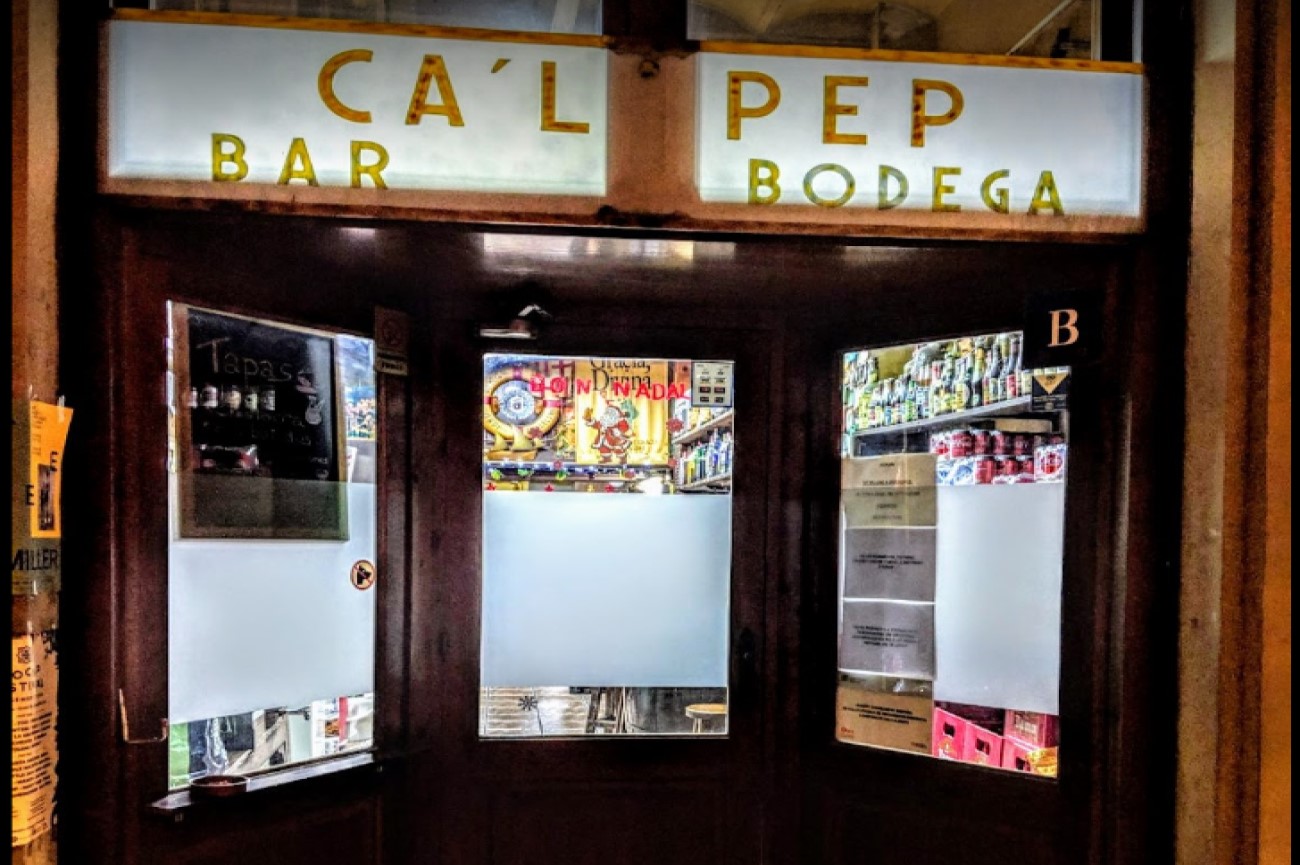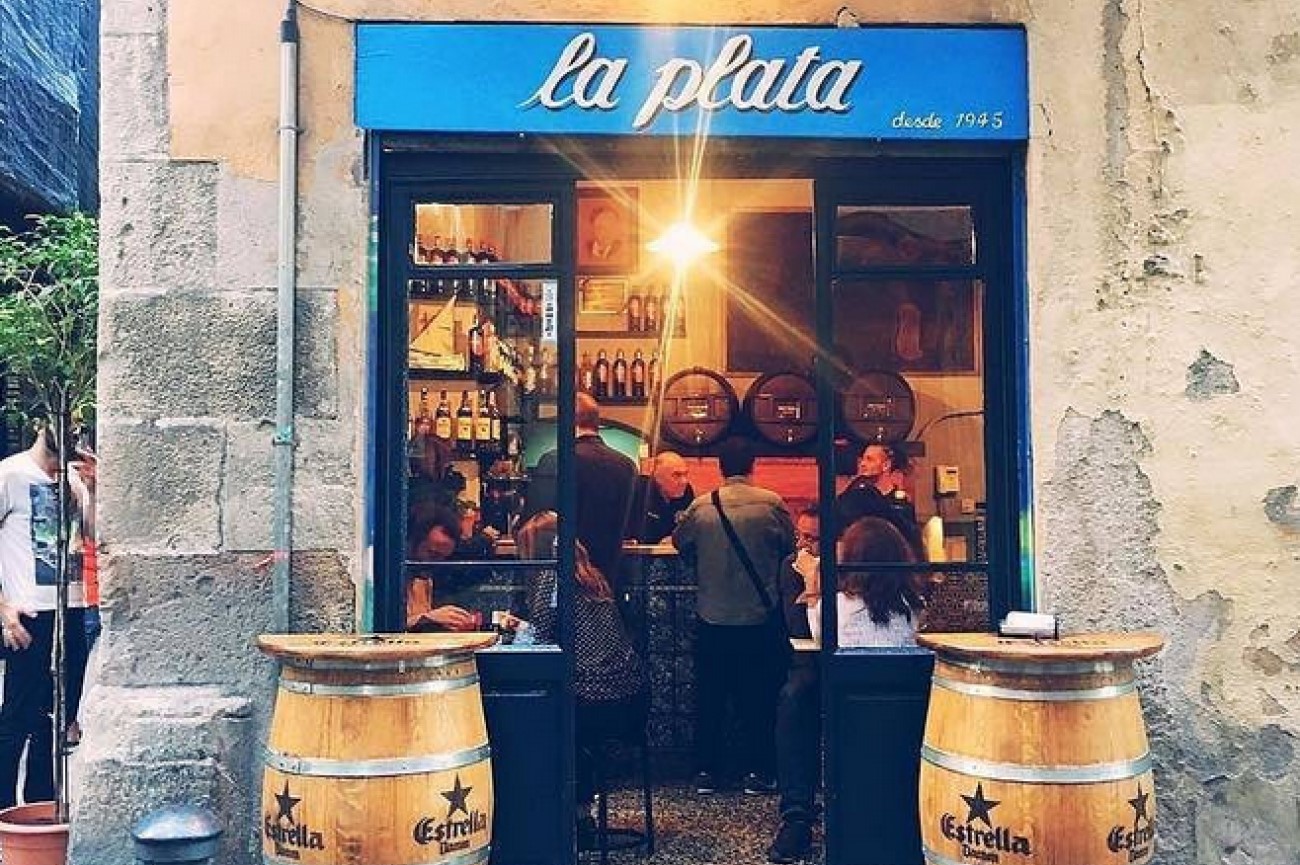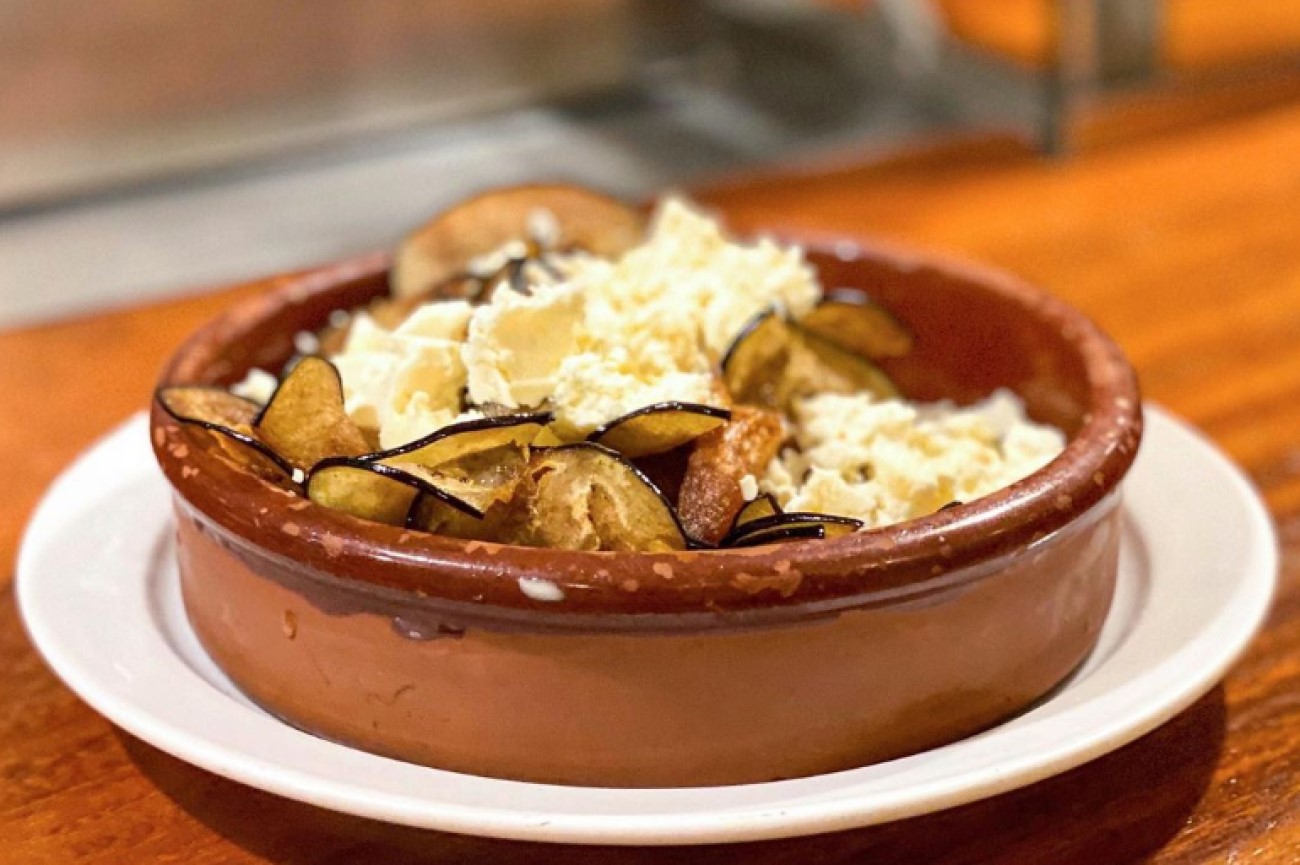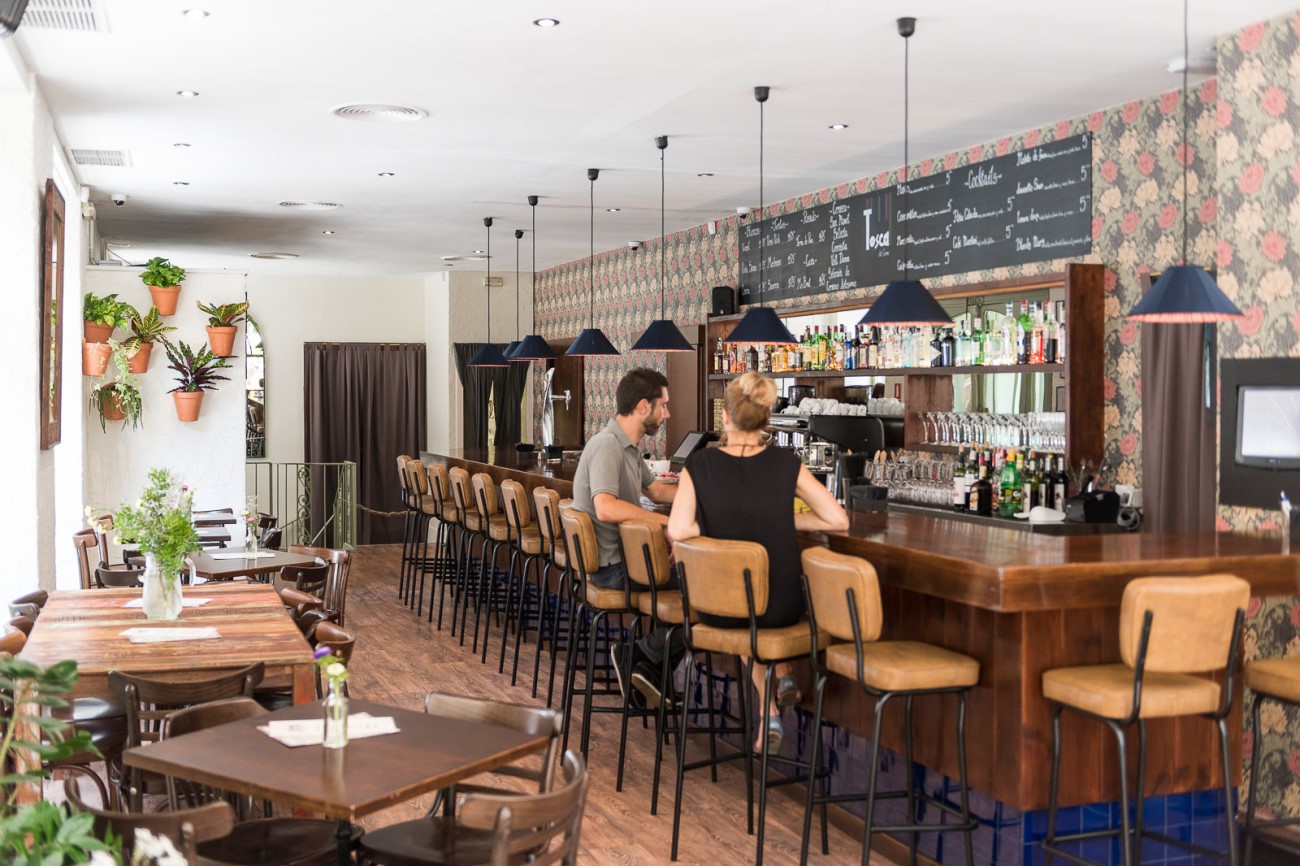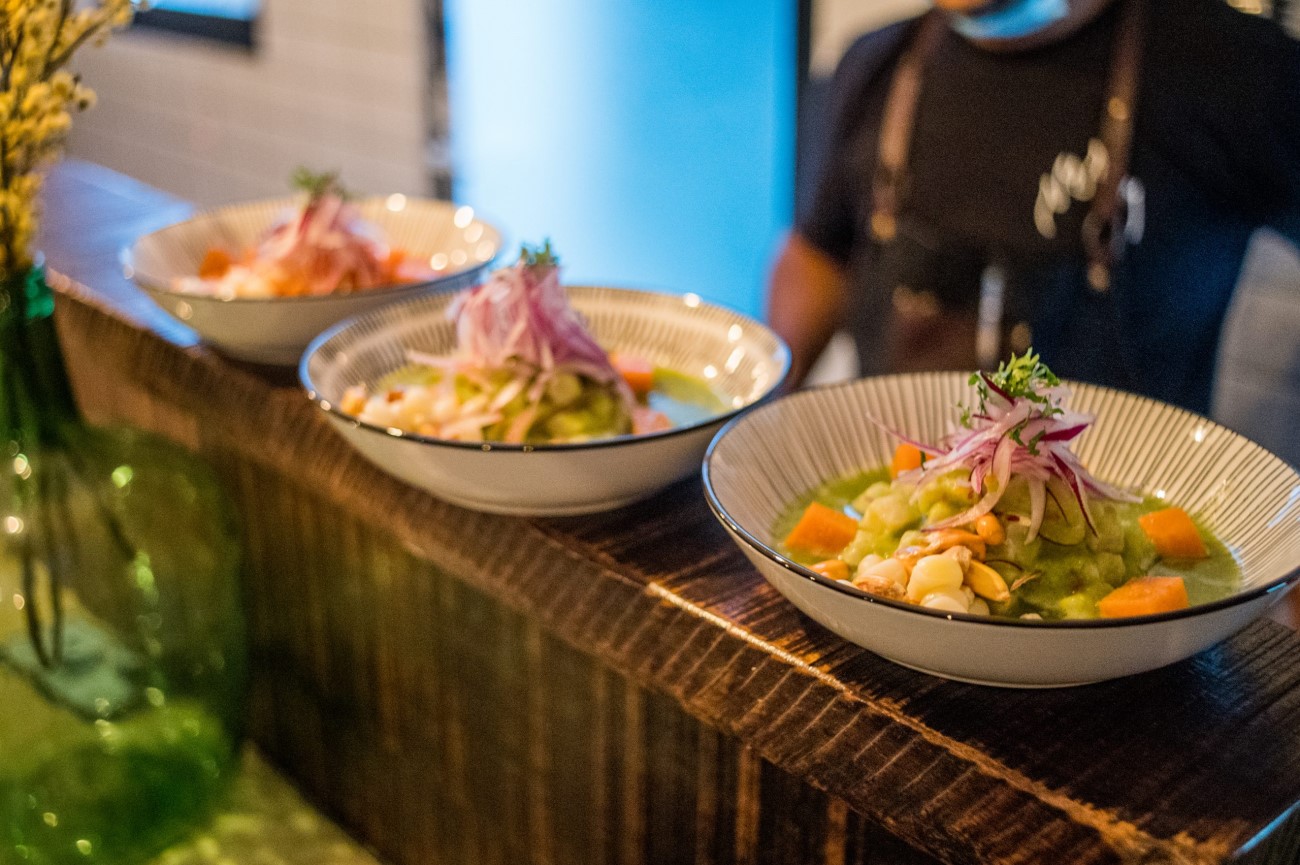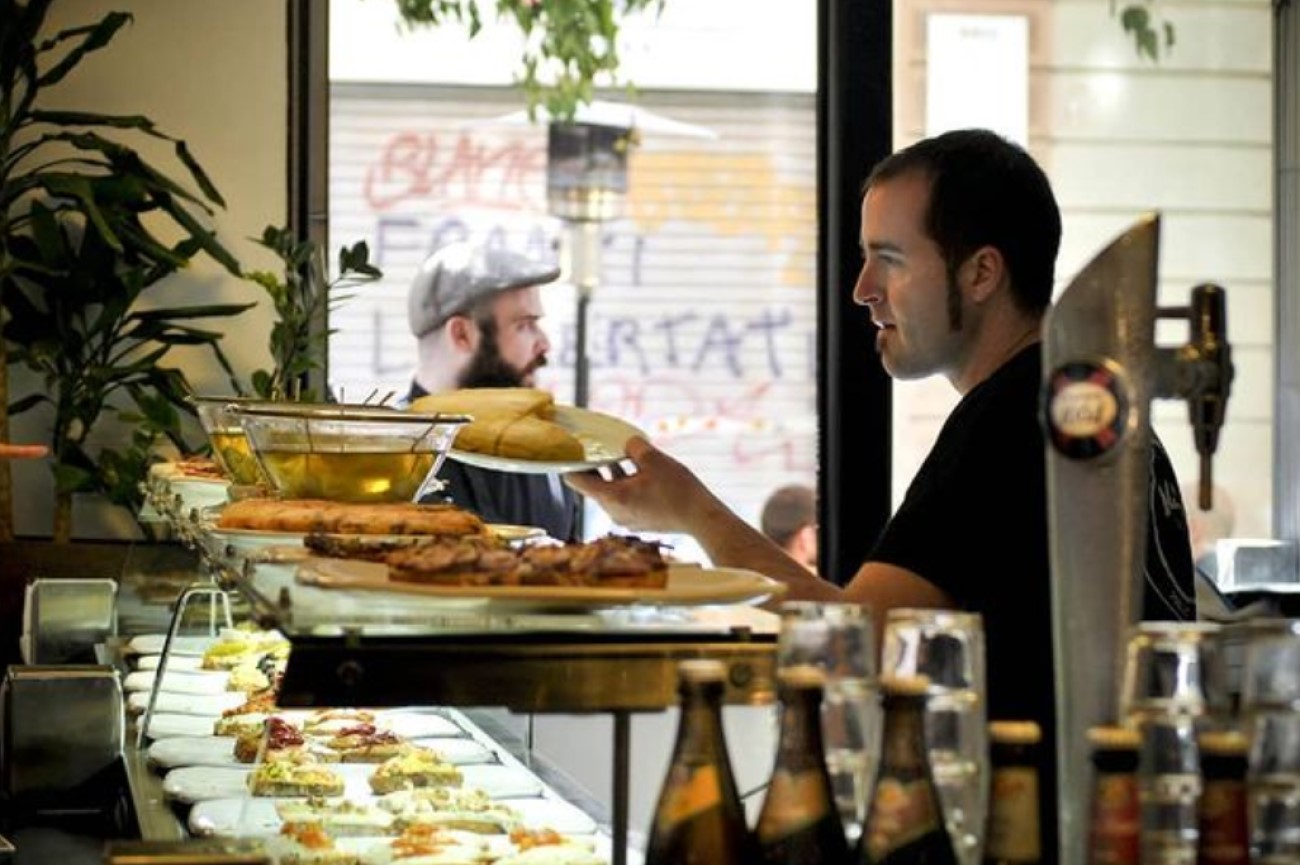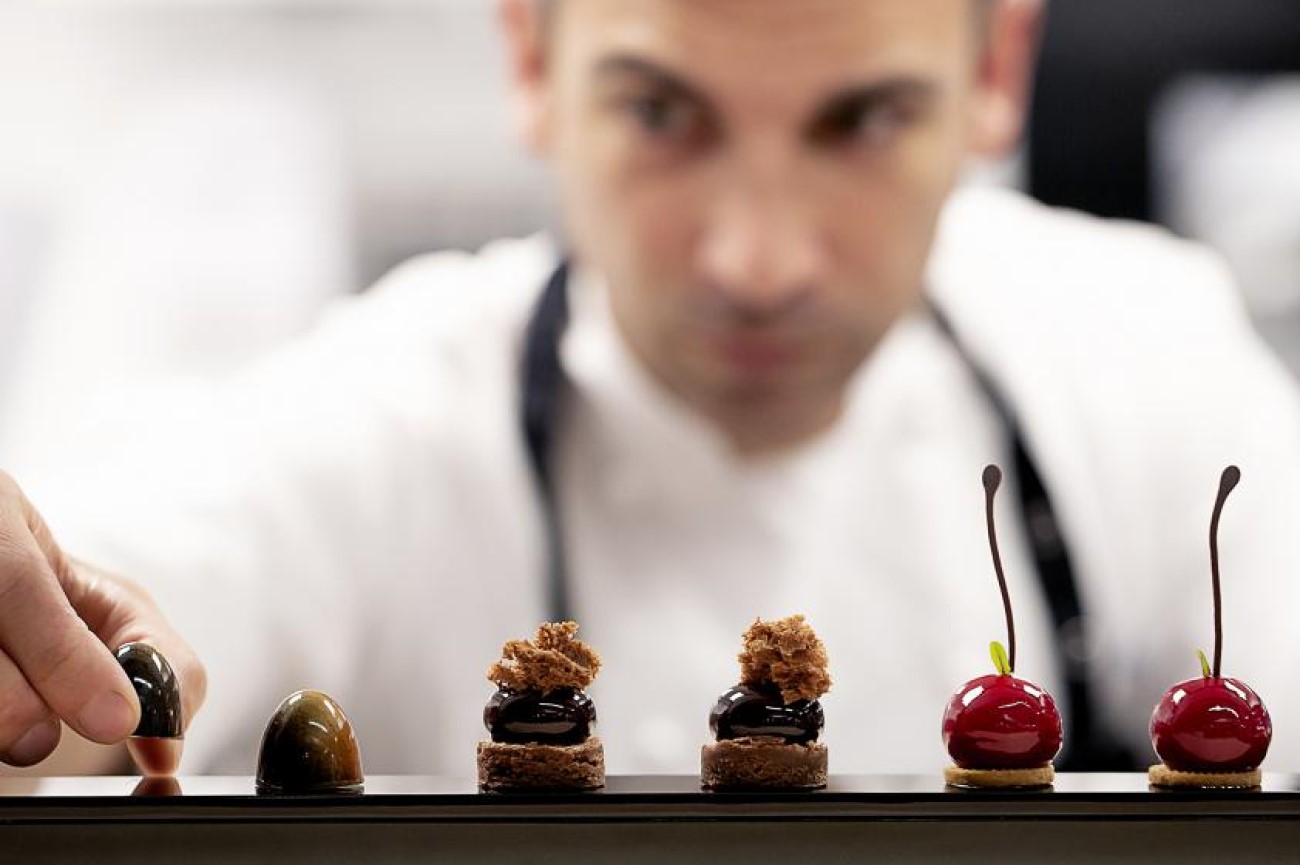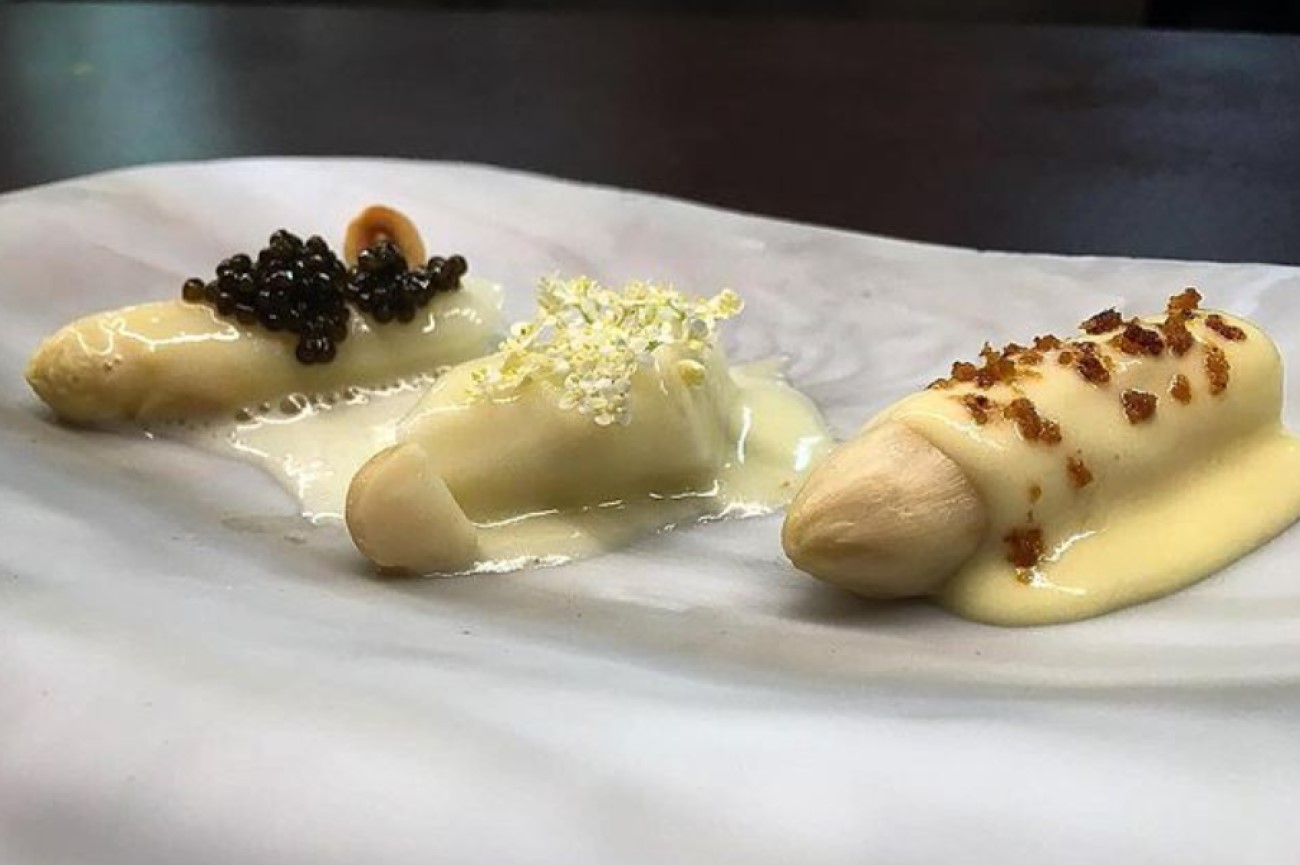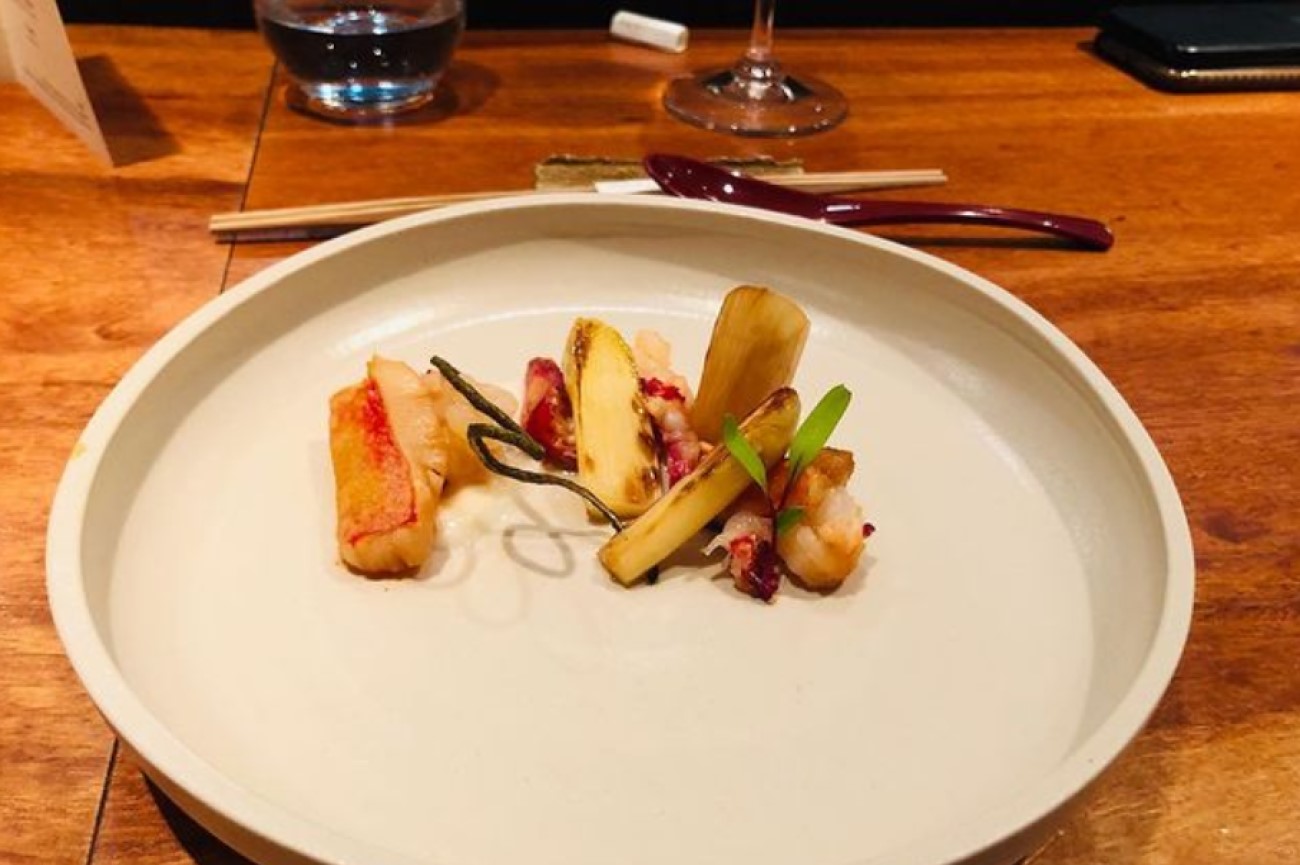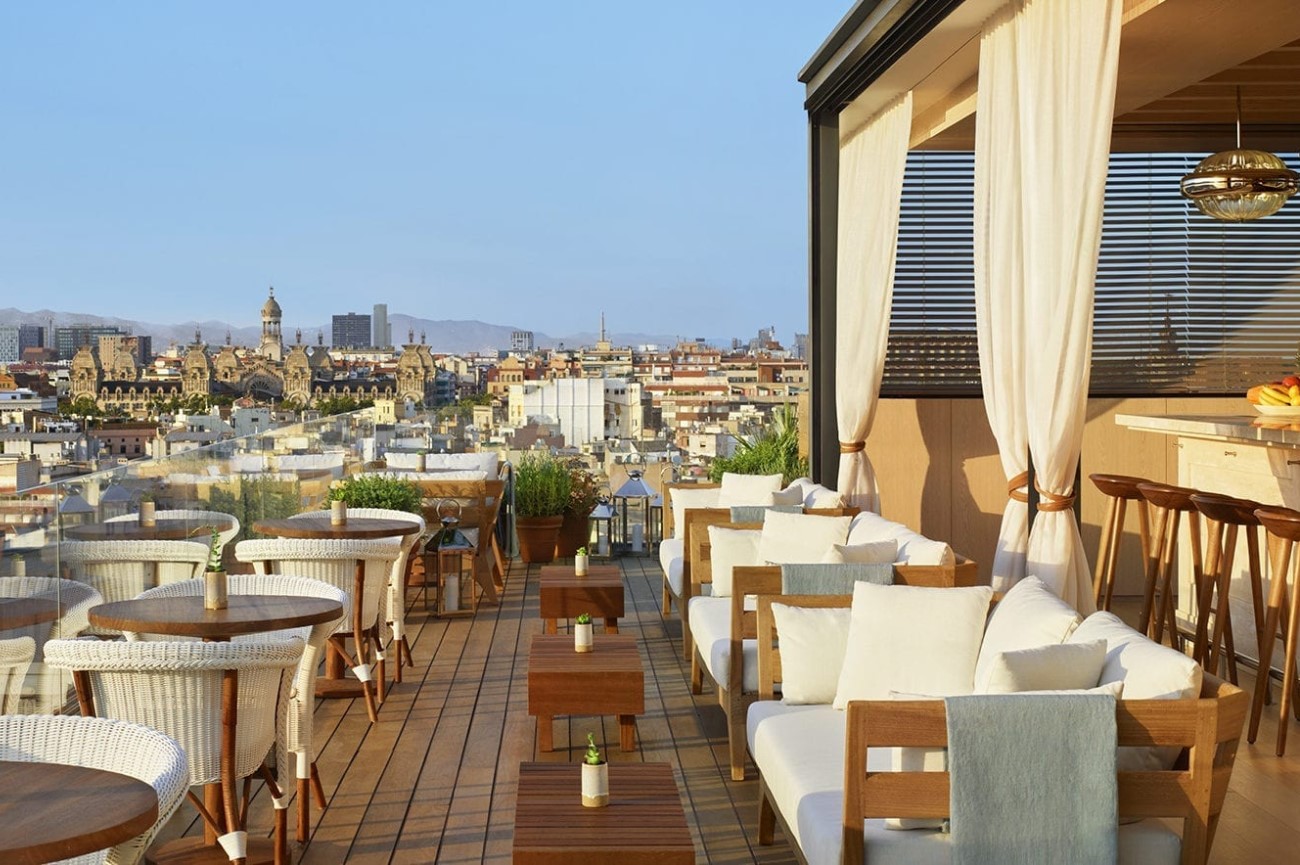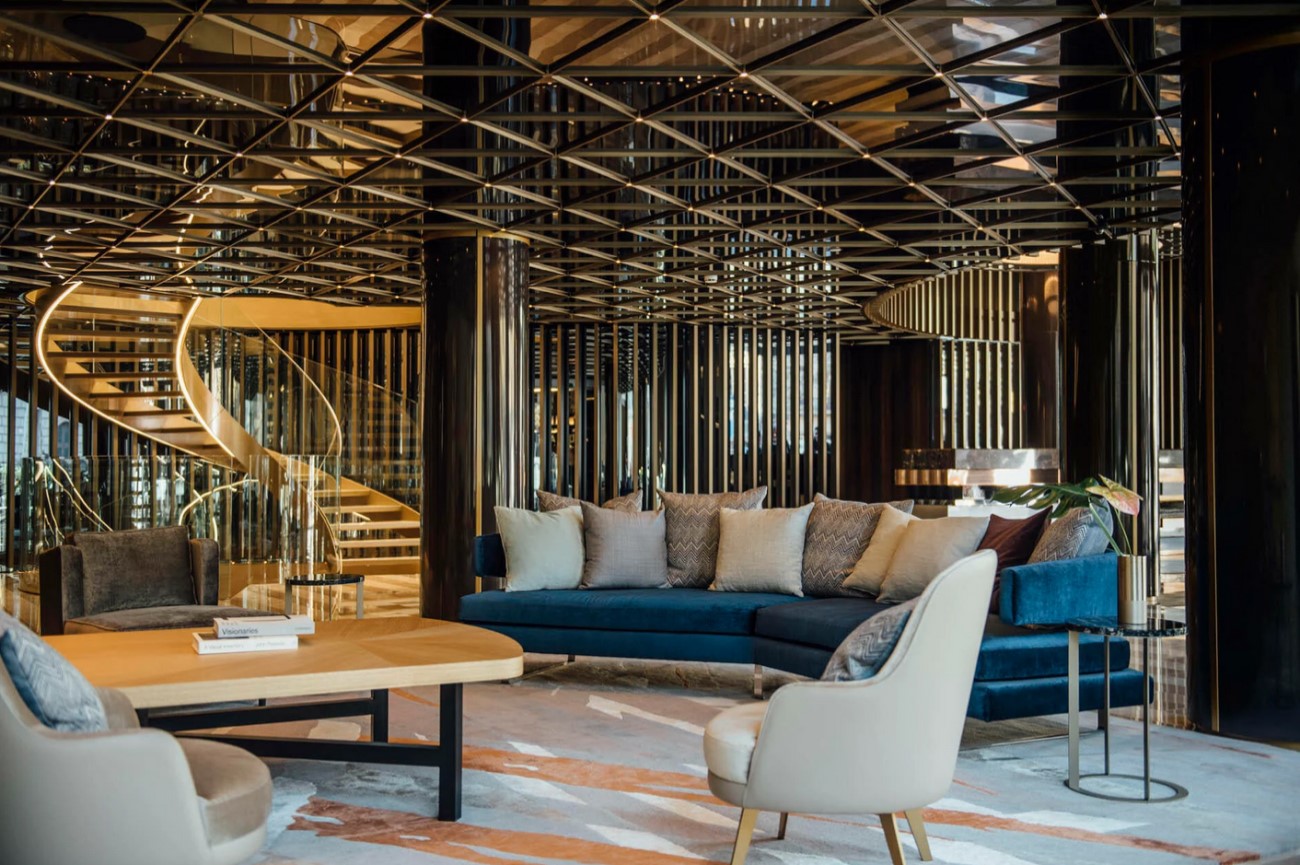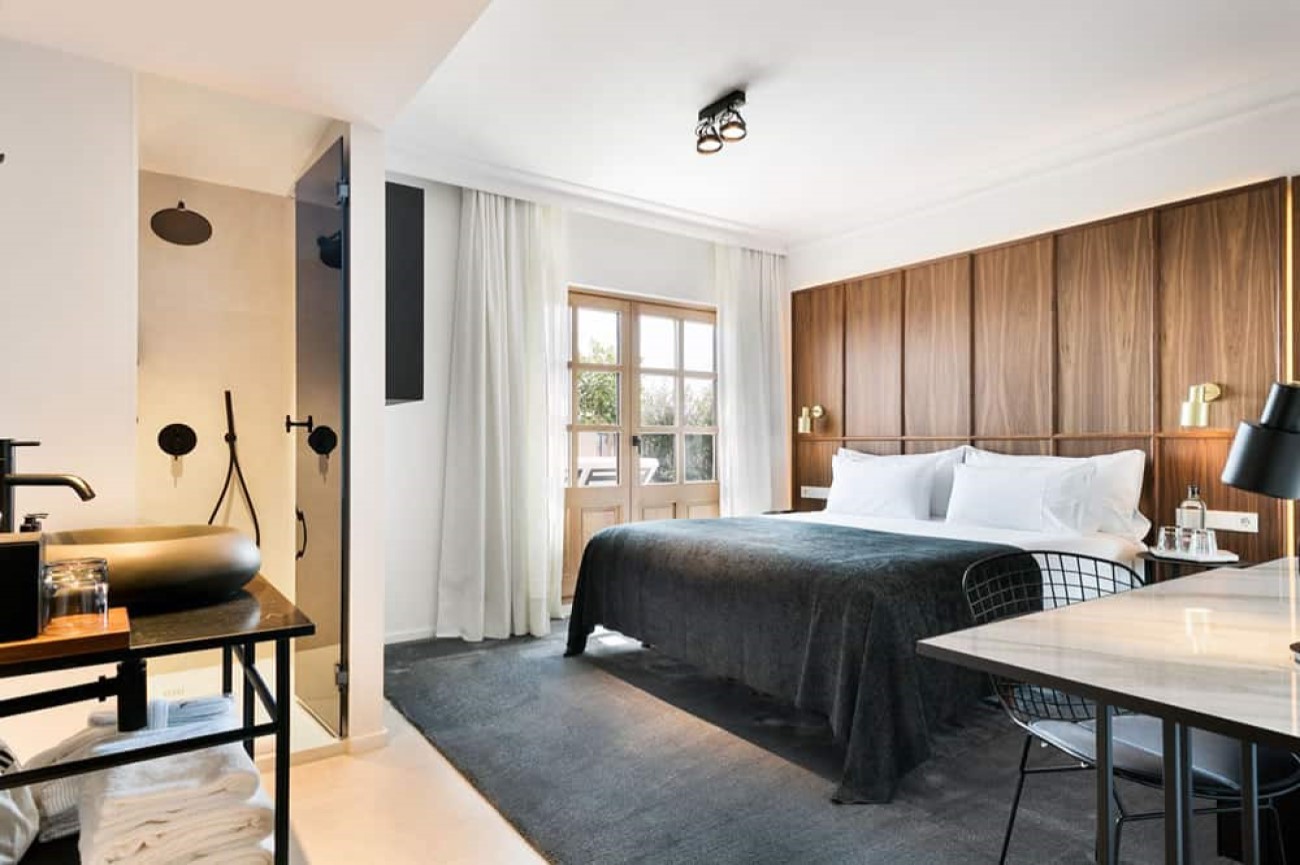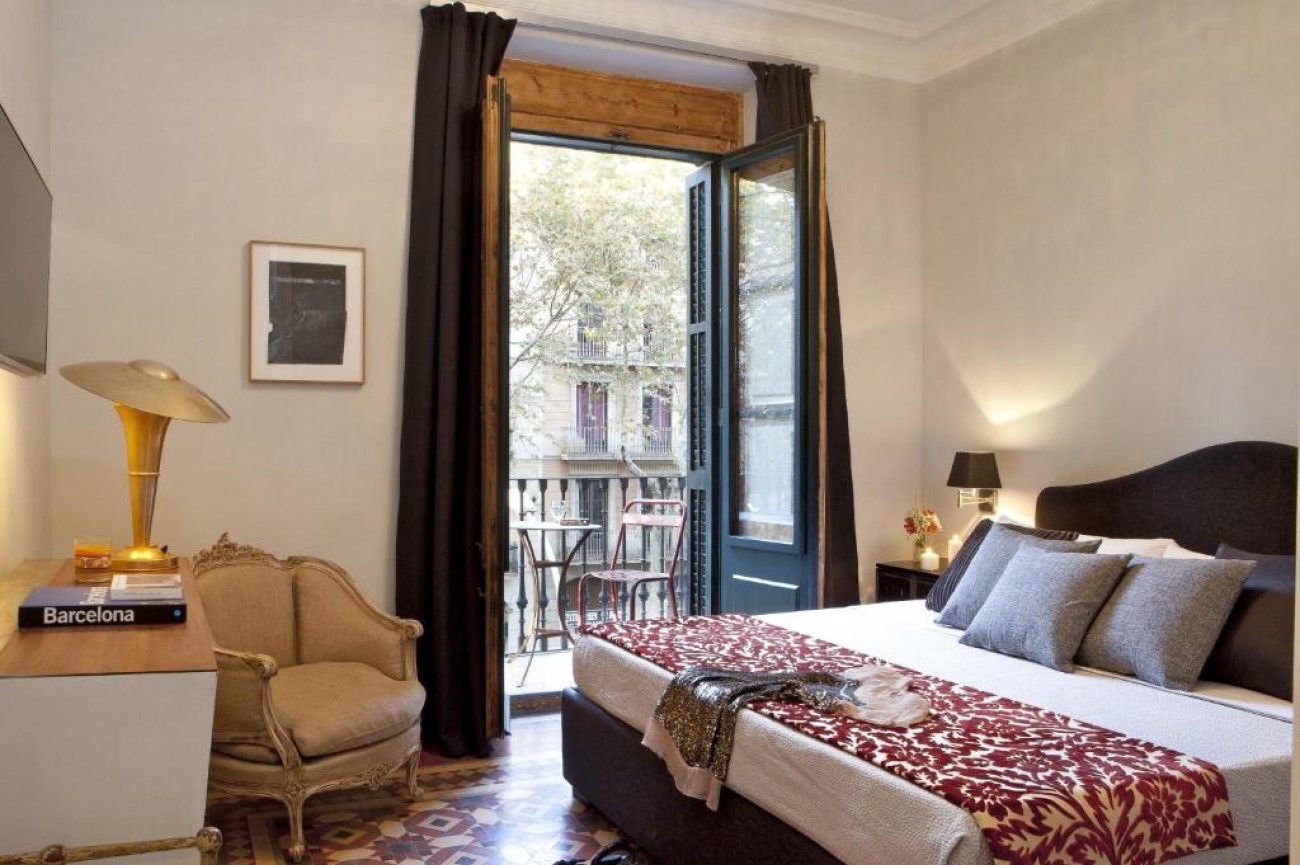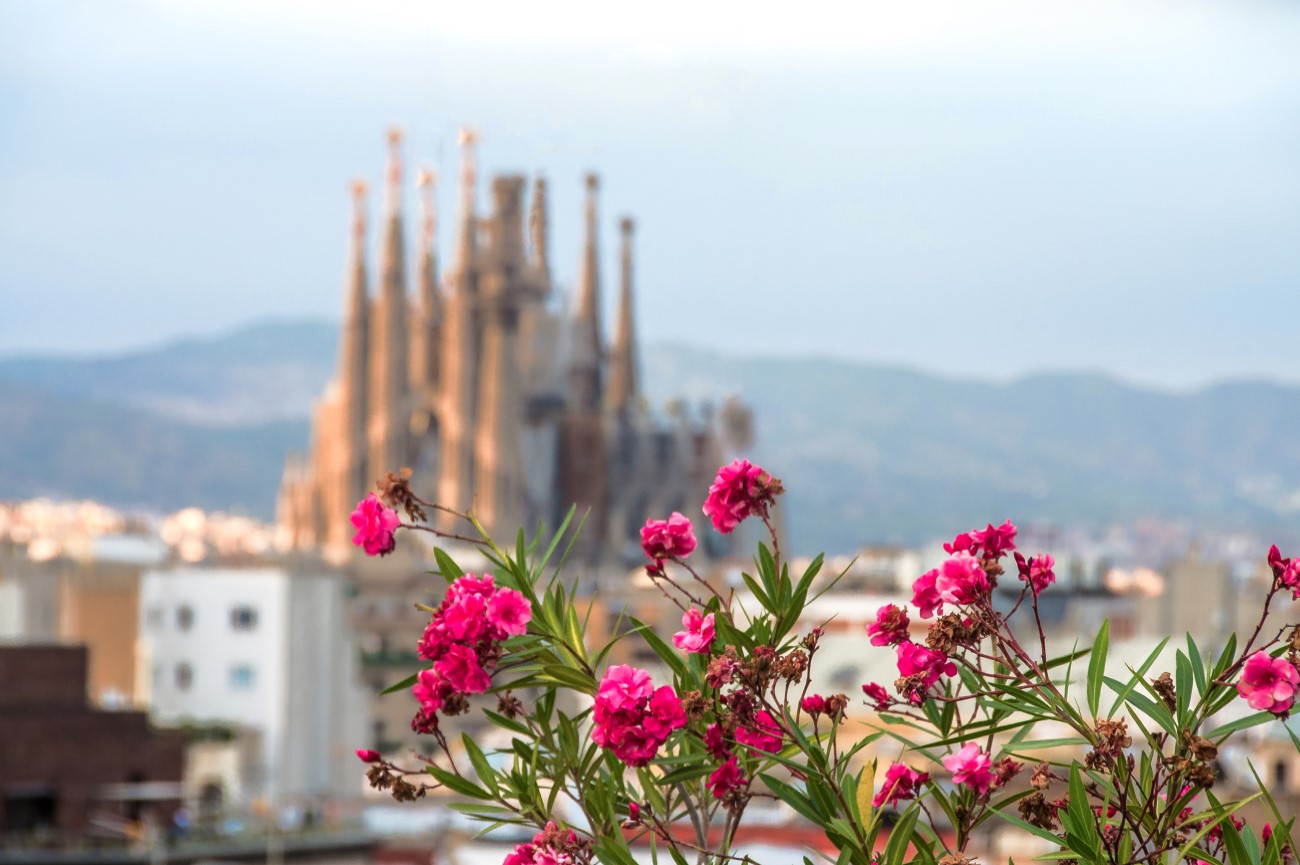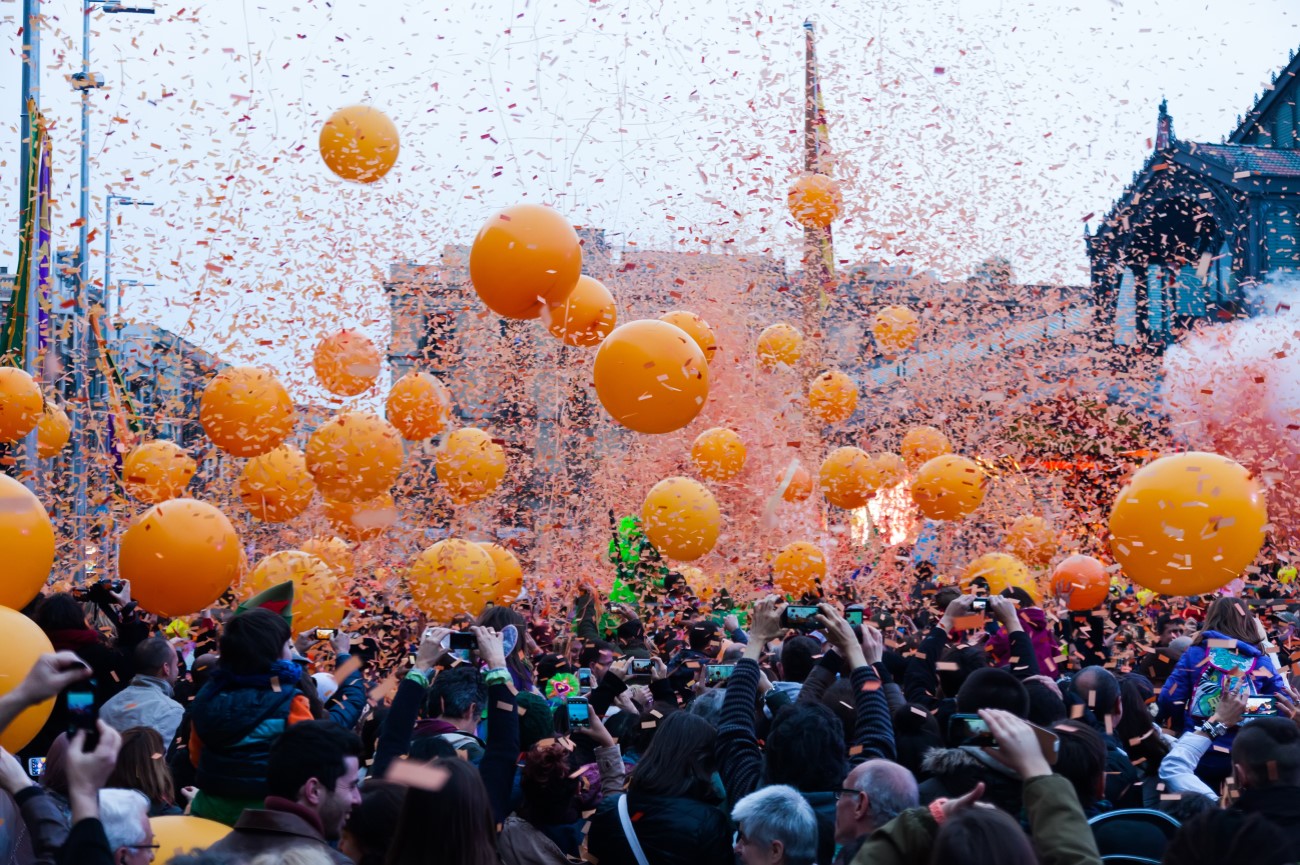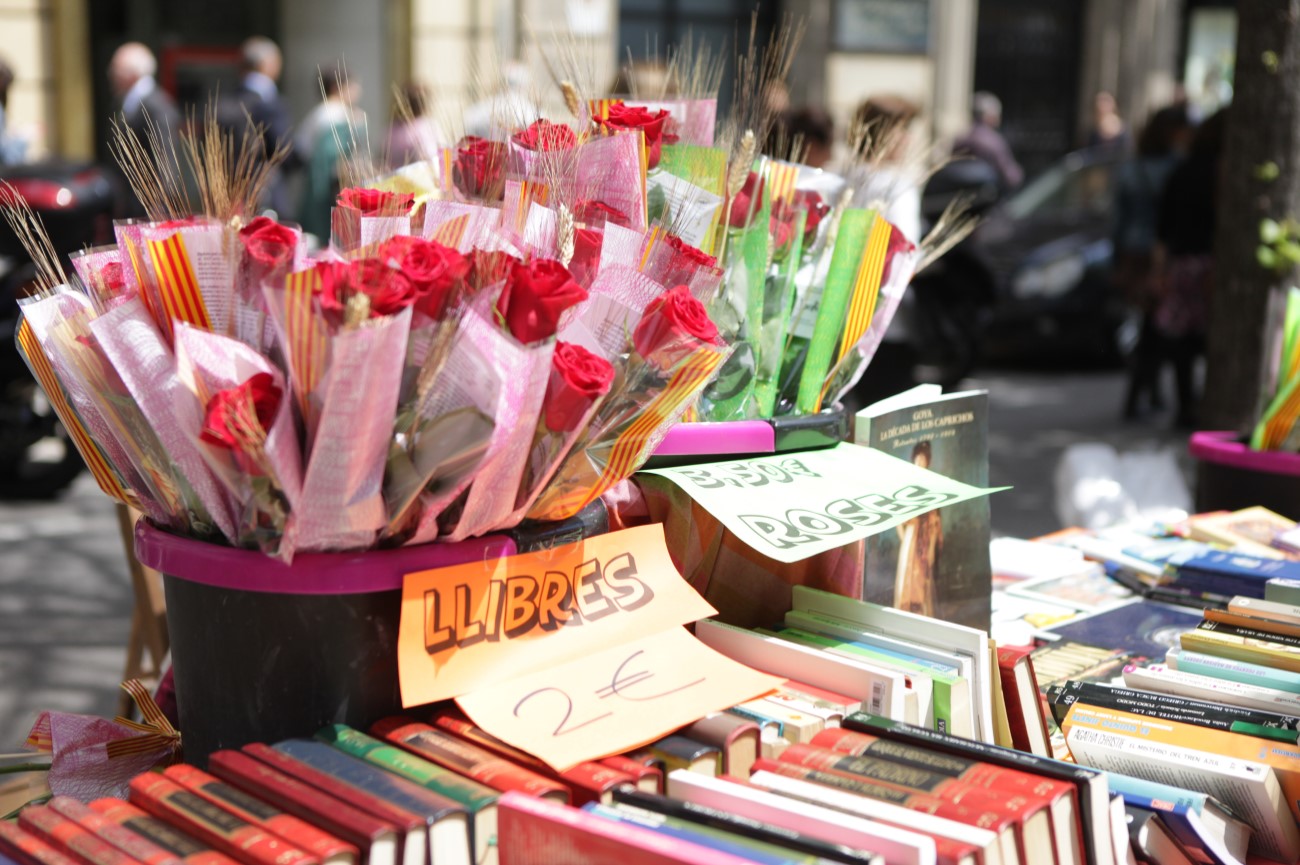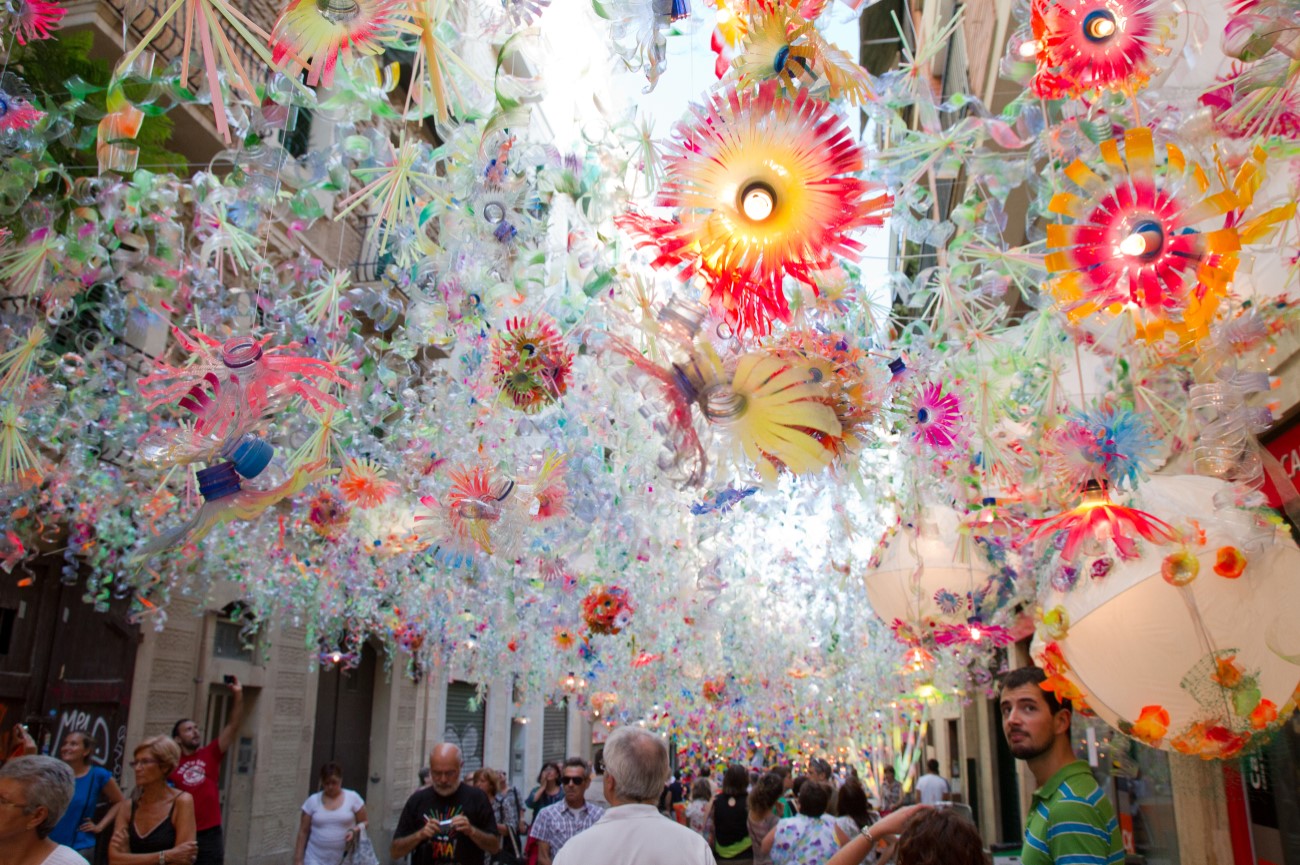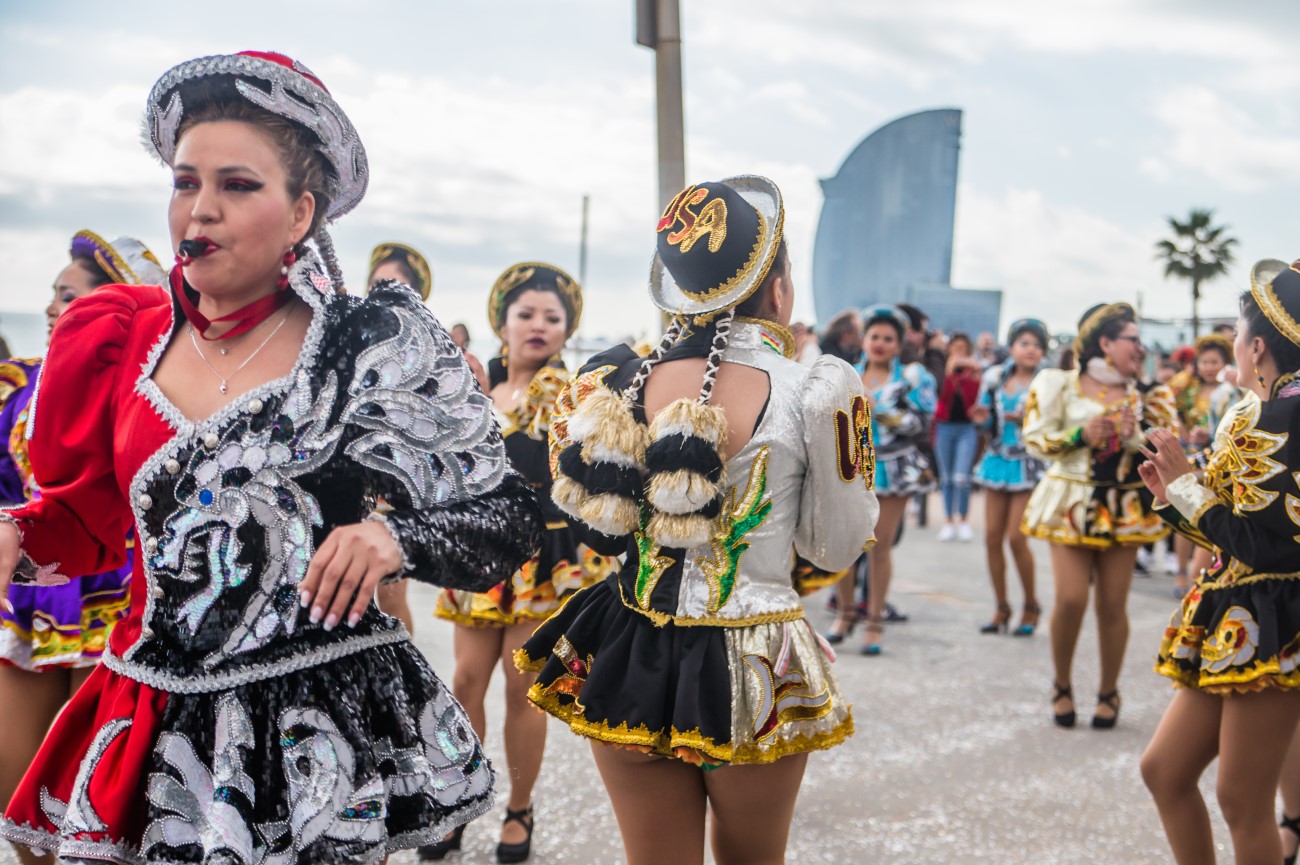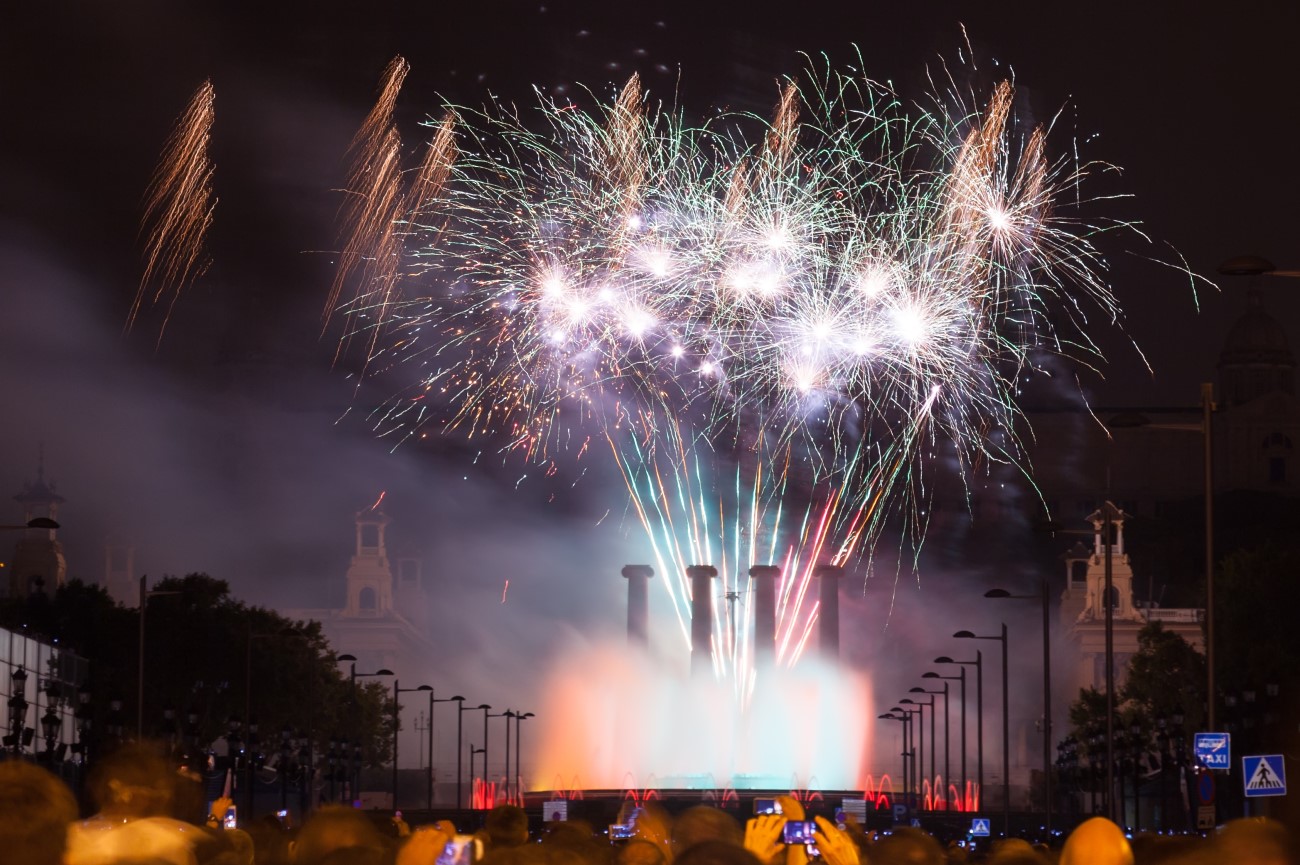Things to do in Barcelona, Spain: 4-day itinerary
With its majestic architecture, lively food markets and sandy beaches, it’s easy to see the allure of Barcelona. Many artists have found inspiration here, from Pablo Picasso to Gaudí, whose basilica still towers over the city. The Sagrada Família, along with the Parc Güell, are a reference for anyone visiting Barcelona, but there are many more places worth exploring.
A tour down the Gothic quarter will take you to the city’s cathedral and picturesque squares like Plaça Sant Felip Neri, while Passeig de Gràcia is the port of call for Gaudí’s colourful Modernist houses. Up in Montjuïc, gardens and art museums await you, along with superb views of the Catalan capital.
Our 4-day itinerary below includes the best things to do in Barcelona. It covers all the main sites, but also gives you enough time for a day trip to the nearby mountains or a swim by the Costa Brava. Grab a glass of cava or vermouth and join us in this sun-drenched city.
Day 1

Morning: El Born
With so many places to visit in Barcelona, it can be overwhelming to choose a starting point. Take it slow on your first day with a tour around the El Born district. Amid its medieval streets, you’ll find the Basilica of Santa Maria del Mar, a Gothic church with stunning stained-glass windows, as well as the Picasso Museum. Here you can admire more than 3,000 artworks, mostly from Picasso’s earliest years.
Gothic Quarter (Barri Gòtico)
From El Born, cross over to the Gothic quarter, also known as Barri Gòtic. History unfolds in this charming neighbourhood, where Roman ruins stand alongside Gothic churches. The spires of Barcelona’s cathedral can be seen from a distance, but it’s worth getting closer to admire the main façade adorned with gargoyles and intricate designs. The building dates back to the 13th century, but the façade you see today was only added around 1887. A lift takes visitors up to the rooftop, where you can enjoy panoramic views of the city.
Nearby is the Museu d'Història de Barcelona, where you can learn more about Barcelona’s Roman roots. The underground ruins feature a restored Roman tower and typical villas adorned with murals and mosaics. The museum also gives you access to the Capella de Santa Àgueda, a 14th-century chapel that once belonged to the city’s Grand Royal Palace. Inside, you can admire the timber ceiling and a 15th-century altarpiece painted by Jaume Huguet.
After covering the district’s main sites, enjoy a leisurely walk through squares like Plaça de Sant Jaume, home to the town hall, or the quiet Plaça Sant Felip Neri, where you can still see holes caused by bomb fragments during the Spanish Civil War. Take a detour to Carrer del Bisbe if you want to spot the El Pont del Bisbe, a small Gothic-style bridge built for the Barcelona International Exposition in 1929.
Day 1, Morning - Barcelona Tour Map
Afternoon: Plaça de Catalunya
Plaça de Catalunya stands between the old city and the 19th-century Eixample neighbourhood. This wide-open square serves as a central meeting point for visitors and locals alike, offering convenient access to buses and trains. Take a seat by one of the fountains and enjoy a short break before continuing your sightseeing tour.
Casa Calvet
A few steps from Plaça de Catalunya is the Casa Calvet. Antoni Gaudí built this house for the textile manufacturer Pere Màrtir Calvet around 1899, who used it as an office and private residence. The architecture is slightly more conservative than Gaudí’s other buildings. However, it does have some modernist elements, especially when you look at the wrought-iron balconies and the curved top of the façade. On the ground floor, there’s now a restaurant and a chocolate shop.
Passeig de Gràcia
Modernist buildings are everywhere in Barcelona, but you’ll find most of them around Passeig de Gràcia. Many people come here to see Gaudí’s infamous houses, such as Casa Batlló and Casa Milà (La Pedrera), but there are more buildings worth capturing designed by other Modernist architects, like Casa Amatller and Casa Lleó Morera. These four houses showcase different artists’ styles, clashing with one another and its surroundings, which is why this block has been nicknamed the Illa de la Discòrdia (Block of Discord).
You can wander through most of these places on your own or book a guided tour to learn more about the history of each building. It’s worth buying tickets in advance online if you want to avoid the queues outside. Between June and November, Casa Batló hosts live music sessions on their rooftop, making it the perfect place to end the night.
Casa de les Punxes
A small detour from Passeig de Gràcia will take you to the Casa Terradas. Modernist architect Josep Puig i Cadafalch is behind this striking terracotta building, also known as Casa de les Punxes, for its spiky roof. The tall turrets resemble a medieval castle, while the façade features typical Gothic elements, like ornate
balconies. Make sure to look up to see the colourful ceramic panels featuring patriotic symbols of Catalonia.
Casa Vicens
You can end your visit to the Gràcia neighbourhood at Casa Vicens, a World Heritage site. Completed in 1885, this is Gaudí’s architectural debut which helped kickstart Catalonia’s Modernist movement. Originally commissioned as a summer home for stockbroker Manel Vicens i Montaner, it has undergone several changes through the years. The current structure features three spaces: the original Gaudí construction, an expansion from 1925 by the architect Joan Baptista Serra de Martínez, and the Mediterranean garden. Outside, the building stands out with its mix of brick and tiles, but it's worth exploring the interior to marvel at all the ornate rooms designed by Gaudí.
Day 1, Afternoon - Barcelona Tour Map
Day 2

Morning: La Sagrada Família
Wake up early and head straight to La Sagrada Família, one of the city’s most iconic sites. What started as a modest Roman Catholic church soon turned into a prominent model of Catalan Modernism. Construction began around 1882 supervised by the architect Francisco de Paula del Villar, but due to a few disagreements, Antoni Gaudí took over the project. With him on board, the building took on a new life, with a design that explored new architectural styles, incorporating organic symbols and using stained glass and other elements to showcase biblical stories.
After completing Casa Milà in 1912, Gaudí put all his efforts into constructing the Sagrada Família, working on it until he died in 1926. Following Gaudí’s death, Domènec Sugrañes i Gras stepped in as the chief architect. The basilica was heavily damaged during the Spanish Civil War, and the work was put on hold until 1954. It's still under construction today, and even though it’s unfinished, it has become one of the most visited monuments in Europe.
There are four main sections at the Sagrada Família: the basilica, the towers, the school building and the Gaudí museum, all of which need separate tickets. The museum features a replica of the architect’s workshop, while the school building has a similar design to Casa Milà. It’s worth going up to the towers to enjoy the views of the basilica’s spires and the city below. Make sure to book tickets in advance to avoid standing in line.
Arc de Triomf
After wandering through the Sagrada Família, take a walk down to the Arc de Triomf. Designed by Josep Vilaseca, this grand arch was created as an entrance for the 1888 Barcelona Universal Exposition. It stands out with its Mudéjar-style brickwork and reliefs created by Josep Llimona.
Parc de la Ciutadella
Our tour continues at the Parc de la Ciutadella. This large green oasis gets its name from the old city fortress (La Ciutadella) that used to stand here. Like the Arc de Triomf, the area was reimagined as a park by Josep Fontserè for the Universal Exposition. Fontserè, along with an aspiring young Gaudí, created the iconic waterfall that you’ll see today near the Passeig de Pujades entrance. Enjoy a stroll through the tree-line promenades or rent a boat and paddle along the lake. The park is also home to the Parlament de Catalunya, and you can visit the building if you book a guided tour in advance.
Mercat de Santa Caterina
Step inside the Mercat de Santa Caterina and marvel at the colourful fruit and vegetable stalls. It’s a great place to sample traditional Catalan dishes straight from the source. Beyond the fresh produce, there are several cafés and restaurants where you can sit down for a quick meal. The building sticks out with its wavy mosaic-covered roof designed by the architects Enric Miralles and Benedetta Tagliabue. Make sure to check the back of the market, where you’ll find the ruins of an old monastery.
Palau de la Música Catalana
Just a few steps from the market, you’ll find the Palau de la Música Catalana. This Unesco site is a striking example of the Catalan Renaissance movement, with a vibrant design that combines tile, brick and stained glass elements. Around 1905, Domènech i Montaner built this palace for the Orfeo Català musical society, with a helping hand from talented local artisans. You can’t help stopping here to admire the main façade with its floral motifs and sculpture galore. The interior is even more splendid, featuring tiled pillars and an auditorium surrounded by shimmering stained glass panels. You can join a guided tour, or even better, attend a show here and experience the palace in its full glory.
Day 2, Morning - Barcelona Tour Map
Afternoon: La Rambla
La Rambla is one of the most famous boulevards in Barcelona. Once lined with religious monuments and gardens, this street took on a new life in the 19th century when buildings like the opera house and La Boqueria emerged. Even today, these sites are one of the reasons why La Rambla is always so busy. As you stroll down the promenade, you’ll find a series of kiosks, flower stalls and buskers putting on a show for tourists. Make sure to keep your belongings safe, as it’s common to get robbed here.
Some of the highlights in La Rambla include the Font de Canaletes, the drinking fountain where FC Barcelona fans meet to celebrate their victories. Some claim that if you drink the water here, you’ll return to Barcelona. Keep your eyes on the floor, and you’ll soon spot the colourful Miró mosaic. The opera house, known as the El Gran Teatre del Liceu, is still standing and hosting shows.
Barcelona Museum of Contemporary Art (MACBA)
Take a detour off La Rambla and head to MACBA, Barcelona’s Contemporary Art Museum. Open since 1995, it stands out with its bright-white structure designed by American architect Richard Meier. The permanent collection highlights Spanish and Catalan artists from the mid-20th century, such as Antoni Tàpies and Miquel Barceló. International artists are also on display, including works by Paul Klee and Jean-Michel Basquiat. After touring the museum, you can pay a visit to the bookshop or enjoy a coffee at the museum’s café. The surrounding area has become a popular spot for young skateboards and many artists who have set up their workshops here.
Mercat de la Boqueria
It’s hard to believe that the site of Mercat de la Boqueria used to be occupied by a monastery. There has been a market here since 1217, but the Modernista-style building you see today is mostly from the 19th century, following the design of architect Josep Mas i Vila. It’s worth stepping inside to experience the market’s lively atmosphere and sample some delicious Catalonian specialities. Some of the best eateries here include El Quim, famous for their fried eggs, and Bar Pinotxo, where you can try delicious seafood dishes. Head to the back to see the traditional fruit and vegetable stands, where some locals still shop today, usually early in the morning to avoid the crowds.
Casa Bruno Cuadros
As you walk down La Rambla, keep your eyes peeled for the Casa Bruno Cuadros. Designed by Josep Vilaseca in 1883, this former umbrella shop stands out with its oriental-style façade. It features umbrellas, fans and a large Chinese dragon popping out in the corner.
Güell Palace
Another noteworthy sight on this street is the Güell Palace. This imposing mansion was created by Antoni Gaudí in the late 1880s for the industrialist Eusebi Güell. It’s a great example of the architect’s early designs, combining different materials and styles, from the Gothic to the Art Nouveau. The palace was occupied by the police after the Civil War, who turned it into a torturing facility for political prisoners. Soon after that, the building was abandoned and only reopened in 2012.
Today visitors are invited to explore the interior, starting in the former coach house and passing through the basement with its brick-covered pillars and the stunning family rooms adorned with wrought-iron arabesques and stained-glass windows. Make sure to climb up to the rooftop to admire the colourful chimneys.
Plaça Reial
Just a few steps from the palace is the Plaça Reial. Flanked by neoclassical buildings, this picturesque square comes alive at night with people gathering around the many bars and restaurants set underneath the arcades. Look out for the lamp posts near the central fountain, one of Gaudí’s first commissions.
Mirador de Colom
As you approach the seafront, you’ll stumble upon the Mirador de Colom. This 60-metre tall monument was erected for the Universal Exposition in 1888 to mark Columbus' first voyage to the Americas. A lift takes you up to the top, where you can enjoy a panoramic view of the city. On the north side, you can spot La Rambla and the Cathedral, while the south faces Montjuïc Hill.
Museu Marítim de Barcelona
The city’s maritime museum is located right next to the Columbus monument. It occupies the former shipyard of Drassanes which worked as a shipbuilding site between the 13th and the 18th century. Inside you’ll find a stunning collection of real-scale vessels, as well as nautical instruments and model ships.
Port Vell
From the museum, you can walk along the water to Port Vell, the city’s harbour. It’s around here that you’ll find the Pailebot Santa Eulàlia, a historic schooner dating back to 1918. A wooden walkway leads you to a series of shops and attractions like the Barcelona Aquarium and the Museu d'Història de Catalunya. Port Vell is also the departure point for the boat cruises, known as Golondrinas.
Barcelona Beaches
Spend the rest of the afternoon relaxing at one of Barcelona’s beaches. The closest one to the centre is La Barceloneta. Part of a fishing community, this beach is still surrounded by many seafood restaurants. You can go for a swim or enjoy a stroll along the promenade, stopping for an alfresco meal if the weather allows. In the same neighbourhood is the Sant Sebastià beach, which features one of the city’s longest sandy stretches. A bit further out, there’s Platja de Bogatell or Platja de Somorrostro, a popular nightlife spot home to cocktail bars, clubs and the casino.
Flamenco Show
Flamenco may have its roots in Andalucia, but this traditional art form can also be found in Catalonia. Many places in Barcelona host live flamenco shows, so why not end the night attending one of them? You can head back to Plaça Reial to see the daily performances at Los Tarantos or visit Tablao Cordobés, a famous flamenco spot that has been open since the 1970s. Palau Dalmases is also a popular alternative. Located in Calle Montcada, this is one of the most stunning 17th-century palaces in Barcelona. It was once a meeting spot for aristocrats who gathered here to study literature and philosophy. These days, it works as a flamenco theatre, but you can still spot many of its original features, like the Baroque courtyard.
Day 2, Afternoon - Barcelona Tour Map
Day 3

Morning: MUHBA Turó de la Rovira
Hop on a bus from the city centre and head towards the El Carmel neighbourhood. From the bus stop, it’s a short walk to the viewpoint known as Bunkers del Carmel. Set above the Turó de la Rovira hill, it offers splendid 360-views of Barcelona. The concrete platforms are remains of the Spanish Civil War bunkers, where anti-aircraft guns once stood. You can learn more about the history of this place in the small centre set inside one of the bunkers.
Park Güell
Around 20 minutes from the viewpoint is the infamous Park Güell. As you enter the park, you’re greeted by a colourful dragon designed by Gaudí. Like many sculptures inside, this one is made up of broken ceramic pieces, a common technique used by the Spanish artist known as “trencadís”. The dragon has become a city icon, and you’ll often spot it around local souvenir shops. The park is named after Count Eusebi Güell, who commissioned Gaudí around 1900. It follows the style of the English garden cities and showcases Gaudí’s first attempt at landscape gardening. Take your time wandering through this Unesco-Heritage site, walking underneath the twisted columns of Portico de La Lavandera and head to the balcony to capture the multicoloured benches with the city in the background. For an even better view, you can climb up to the Turó de les Tres Creus. The spired pink house inside the park is home to the Casa-Museu Gaudí, where the artist lived during his last 20 years. It features many furniture items designed by Gaudí, including pieces that used to be at Casa Batló and La Pedrera.
Make sure to purchase tickets online in advance to avoid waiting in line. You only need tickets for the Monumental Zone, which includes the dragon and the main terrace. Other areas are open to the public.
Day 3, Morning - Barcelona Tour Map
Afternoon: Montjuïc Hill
Back in the city centre, take a walk down to Plaza de España and hop on the metro line 3 to Paral·lel. From here, you can catch a cable car that zips you up to the Montjuïc hill. At 173 metres high, this wooded land offers incredible views of the city and the harbour below. It used to be home to the city’s Jewish community, hence the name Montjuïc which stands for “Jewish Mountain” in Catalan. Today, most people come to Montjuïc to visit the series of monuments located here, many of which were constructed for the 1929 World Exhibition.
Joan Miró Foundation
Start your tour of Montjuïc at the Joan Miró Foundation. Born in Barcelona, Miró granted this foundation to his hometown in 1971. It was designed by the architect Josep Lluís Sert, one of the artist’s close friends. The museum holds one of the best collections of Miró’s work, featuring sketches, paintings, sculptures and textiles from different stages of his life. There is also a section with pieces by his contemporaries, like Antoni Tàpies, Eduardo Chillida and Henry Moore.
Barcelona Botanical Gardens
Next stop is the Jardí Botànic de Barcelona. Stretching for 14 hectares, these botanical gardens are home to over 40,000 plants. It contains species from the Canary Islands, Australia, California, Chile and South Africa, as well as a few Mediterranean zones. The gardens are located near several viewpoints and the Montjuïc Castle, an old military fort dating from the 17th century. In the summer, you can often catch open-air movie sessions here.
Museu Nacional d’Art de Catalunya
One of the main buildings erected for the 1929 World Exhibition, the Palau Nacional has been home to the National Art Museum of Catalonia since 1934. The building stands out with its imposing neo-baroque façade, which can be seen from afar. Inside is a vast selection of Catalan art, ranging from the Middle Ages to the early 20th century. Among the highlights are the Romanesque frescoes rescued from derelict churches across Catalonia. These pieces, alongside wooden carvings and painted altar frontals, make up one of the world’s most important collections of early medieval art. After admiring these Romanesque masterpieces, you can wander through the Gothic Art section and the Renaissance and Baroque gallery, where you’ll find artworks by renowned Spanish artists such as Diego Velázquez and Francisco Goya. There’s also an area dedicated to contemporary art, with pieces by Salvador Dalí and Gaudí. If you need a break, you can stop by the museum’s restaurant, which offers stunning city views.
Poble Espanyol
Visiting Poble Espanyol is like entering a mini Spanish village. Imagine walking from Galicia to Andalucía and capturing large-scale replicas of the country’s famous squares and buildings, all under one roof. This open-air attraction was created for the crafts section of the 1929 World Exhibition. Inside there are more than 100 buildings, including restaurants, cafés and craft shops. The tour begins by a medieval gate from Ávila and continues through an Andalusian neighbourhood, a Basque street and a Catalan monastery. Don’t miss the multimedia room, which includes exhibits about famous Spanish festivals, such as the Semana Santa or La Tomatina.
Magic Fountain Show
After wandering through Poble Espanyol, make your way down to the Font Màgica. This impressive fountain sits just below the steps of Palau Nacional. It comes alive every day with a colourful light show held pretty much every hour until 6pm (until 3pm on Sundays). If you’re around here on the last evening of the Festes de la Mercè in September or during New Year’s Eve you’ll likely see some fireworks too.
Carrer de Blai (Tapas Crawl)
Enjoy your last night in the city at Carrer de Blai. This is the go-to street for tapas in Barcelona. Here you can feast on a series of tapas and pinchos for less than €2 each. It’s best to come on an empty stomach and then hop from bar to bar to sample different dishes. Some of the best tapas bars on this street include La Tasqueta de Blai, Koska Taverna and Blai 9. Make sure to arrive early if you want to grab a seat.
Day 3, Afternoon - Barcelona Tour Map
Day 4

Day Trips from Barcelona
You can spend days on end exploring Barcelona and its monuments, but it’s worth saving some time to visit other Catalonian regions too. Below are some of the best day trips from Barcelona that you should add to your itinerary:
- Sitges: This charming seaside town is only 40 minutes away from Barcelona. You can drive here or take the train from the Passeig de Gràcia or Sants station. Framed by the Parc Natural del Garraf, Sitges is renowned for its beaches and lively nightlife scene with a gay-friendly vibe. During the day, visitors can wander through the old town and visit museums dedicated to Catalan and Spanish art like the Maricel Museum or the Cau Ferrat Museum. The town comes alive during the summer and carnival hosting one of the best celebrations in Spain.
- Montserrat: Montserrat is among the most popular day trips from Barcelona. Nestled amid this rocky mountain is a Benedictine Monastery established in the 11th century. Many visitors come here to see the Black Virgin, known as La Moreneta. The surrounding area of the Parc Natural de la Muntanya de Montserrat is ideal for hiking, with many trails passing through ravines and viewpoints overlooking the striking rock formations. For the best views of the valley, climb up to the Sant Jeroni peak. Make sure to take walking shoes if you’re planning to hike here. Other highlights include the funicular and the Santa Cova, a small cave where the virgin was found.
- Penedès wine region: Wine lovers will enjoy a visit to Penedès. Set a few miles west from Barcelona, this wine region is renowned for its cava, a sparkling wine similar to champagne, but it also produces reds and whites. There are over 100 vineyards scattered across the countryside, most of which offer guided tours with wine tastings. Among the best wineries in the region are Mas Comtal, Parés Baltà and Can Ràfols dels Caus.
- Tarragona: Roman ruins, sandy beaches and seafood restaurants come together in this small port city west of Barcelona. Tarragona is one of the most important Roman sites in Spain, with a museum full of mosaics and a magnificent amphitheatre overlooking the sea. Other highlights include the medieval centre and the city’s cathedral with its Romanesque and Gothic structure.
- Girona: Once a quiet medieval town, Girona saw a rise in visitors after appearing in the Game of Thrones series. Among the most famous filming locations are the steps leading up to the city’s cathedral, as well as the Arab baths. You can spend hours here wandering through the old medieval streets or capturing the multicoloured houses reflected on the River Onyar. Girona used to have a big Jewish community, and you can learn more about it at the Museu d’Història dels Jueus.
- Figueres: Figueres is mostly known as the birthplace of Dalí. It’s home to the Teatre-Museu Dalí, a museum with a distinct red and yellow façade designed by the artist himself. Open since 1974 it features one of the world’s largest collections of surrealist art. Make sure to book tickets in advance if you’re visiting during the peak season. Other attractions in the town include the Castell de Sant Ferran with its pentagonal-shaped walls and the small toy museum, Museu del Joguet. You can easily combine a trip to Figueres with Girona, which is about 30 minutes away by train.
- Besalú: Besalú is a well-preserved medieval town located between the Pyrenees and Costa Brava. It has a quiet atmosphere with narrow cobbled streets and stunning stone buildings set along the river. Start your tour at the medieval bridge and then visit some of the town's religious sites, such as the Iglesia de San Vicente or the Monastery of Sant Pere.
- Catalan Pyrenees: With activities for every season, the Catalan Pyrenees are the perfect destination for adventure seekers. Summer and autumn are ideal for hiking trips, while winter is best for snow sports like skiing and snowboarding, especially near Val d'Aran. Among the most beautiful natural sites are the Vall de Núria, the Aigüestortes National Park, the Parque Natural de la Zona Volcánica de la Garrotxa and the scenic countryside of Cerdanya. Dotted across the landscape, you’ll also find a few Romanesque churches such as Sant Climent de Taüll, Santa María de Taüll and Sant Joan de Boí.
- Costa Brava: Costa Brava is one of the most beautiful coastal stretches in Spain. It begins in the town of Blanes, about 70km from Barcelona, and ends near the French border. Along the way, you’ll find a series of pristine beaches, seaside towns and hiking trails. The area is also home to the protected Medes Islands, an ideal spot for snorkelling and diving. A few towns worth visiting include Santa Susanna, Tossa de Mar, Calella de Palafrugell and Cadaqués. This last one used to be a popular getaway spot for Picasso and Dalí. A bit further inland, you can visit the Sant Pere de Rodes, a Romanesque monastery set high above Serra de Rodes.
Other Things to See in Barcelona
- Plaça d' Espanya: This bustling square was another landmark created for the 1929 World Exhibition. Sitting at the foot of the Montjuïc hill, it stands out with its red Venetian towers, which vaguely resemble the belltower of St. Mark’s Square in Venice. On the northern end of the roundabout is the building of Las Arenas, a former bullring that is now home to a shopping centre.
- Parc del Laberint d'Horta: Dating back to the 18th century, this is one of the oldest gardens in Barcelona. Italian engineer Domenico Bagutti designed the park for the Desvalls family, who kept it private up until the 1970s. Today, anyone is welcome to wander through its cypress labyrinth and capture the lake and the waterfalls. The park was also the setting for a few scenes of the film Perfume.
- Sant Pau Hospital: Once one of Barcelona’s top hospitals, Sant Pau got converted into a cultural centre in 2009. It is a Unesco World Heritage Site, a title shared with the Palau de la Música Catalana. The large complex follows a Modernist design created by the Catalan architect Domènech i Montaner in the early 20th century. It includes 27 buildings, all of which feature a rich decor. More than a hospital, Montaner wanted to create a place that would cheer up the patients. Among the highlights are the Pavelló de l'Administració with its pink-arched ceiling and the Sala Domènech i Montaner surrounded by tiles and stained-glass windows.
- Temple of the Sacred Heart of Jesus: Sitting atop Mount Tibidabo, lies this stunning basilica overlooking the city. Spanish architect Enric Sagnier designed this iconic site, which was later completed by his son Josep Maria Sagnier i Vidal. As a result, the church features a mix of styles, combining Byzantine and neo-gothic elements. Nearby you can visit the Parque de Atracciones Tibidabo, the oldest amusement park in Spain.
- Camp Nou: Football fans should pay a visit to Camp Nou. Established in 1957, this is the home of the FC Barcelona team. It can fit more than 99,000 people, making it one of Europe’s largest stadiums. You can book a tour of Camp Nou, which includes access to the Barça Museum.
- Nau Bostik: Vintage markets and street art come together in this old factory setting. Nau Bostik is one of Barcelona’s creative hubs. The cultural centre hosts a series of exhibitions, while the surroundings are covered with colourful murals made by some of the city’s best urban artists.
- Carretera de les Aigües: Set along the Collserola ridge, this is a favourite spot for walking and cycling in Barcelona. Even if you’re not following the whole trail, it’s worth coming here for the city views.
- Bellesguard: Gaudí designed this castle-style building as a private residence for the Guilera family around 1900. It combines Modernista and Gothic elements with crenellated walls, a tiled turret and stained-glass windows. The building has been open to the public since 2013, offering guided tours every week.
- La Colònia Güell: Set on the outskirts of Barcelona, La Colònia Güell was one of Gaudí’s last biggest commissions for his patron Eusebi Güell. The original plan was to create a church for a large textile worker’s complex, but he ended up only finishing the crypt. The angular columns, the stained-glass windows and the wavy benches are all part of his trademark.
- Mercat Sant Antoni: Close to El Raval, this lively market has been around since the 19th century, but it got a full makeover in 2018. Inside the stunning iron-and-brick building are now hundreds of stalls where you can buy fresh produce and sample local delicacies. Don’t miss the Roman ruins and the remains of a 17th-century wall discovered during the restoration works.
- Palau del Baró de Quadras: Close to Casa de les Punxes, this modernist building was designed by Josep Puig i Cadafalch. It sits between two streets, featuring a distinct façade on each one. On Carrer Rosselló, you’ll find floral motifs and glass windows, while Avinguda Diagonal has more neo-Gothic elements.
Top Things to Do With Kids in Barcelona
There is no shortage of attractions in Barcelona, and that includes family-friendly sights too. If you’re planning to visit places like the Sagrada Família or Gaudí’s houses, make sure to book tickets in advance to avoid waiting in line. Kids can get tired easily, so don’t try to squeeze too much in one day. Spend the mornings visiting monuments or museums and then relax at one of the city’s beaches. They can learn how to make chocolate at the Museu de la Xocolata, see animals up close at the zoo and the aquarium or experiment with science at CosmoCaixa. Young football fans will also enjoy a tour of Barcelona’s stadium. The city’s parks are the perfect spot for picnics, and some of them include fun attractions like the giant octopus slide at Parc de la Pegaso. The cable car rides up to Montjuïc or along the marina will also keep them entertained.
On the outskirts, there are several amusement parks for the whole family, including Tibidabo, Marineland and Catalunya en Miniatura, where kids can wander through a miniature version of Barcelona and other Catalonian towns.
Where to Eat and Drink in Barcelona
As the Catalan capital, Barcelona is the perfect place to sample this region’s cuisine. Influenced by its proximity with France and Italy, the food of Catalonia has a Mediterranean touch, combining vegetables, meat and seafood found across this area. Alongside tapas, traditional Catalan dishes often include stews and salads. Highlights include the Escalivada, a mix of smoky grilled vegetables like eggplant and bell peppers and Suquet de peix, a delicious fish stew served with potatoes. For tapas, don’t miss La Bomba, a fried croquette made with potatoes and ground meat, topped with a spicy paprika sauce or aioli (garlic and lemon). You can wash it all down with a glass of cava or vermouth, two of the city’s iconic drinks. From traditional bars and long-standing markets to acclaimed Michelin-star restaurants, below are the best places to eat in Barcelona:
- Barcelona Food Markets: Food markets are one of the best places to source ingredients and sample the local cuisine. In Barcelona, there’s the infamous Boqueria, where you’ll find several food stalls alongside the fresh produce. Among the favourites are Bar Pinotxo and El Quim de la Boqueria, both serving delicious tapas. Beyond La Boqueria, there are other markets worth checking in the city, such as Santa Caterina and Sant Antoni.
- Food Tours: A food tour is also an alternative if you want to experience the best dishes in Barcelona in a single go. Devour Food Tours has several options, including experiences focused on specific neighbourhoods, such as Gràcia and Sant Antoni.
Tapas Bars and Traditional Restaurants
- Hasta Los Andares: You'll find this small tapas bar just a few steps from La Sagrada Família. It’s famous for its cold tapas, which include a variety of Spanish jamón and cheeses like Manchego. They also offer a great selection of local wines to pair with your meal.
- Bodega Cal Pep: This old-style bodega has been around since the 1920s. Set in the Gràcia neighbourhood, Cal Pep is the place to go for vermouth in Barcelona. Large wine barrels serve as tables, and vintage memorabilia decorates the walls, taking you back in time.
- La Plata: La Plata proves that you don’t need a big menu to succeed. This cosy bar in the Gothic quarter has been serving the same four tapas ever since its opening in 1945. The pescaditos (fried fish) and the anchovies are among the house favourites.
- Gasterea: Located on Carrer de Verdi, amid designer shops and charming cafés, Gasterea stands out with its delicious pintxos (Basque-style tapas). You can choose between a selection of cold and hot dishes or let the staff pick for you. For drinks, don’t miss the sparkling txakoli wine. Make sure to bring cash with you, as they don’t accept cards.
- Tosca del Carme: If you’re around El Raval, head to this stylish tapas bar. The portions are generous, making them ideal for sharing with friends or family. Beyond tapas, Tosca del Carme also serves delicious cocktails like mojitos and sangria.
- Lascar 74: This is one of the best seafood restaurants in town. Located in El Poble Sec, it’s famous for its ceviches, which combine fresh fish with ingredients like corn beer, coriander and chili. Don’t miss the pisco sours, a cocktail made with citrus juice and pisco, a brandy-style drink typical from South America.
- Koska Taverna: Koska Taverna is one of the many bars along Carrer Blai, a famous tapas spot in Barcelona. It serves delicious tortillas made with a variety of ingredients, from squid to chorizo. Other highlights include the beef cheeks and the smoked sardines.
Fine Dining Restaurants
- Lasarte: Chef Martín Berasategui is behind this three-Michelin star restaurant in the heart of Barcelona. Housed inside the Monument Hotel, it serves innovative dishes inspired by the Basque region, where the chef was born. You can order à la carte or choose one of the tasting menus, some of which can include a wine pairing.
- Disfrutar: Mediterranean seafood takes centre stage at this two-Michelin star restaurant that opened in 2014. Disfrutar is run by three chefs: Mateu Casañas, Eduard Xatruch and Oriol Castro. Together they’ve created an authentic gastronomic experience with specialities such as the pesto with tender pistachios and eel or the roasted pigeon with kimchi.
- Koy Shunka: Close to Barcelona’s cathedral, Koy Shunka combines classic Japanese flavours with Mediterranean ingredients. There are two tasting menus, which can be served in the dining room or by the bar, where you can see the chefs cooking in front of you.
Where to Stay in Barcelona
- The Barcelona Edition (5 stars): This 5-star hotel sits right opposite the vibrant Santa Caterina market. It offers 100 rooms, some of which feature balconies with city views. Many historical landmarks are within walking distance of the hotel, like the Picasso Museum and the Cathedral. Facilities include a bar, a gym and a rooftop with an outdoor pool.
- Almanac Barcelona (5 stars): Located in the Eixample neighbourhood, Almanac features several rooms and suites with large windows and marble bathrooms. The hotel restaurant serves Mediterranean cuisine, while the bar is ideal for an afternoon cocktail. On the rooftop, guests can join a yoga class or enjoy a swim by the pool.
- Yurbban Passage Hotel & Spa (4 stars): Housed in a former textile factory, this four-star hotel is only a few steps away from the Parc de la Ciutadella. The spa is open for adults only and offers a variety of treatments using organic and vegan products. There’s also a gym, a restaurant and a rooftop pool.
- We Boutique Hotel (3 stars): This charming hotel only has six rooms, making it the perfect place to escape the crowds. Each room features traditional mosaic floors, and some include a small balcony where you can enjoy a drink at the end of the day. Breakfast is included in the stay.
Best Time to Visit Barcelona
The best time to visit Barcelona is between April and June. It’s the perfect season to enjoy the city’s beaches, street parades and outdoor festivals. If you’re coming for the monuments, spring and autumn are a great alternative. The weather is cooler and there are fewer tourists around, allowing you to explore many sites without the long queues. If you’re on a budget and don’t mind skipping the beaches, November to March might be the best season for you.
Barcelona Festivals
- Epiphany: While most countries celebrate Christmas in December, in Spain locals wait for the Epiphany to exchange their gifts. If you’re around on the 5th of January, head to Port Vell in the afternoon, and you’ll see the three wise men arriving by boat. The event is followed by a large parade with colourful floats and acrobats, known as the Cavalcada de Reis. It usually starts at Parc de la Ciutadella and passes through Carrer de Marques de l’Argentera and Via Laietana.
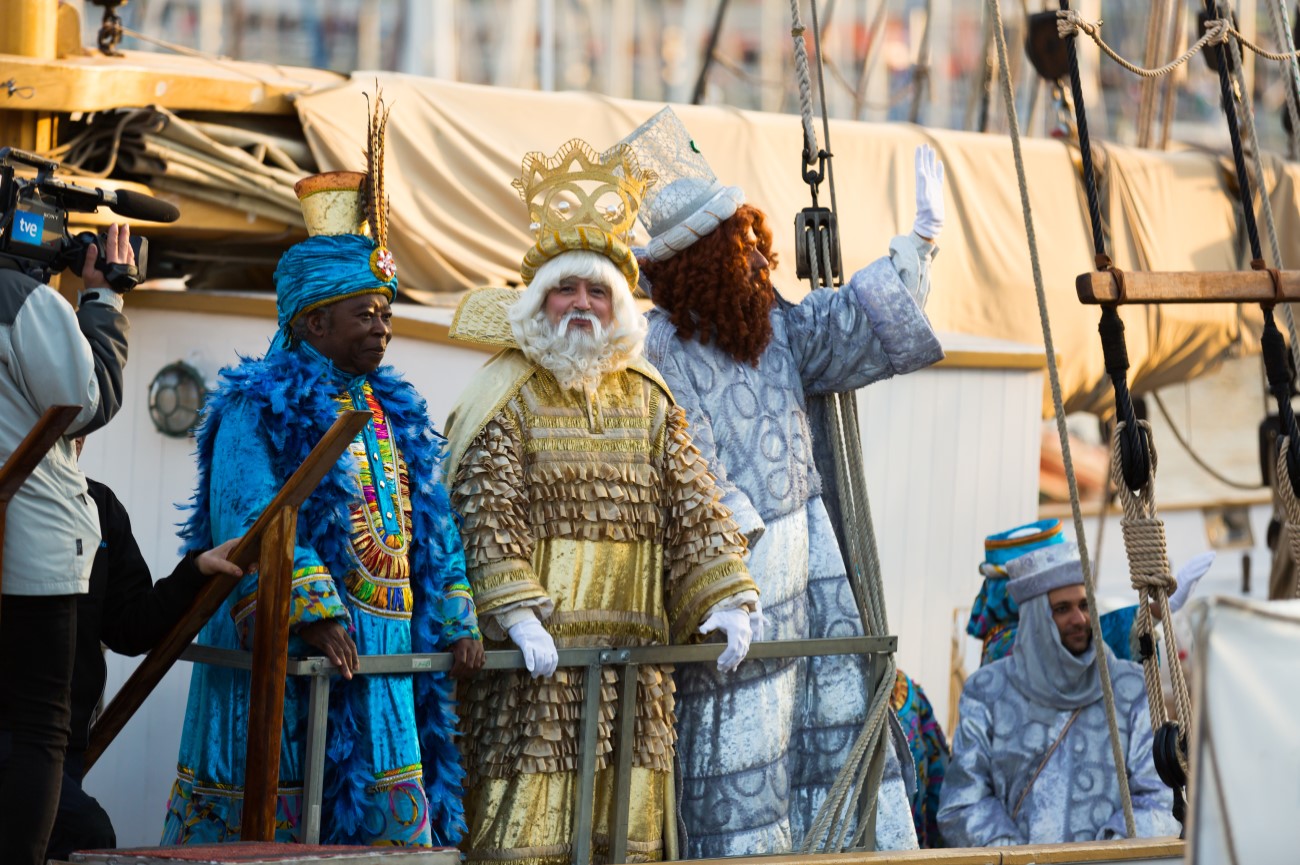 Arrival of three wise men in port of Barcelona by boat during Epiphany celebration, Catalonia, Spain
Arrival of three wise men in port of Barcelona by boat during Epiphany celebration, Catalonia, Spain- Carnival: Around February or March, Barcelona comes alive with carnival celebrations. The party takes over the whole city, but the festival’s highlight is La Gran Rua de Carnaval, a big parade typically held at Av. Paral.lel. Another popular spot for carnival is the coastal town of Sitges, which draws even more people.
- Dia de Sant Jordi: On the 23rd of April, locals come together to celebrate Catalonia’s patron saint, Sant Jordi. Colourful flower stalls take over Las Ramblas, and men come here to purchase flowers for their loved ones, similar to Valentine’s day. In return, women are meant to buy them a book as a tribute to the Spanish writer Miguel Cervantes who died on this same day.
- Festa Major de Gràcia: If you’re around Barcelona in August, you can’t miss the Festa Major de Gràcia. For about a week, the Gràcia neighbourhood turns into a stage for live concerts and firework displays. Every street is decorated with ornaments from papier-mache statues to lanterns and bunting.
- Festa Major de la Barceloneta: In the summer, every district throws its own party and Barceloneta is no exception. Around the end of September, there’s a huge party in this seaside neighbourhood which includes concerts, street parades and habaneras. Originally from Cuba, these songs turned up in Spain thanks to the old sailors. People often watch the performances with a glass of burnt rum.
- Festes de la Mercè: Every year, Barcelona hosts a party dedicated to its patron saint, Our Lady the Virgin of Mercy. The festival takes place from the 22nd of September onwards and includes concerts, fireworks, competitions and processions with large giant puppets.


